Disney Protagonists and the Seven Deadly Sins
When most of us think of protagonists from media, we don’t think of them as sinning. The very definition of “protagonist” is “the leading character or one of the main characters in a…fictional text,” the one we are meant to support. Colloquially, protagonists are thought of as “the good guys,” antonyms of antagonists and villains. Protagonists are human, or humanlike, and thus flawed. But media consumers usually expect protagonists’ moral compasses to point due north. If that compass slips and stays out of place too long, consumers feel let down.
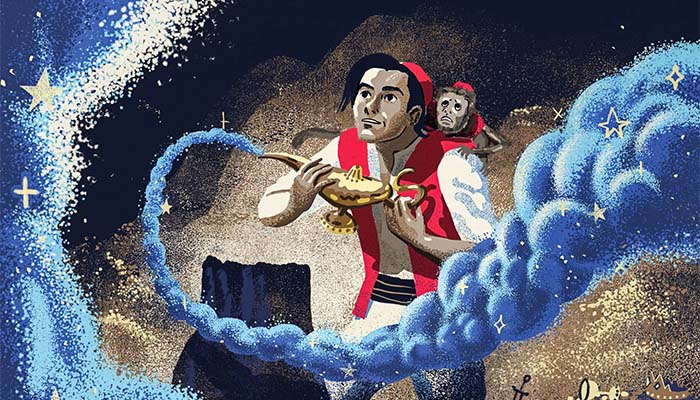
This is no truer for any protagonists than those in Disney. Walt Disney’s pantheon of heroes and heroines are protagonists viewers support from earliest years. They offer plenty of good traits to emulate–kindness, courage, tenacity, patience, and loyalty, to name just a few. However, Disney fans who start out as children grow up to be teens and adults, and as they grow, they often find their heroes are more flawed, and yes sinful, than they looked on first, second, or even tenth viewing.
Across social media, one can find plenty of Disney fans discussing the less-than-savory traits of Disney heroes and heroines. Some of these are related to the time periods in which certain films were made. Snow White and Cinderella, for instance, are routinely maligned for passivity and accused of being overly dependent on men, specifically their princes. Other criticisms are related to the worldview characters hold vs. the real world Disney fans interact in. John Smith, for example, has received heavy and continuous backlash in the almost 30 years since Pocahontas premiered, since he spends 90% of the film calling its star and her people “savages” or “savage Indians.”
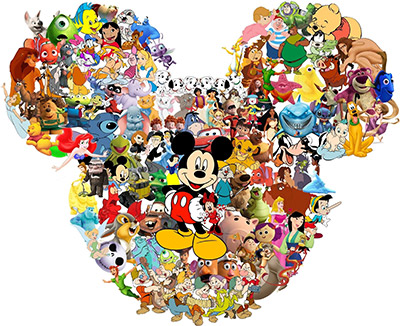
No matter what time period a viewer is in or what worldview they hold though, they will find “innocent” Disney characters can commit sins like any other person (or humanlike creature) in media. This is a new look at Disney heroes and heroines that proves they are more relatable than they might appear. It gives viewers the opportunity to keep learning from them long after those viewers have “outgrown” Disney. It may provide some sense of moral relief, as viewers acknowledge these sins and recognize yes, it is good to emulate protagonists’ positive traits. Yet failing to do so is less a permanent blight than an opportunity to examine what went wrong and try to improve.
This discussion will examine several Disney protagonists’ relationships with the Seven Deadly Sins. These sins, in no particular order, are: pride, envy, wrath, greed, lust, gluttony, and sloth. They are most commonly associated with the Roman Catholic Church, though other branches of Christianity acknowledge them as well. This is not an attempt to privilege Christianity’s teachings. Although other religions may have different terms for these sins, most of them agree that in whatever form, they lead to negative behavior and consequences. The Christian or Jew who warns against gluttony at the Christmas or Hanukkah table can find much in common with the Muslim who avoids gluttony partially through fasting on occasions like Ramadan, or the Buddhist who fasts as part of reaching Nirvana. Rather, the Seven Deadly Sins are used because they have been named and numbered, are easily recognizable in their list form, and would be recognizable as “markers” for sin for most Disney protagonists.
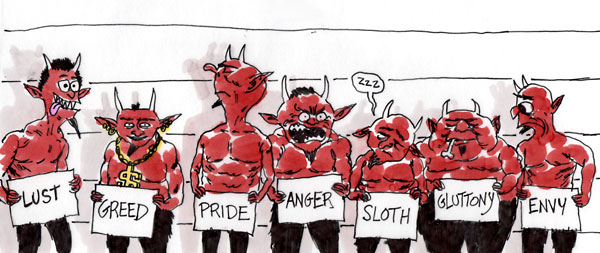
Each deadly sin will receive a pair of Disney protagonists who commit it, a male and a female. Some protagonists may not be human. This is an attempt to show sin is no respecter of gender, position, or other traits. Sin is a great equalizer. Anyone can be tempted and anyone can fall. The pairings are also an attempt to keep certain protagonists from looking more sinful than others.
The “Big Four”: Pride, Envy, Wrath, and Greed
Since there are seven deadly sins and fourteen protagonists, the sins should be divided up. There is an odd number, so splitting the sins by order of “importance” or “rank” would not be accurate. However, the sins can be separated based on where they originate and the effects they have on the protagonists.
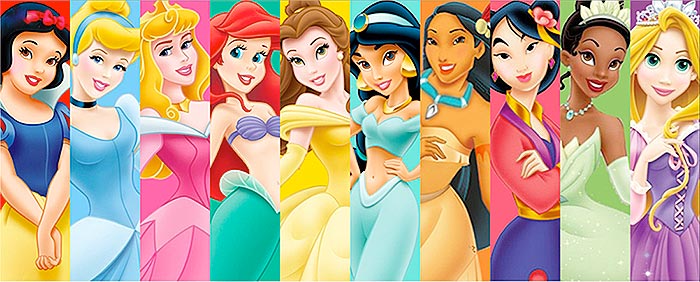
The deadly sins fit into two distinct camps. Pride, envy, wrath, and greed fit into one camp and originate from the human ego. “Ego” usually connotes pride, and pride and ego work closely together. But here, “ego” refers to self-perception, self-preservation, and self-gratification. The four sins in the first camp originate when we don’t get whatever feeds our ego. Some churches refer to these as “sins of the spirit,” or “attitude sins,” as opposed to “action sins” of gluttony, sloth, and lust (Van Gelderen 2019). Because of these sins’ direct connection to the human ego and heart, we’ll call them “the big four,” although no one sin is actually “worse” than any other.
The first eight protagonists each had a problem with one of the “big four” sins. Keep in mind, none of them took their sins to villainous levels. They are still heroes. Their desire and ability to break these sinful behaviors only makes them stronger and worthy of discussion. Additionally, no protagonist’s personal characteristics–gender, origin, color, creed, ability level, or otherwise–makes him or her more or less vulnerable to a sin. Nor are these ever the cause of deadly sins, though they may play a role in why actions that become sinful start out as justifiable.
Pride: Belle and Woody
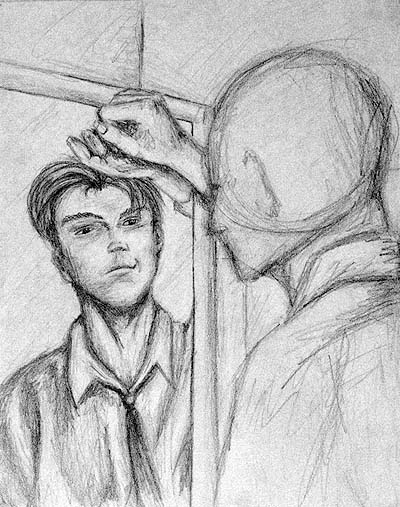
Pride is often considered the gateway to the six other deadly sins, or the “father” of all the others. Many Christians point to Lucifer, later Satan, as an example of why this is. Formerly the most beautiful of all angels, Lucifer’s pride led him to seek God’s power, and take a third of Heaven’s angels down with him.
PursueGOD.org defines this sin as “the refusal to recognize and admit the presence, equality, or even superiority of any other being.” It is “a false pathway to self-worth,” and can become inverted in false humility. That is, an excessively prideful person can believe the antidote to his or her problem is self-hatred, which then becomes a form of pride in how humble and self-effacing he or she has become. As C.S. Lewis wrote in The Screwtape Letters, if a demon can get a human to think, “By Jove, I’m being humble,” and take pride in that, the human is still committing a deadly sin and the demon has won the battle against said human’s Godlier instincts.
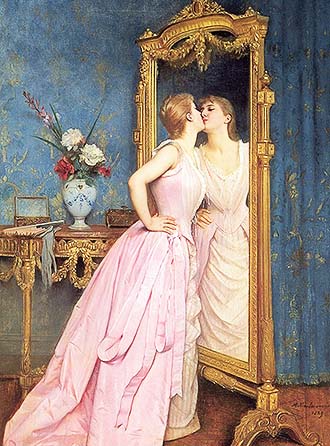
Pride can also be “a false belief in one’s own abilities, that interferes with…recognition of the grace of God.” Disney characters do not acknowledge God as such, certainly not a particular deity. But the prideful characters do fail to recognize there are “higher” and morally superior forces around them, or benevolent forces who know better than they do what they need and how they should live. They also fail to recognize the equality and worth of others.
Two of the most prideful protagonists in the Disney animated canon are Disney princess Belle, and Pixar hero Woody. These two have every reason to indulge their egos. Well before becoming a princess, Belle is widely known as the most beautiful girl in her French village. Plus, she’s brilliant, one of the only literate citizens in town according to the 2017 Beauty and the Beast remake, and less shallow than other girls her age. She is “the total package.”
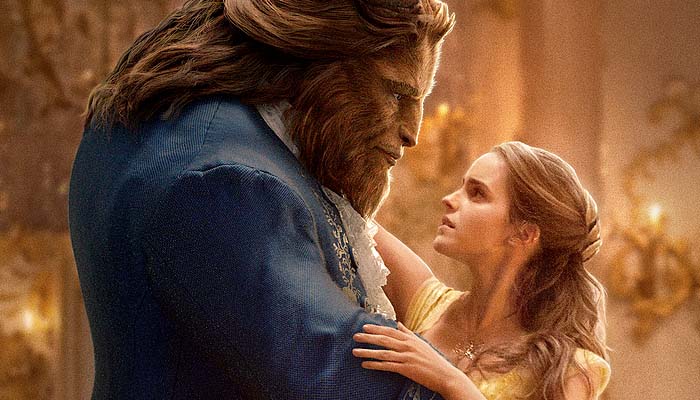
For his part, Woody is literally set up for pride. He’s the beloved favorite toy of his six-year-old owner Andy and thus, leader of the entire roomful of toys. He’s proven himself a benevolent leader, such that Andy’s army men–a literal bucket of military personnel–take his orders rather than stick to their own hierarchy. Woody’s characterization is a sheriff, a law enforcement officer whose position automatically commands respect. To top it off, according to Toy Story franchise director Lee Unkrich, “his actual full name is Woody Pride” (Twitter). Until the events of Toy Story, Woody has rarely if ever seen the inside of Andy’s toy box like a “regular” toy, or spent time on the floor or a shelf. He leads and rules from “his spot” on Andy’s bed and sleeps with him every night, set up as the favorite and never allowed to forget it.

Neither Belle nor Woody are fully conscious of their prideful tendencies. Viewers can’t call them arrogant, as they would a villain, because neither purposely or constantly uses pride to bully or berate. But as any person will when tested, both princess and sheriff give in to at least some of their more sinful instincts. Yielding lands them in trouble, some situations more severely than others. But what they learn from those situations makes them more legitimately humble, circumspect, and more heroic people.
Belle: Princess of Pride
Viewers see Belle giving in to ego a bit before the conflicts of Beauty and the Beast test her mettle. Adult Disney fans often malign her as a snob, pointing to her introductory song where she laments the monotony of her “poor provincial town.” She “wants much more than this provincial life,” and viewers can’t blame her, considering her neighbors call her “a beautiful but funny girl,” “nothing like the rest of us,” and “odd.” Some take their gossip and speculation further, claiming Belle is “crazy” like her allegedly unstable father, Maurice. In the remake, the townspeople assume Belle believes she is above them because she can read, loves to do so, and teaches village children.
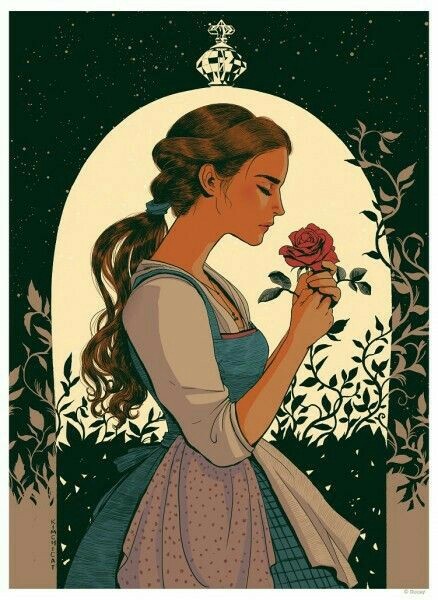
One could argue that Belle’s pride, if it exists, is a defense mechanism. After all, everyone except her immediate family and the bookseller backhandedly compliments, insults, or gossips about her. No one makes any effort to get to know her or come into her world. Since most of the townspeople are adults, one assumes they could choose to learn to read or discuss books or Belle’s other observations with her, but would rather speculate and pout.
The problem is, such friendship requires reciprocity, and Belle is either unable or unwilling to reciprocate. Her constant desire for something “more than provincial life” comes across as judgment against her neighbors. It doesn’t help her case that she barely says more than “bonjour” when walking through town, even to children (she pats one’s head in the animated version and then keeps walking and reading, right through a jump rope game). Viewers are left to assume she does this every day. Belle complains and feels sorry for herself but doesn’t interact and doesn’t consider whether she could make an effort to change.
These instances of ego are fairly easy to forgive, considering we immediately see Belle showing support and compassion for her dad, and putting off Gaston, whose own ego has completely taken over and who deserves to be exposed as an antagonist. It’s not until Belle actually gets the “more” out of life that she wants, and has to handle the consequences, that viewers get to see her recognize her attitude, learn from it, and grow. Belle gets the opportunity to live in an enchanted castle and gains allies who treat her with compassion, understanding, and friendly curiosity. But this only happens after she becomes the Beast’s prisoner, and agrees the arrangement is permanent. Belle has traded the comfort of home and the security of her father’s love for a nebulous ideal, based on the subconscious belief that what she had wasn’t good enough.
Prisoner of a Beastly Ego
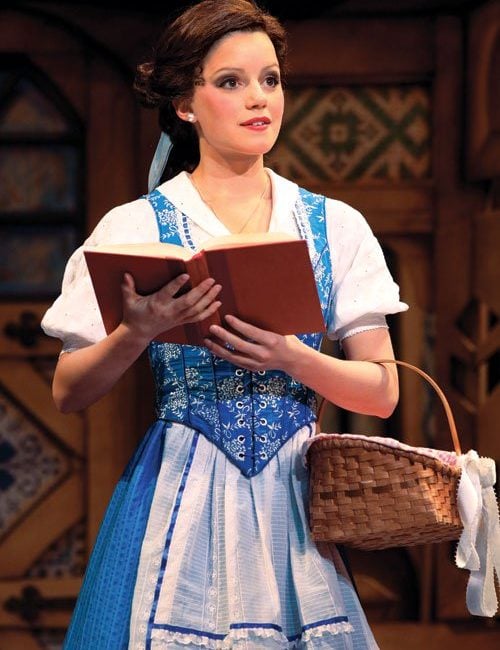
Belle’s ego continues blocking growth as she adjusts to life with the Beast. In the Broadway musical, she clings to false humility at first, singing, “I don’t deserve to lose my freedom in this way, you monster!” Yes, the Beast is a monster, with an explosive temper and selfishness to rival the most spoiled and pampered of royalty. Yes, he views Belle as less than human. But viewers may wonder, why does Belle think she doesn’t deserve to lose her freedom? She admits she made the choice of her own free will (Beauty and the Beast track 7). Moreover, the word “deserve” indicates Belle may think she’s too good for trials to befall her. Again, she doesn’t consciously mean this. But she has always been considered beautiful and brilliant, an ideal person. More importantly, she has chosen to spend her time and energy with people like her father and the bookseller–fellow outcasts–and with books and deep thoughts rather than shallow pursuits like suitor-chasing. Therefore, Belle’s first reaction to captivity leans on false humility.
As the Beast pushes Belle to her limits, her mask slips off. When the Beast forbids her to eat dinner because she refused to join him, Belle will not consider his point of view. “Why don’t you give him a chance?” the wardrobe Madame La Bouche asks. She might be excusing her master’s beastly behavior, but on the other hand, La Bouche has known the Beast for more than 11 years. She’s probably aware that, given time to calm down, he might reopen the conversation and treat Belle more civilly. But Belle isn’t ready to give the Beast a second chance. “I don’t want to have anything to do with him!” she exclaims. Mere hours later, after flouting explicit instructions not to enter the castle’s west wing, she declares, “Promise or no promise, I can’t stay here another minute!”
Again, Belle’s behavior is understandable. But it is not necessarily excusable. Part of the trouble she’s in happened because she disregarded explicit and reasonable instructions–the castle is home, but do not enter this one area. In entering the west wing then, Belle yielded to her ego more easily and dangerously than any other time in her story. One can hear echoes of Genesis 3, when God gave Adam and Eve the entire Garden of Eden to partake in except one tree–the tree from which they, out of conviction they knew better, chose to eat. Additionally, note how Belle speaks to Madame La Bouche and the other servants. “I don’t want anything to do with him,” “I can’t stay here.” She has no concept of those around her. Every statement is an “I” statement. Belle is wholly focused on how she feels, how the situation affects her, and what she can do to keep herself safe. Again, it’s understandable, but it disregards the presence and equality of the servants, who have been nothing but kind. Belle treats them as guilty by association.
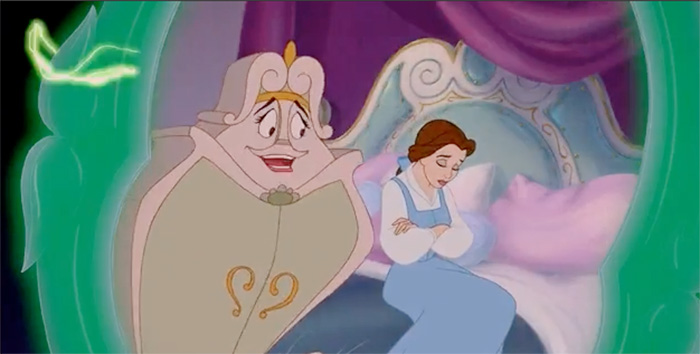
Unlocking True Humility and Her Crown
Fortunately for Belle, she’s open to change. The impetus for that change takes the form of danger. When Belle runs away, a pack of wolves attack her. To her credit, she tries to fight them off and does fairly well for a teenage girl armed with nothing but a large, sharp stick. But it is the Beast who comes out of nowhere to save her life, sustaining severe injury and unconsciousness in the process. Belle immediately loads him onto her horse and leads the way back to the castle, giving up her comfort and risking severe cold exposure since she has neither the Beast’s fur nor his more adequate winter clothing and shoes. Later, she offers him a sincere “thank you” and tends his wounds despite the Beast’s pain-fueled outbursts.
The wolf incident marks a turning point for Belle, not only in understanding the Beast but dismantling her prideful tendencies. Remember, the sin of pride involves failure to recognize presence, equality, and sometimes superiority of other beings. Here, Belle has recognized all three in the Beast. She understands he is present and deserves recognition as a housemate if not superior (in the sense that he has been treating her as a prisoner and subordinate, which takes advantage of her). She understands the Beast is her equal, in that both are in pain and need compassion. Most important, Belle now recognizes the Beast can be a good person, and in some cases superior. Had he not been willing to save her life, Belle would have died, from exposure if not the wolf attack. In this case, Belle acknowledges superiority is a sign of strength she doesn’t possess.
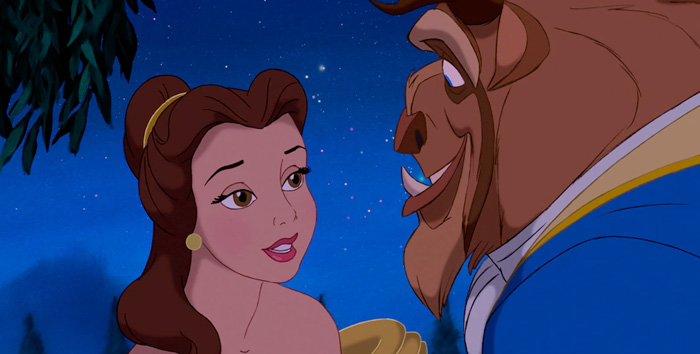
Belle continues this trajectory throughout Beauty and the Beast’s second half. Over time, she relates to Beast more and more as an equal human. For instance, she’s at first shocked when she sees the Beast diving into a bowl of soup face first. But whereas before, Belle would’ve acted disgusted, she smiles in understanding. When she sees Beast’s paw makes spoon usage prohibitive, she compromises. She tilts her bowl toward him, indicating they can neatly drink their soup instead. Later, she’s thrilled over the Beast’s gift of his library. “It’s wonderful…thank you so much,” she says, in a tone near jubilant tears. Viewers are reminded, no one has ever responded to Belle’s deepest interests this way before. Even though her father clearly loves her, he probably couldn’t have afforded to indulge her the way he wanted or felt she deserved. Therefore, the Beast’s gift becomes an act of material love and an act that says, “I see you. I see what brings you joy, and I see that your good heart means you deserve more joy in your life.”
However, it is not until the film’s climax that Belle unlocks the final piece of true humility. This happens in two pieces. The first occurs when she opens up to Beast, revealing a vulnerability she had kept guarded even as their love blossomed. “I miss [my father] so much,” she admits. She then pleads to see him “just for a moment.” It’s an act of self-lowering–we have never seen the self-assured Belle plead for anything. But the Beast immediately responds, and when his magic mirror shows Belle Maurice is ill and stumbling through the forest alone, Beast doesn’t hesitate to release Belle from her imprisonment, at great emotional and personal risk. Once again, Belle shows gratitude–“Thank you for understanding how much he needs me.” Viewers who have “kept score” will notice how much she has leaned on gratitude during the film’s second half. They may also notice her exact statement–“thank you…he needs me.” The situation is not about Belle anymore. Here, she has made a truly selfless choice. She gives up love, understanding, and companionship for the sake of someone else. She also humbles herself in that she risks returning to the isolation and shunning of her village.
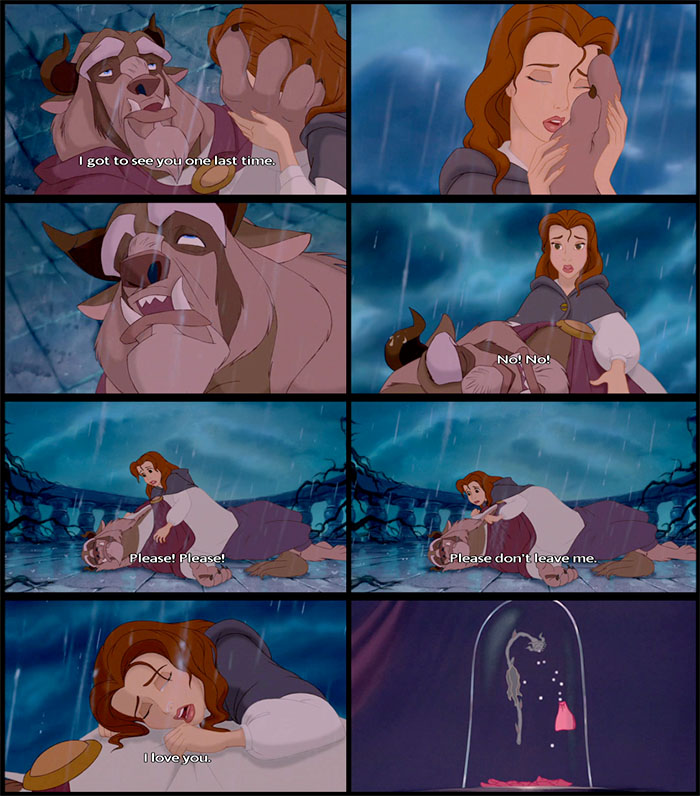
Belle nurses Maurice back to health and does her best to keep villainous Gaston and his mob from going after Beast with murder on their minds. Even locked inside an insane asylum’s transport, her first concern is for Beast and the castle denizens, not herself. But it is not until she finds Beast dying on the castle roof that she makes the ultimate move toward humility. In full view of the castle’s servants–“public”–she cries, allowing herself to lose control. She again lowers herself, physically and emotionally, pleading, “Please don’t leave me. I love you.” That last statement breaks Belle’s pridefulness for good. It communicates not only her ability to put others first, but her ability to act out of the highest virtue, love. Everything she has done for Beast is out of sacrificial love for him. As 1 Corinthians 13 says, Belle has learned love’s patience, kindness, and lack of pride and self-seeking behavior. She has lavished it on others, as a princess must lavish it on her kingdom. Though Belle always acted with the acumen, elegance, and wit of a princess, she has now grown into the wisdom, compassion, and true selflessness a monarch also needs.
Woody: A Law Unto Himself
Unlike Belle, Woody Pride of the Toy Story franchise doesn’t start out looking egotistical. He presents as a natural, and good, leader. Viewers could argue he never asked to be a leader. If anything, Woody has one up on Belle because he has already chosen a humble path when Toy Story begins. He could’ve been a tyrant.
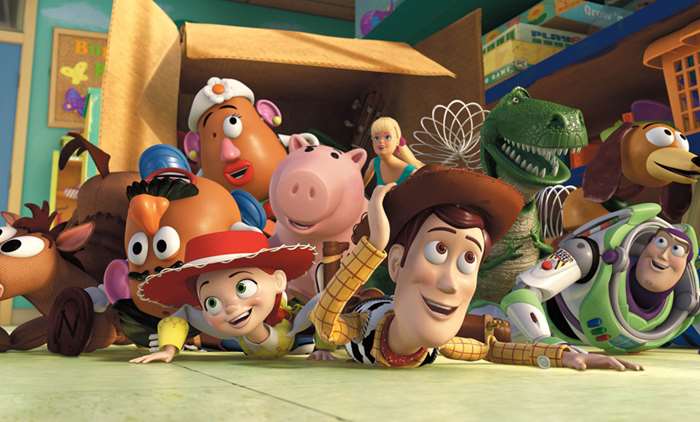
Instead, the other toys are Woody’s friends and his team. When “the coast is clear” and the toys can come alive, everyone is eager to spend time with him. Woody encourages Rex while the latter practices his lackluster roar–“I was close to being scared that time.” He compliments Etch-a-Sketch when the two engage in “gunplay”–“Etch, you’ve been workin’ on it…fastest knobs in the West, huh?” He assures girlfriend Bo Peep he’ll steal away later for a romantic moment, and treats Slinky as a checkers buddy, confidant, and second-in-command. When Andy’s birthday party is announced a week early due to an impending move, Woody urges the other toys not to panic and reminds them their first priority is being “here for Andy when he needs us [not] how much we’re played with.” Having said that, he does let Sarge and the Army men “establish a recon post.”
As with Belle, Woody’s first indicators of pride are not only understandable, but perhaps excusable. When Sarge announces Andy has received innocuous birthday presents, the toys think they’re off the hook. But then Mom pulls out her surprise present–Buzz Lightyear, the newest and coolest toy on the block. Astronaut Buzz has everything–wrist communicators, karate-chop action, a working helmet, a laser, and “space wings.” He outstrips Woody in the one area the latter could compete; Buzz’ voice box is technologically advanced, clearer, and has more phrases. As Mr. Potato Head observes, Woody only has a pull string that “sounds like a car ran over it.”
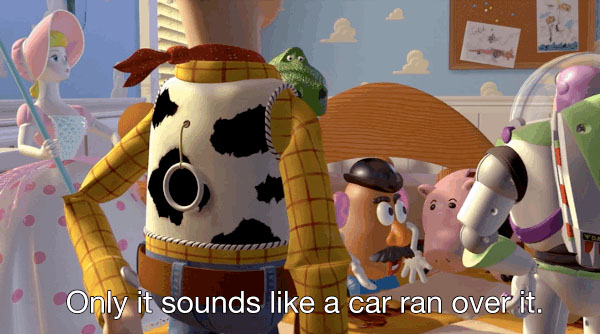
All the toys are impressed with Buzz, fawning over all his accoutrements and asking questions like, “Man, the dolls must really go for you, can you teach me that?” Rex buys into the idea that Buzz is an actual Space Ranger, asking what the job entails. Slinky gives an impressed, “Golly bob howdy!” These are toys that just about an hour ago, were distraught over the idea of anybody new shaking up the status quo. Now they have pushed Woody out of their interactions. They’re not only welcoming Buzz, which Woody encouraged. Woody is justifiably upset because his friends are elevating Buzz to a position he didn’t earn and a Space Ranger identity that isn’t real.
Above the Law, Ready to Fall
If Woody’s pique stopped there, he wouldn’t be guilty of a deadly sin. He could have gone to Buzz in private and expressed his feelings. Instead, he stews and engages in actions that prove this sheriff thinks he’s above toy law. In a montage, he refuses to participate in daily room activities like exercise and play because Buzz is leading them. He shoves Slinky off the bed while Buzz pets and grooms him. He also threatens and mocks Buzz, saying things like, “You stay away from Andy. He’s mine,” and, “You actually think you’re the real Buzz Lightyear?”
At this point, like Belle, Woody’s pride crosses from the understandable to the sinful. He won’t recognize Buzz’ potential as an equal or his strengths. Worse, Woody won’t recognize Buzz’ presence, as a potential co-leader or otherwise. He doesn’t want Buzz in the same room, which sets him up for a fall.
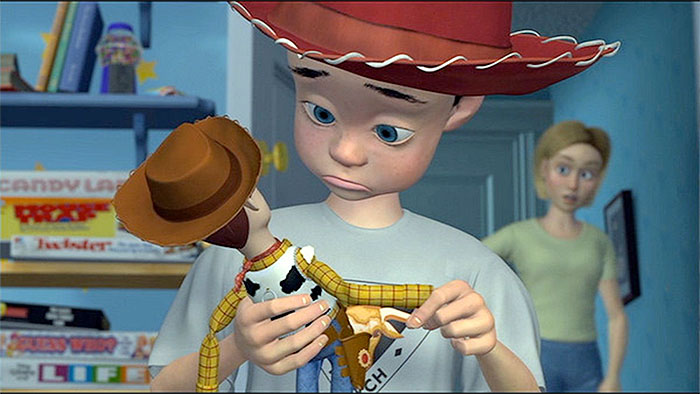
After a long day of packing, Mom treats Andy to dinner at Pizza Planet, and tells him he can bring one toy. Woody uses the last of his patience to leave Andy’s picking him up to chance. But when the Magic 8 Ball predicts “don’t count on it,” he engineers a plan to knock Buzz behind the desk and out of Andy’s sight, so Woody will be his default choice. For all his scheming, Woody doesn’t calculate the swing of Andy’s gooseneck lamp. It propels Buzz out the window, and possibly into the yard of Sid, the toy-torturing kid who lives next door. The other toys deduce Woody pushed Buzz and refuse to believe it was an accident, calling for his “blood.” Andy does choose Woody to go to Pizza Planet, but the victory is hollow.
When Woody finds Buzz has hoisted himself into Mom’s van, the latter is in no way ready to make up. Actually, Woody lets his ego win again when the two get into a fight in a gas station parking lot. Begrudging cooperation lets them hitch a ride on a Pizza Planet delivery truck, but getting back to Andy will be fraught with obstacles that will push Woody’s ego to its limit.

Through some bizarre coincidences–or perhaps the toy universe’s version of Providence–Woody and Buzz end up stuck in a claw machine. Toy-mutilating Sid wins them as “double prizes” and takes them home to “play.” True to his vice, Woody’s first concern is for himself–“We are gonna die. I’m outta here!” The only reason he doesn’t leave Buzz to rot is because he knows if he shows up in Andy’s room without Buzz, he might face a fate worse than Sid. This compounds Woody’s selfishness, in that he’s only using Buzz to win back favor and position, and has no compassion for another toy who might be frightened and confused. No matter that Buzz isn’t acting that way; it’s jarring to see Woody, who once treated fellow toys with respect, react so callously to shared travail.
Falling With Style, Earning His Tin Star
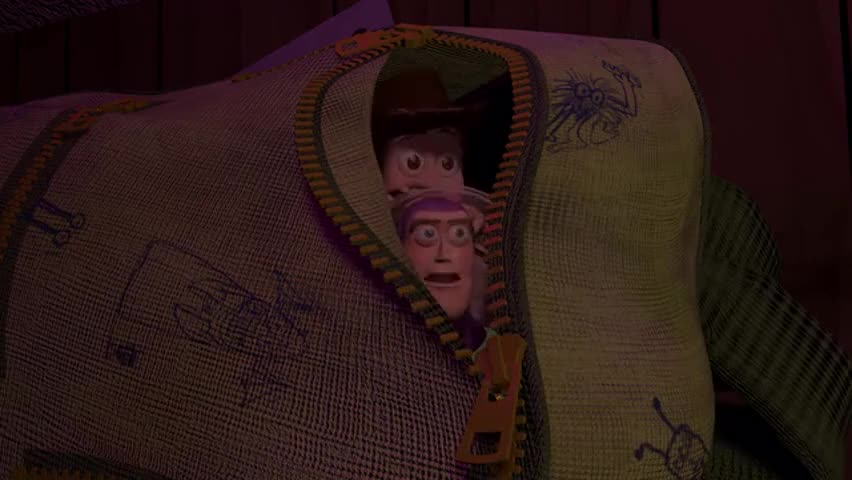
Woody continues feeding his ego the longer he and Buzz are trapped in Sid’s room. He assumes Sid’s other toys are cannibals because they are ugly, pieced-together, or random collections of parts, and because he saw them “slurp” another toy under Sid’s bed. He doesn’t consider they were protecting that toy. Later, when Buzz is depressed over finding out he really is just a toy–and a non-flying one at that–Woody is unsupportive. He only pretends he and Buzz are friends so Andy’s toys, communicating from the opposite window, will be willing to welcome him back to Andy’s room.
When the other toys discover Woody was using Buzz’ unattached arm as a stand-in for him, they assume Woody has finally “killed” Buzz and cut off communication. Woody is crushed. Yet he still isn’t ready to take ownership in his situation until Sid puts his master plot into action. Sid has finally received “The Big One,” the crown jewel in his collection of explosive rockets. Spotting Buzz amid the carnage of his room, he declares, “I’ve always wanted to put a spaceman into orbit.” Sid straps Buzz to the rocket, prepared to blow him up that minute. Fortunately, a downpour delays the launch, and Buzz and Woody share a night as toy “death row inmates,” so to speak.
At this point, Woody begins understanding Buzz’ depression and hopelessness is real. He urges Buzz not to give up–“C’mon, get up here and get this toolbox off me…I’ll get that rocket off you and we’ll make a break for Andy’s house!” Buzz, however, has reached rock bottom, ready to “die.” When Woody says he’s not thinking clearly, Buzz counters, “No…you were right all along, I’m…a stupid little insignificant toy.”
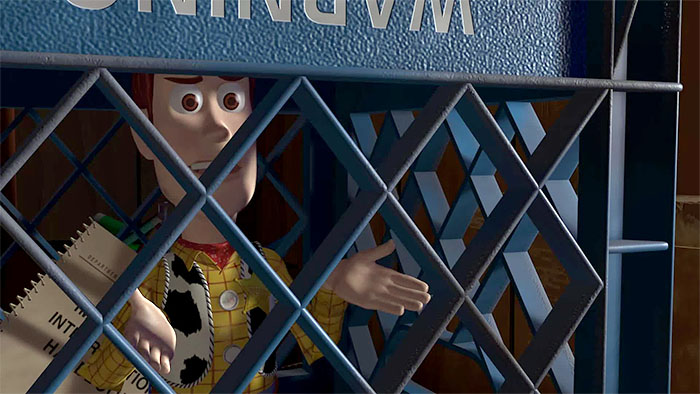
The Woody viewers have seen through most of the film would gloat at hearing Buzz admit his toy status. But our sheriff has finally gotten still and quiet enough to think through his own flaws and learn some valuable lessons, which he shares with Buzz. “Over in that house is a kid who thinks you’re the greatest, and it’s not because you’re a Space Ranger, Pal. It’s because…you are his toy,” Woody says. He extols Buzz’ coolness, the features and accessories he once mocked, and admits, “What chance does a toy like me have against a Buzz Lightyear action figure? Why would Andy ever wanna play with me when he’s got you?”
Unlike with Belle, this doesn’t read as false humility. This is Woody admitting he is not the coolest toy around and is capable of being less than the favorite. While it’s difficult for viewers to see Woody so down on himself–remember, he is a good-hearted toy with a lot of love and leadership to give–his words indicate he recognizes Buzz’ presence, equality, and superiority in the sense of needed strength.
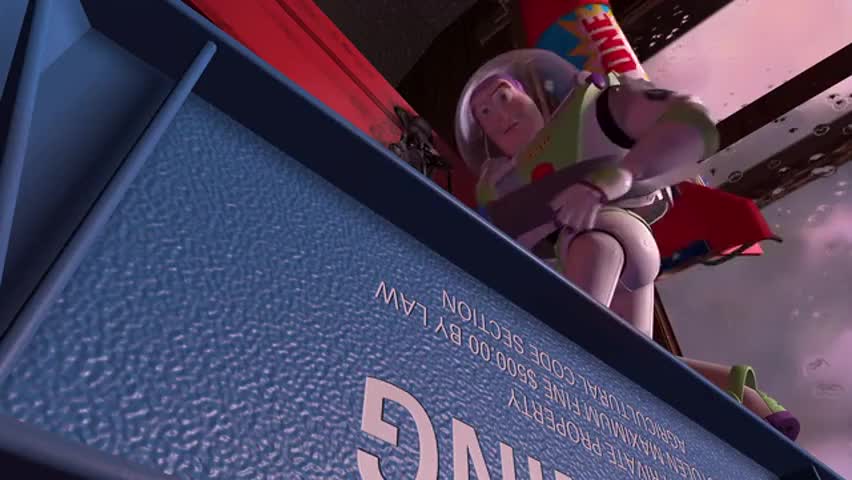
Perhaps it’s this honesty, and not Woody’s pep talk, that Buzz needs to pull himself out of his slump. “C’mon, Sheriff, there’s a kid over in that house who needs us,” he reminds Woody. By unspoken agreement, the two cement their friendship and launch their escape, only for Sid to wake and remember it’s launch day. He grabs Buzz and carries him to certain doom, giving Woody time to gather the toys he once shunned and engineer a full-scale rescue mission. “If [this] works, it’ll help everybody,” he promises, underlining his new commitment to putting other toys first.
The rescue mission–full of intimidating voice box work, toys rising from the earth, and zombie-like movements–goes off beautifully. And when Woody accidentally lights the rocket Buzz was strapped to, forgetting that rockets explode, Buzz holds his friend up while using his space wings as leverage to disengage from the rocket and keep them airborne. “This is falling with style!” he exclaims when Woody exults that Buzz is flying, giving a nod to Buzz’ own lessons regarding ego. When both toys hit Andy’s box of favorite things in the back of Mom’s minivan and Andy is joyfully reunited with them at last, their new friendship and humility toward each other make the ending that much sweeter.
Envy: Ariel and Wreck-it Ralph
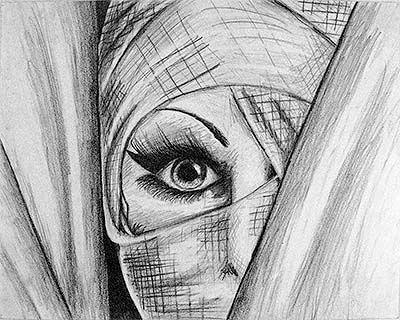
The next deadly sin is envy. Envy closely relates to pride, involving a desire for what others have, which feeds the ego of the one who desires. But envy is its own deadly sin and causes its own consequences. Universal Life Church defines it as “the desire to have a quality, possession, or other desirable attribute belonging to someone else.” Christianity.com calls the Biblical definition of envy, “[The] sin of jealousy over the blessings and achievements of others.” Merriam-Webster’s dictionary points out envy can be different from ordinary jealousy in that it involves “painful or resentful awareness” of other people’s real or perceived advantages that you don’t have, and a consuming desire to gain those.
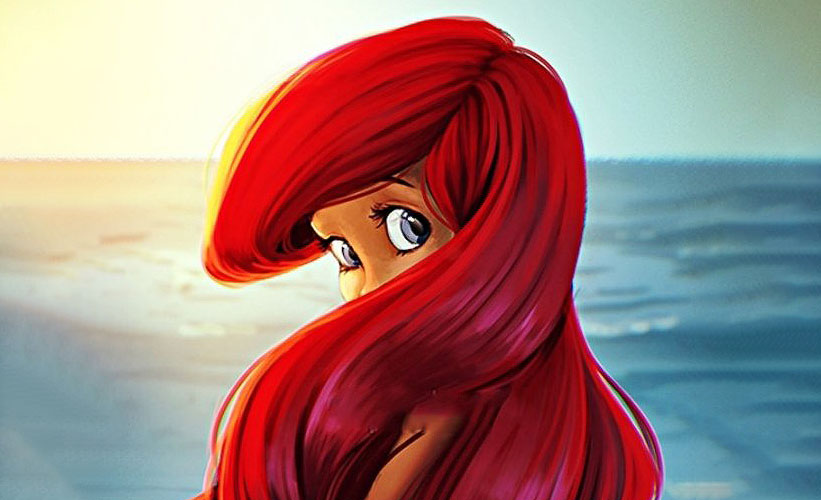
Out of the Disney heroic canon, the two most envious protagonists are Ariel and Wreck-it Ralph. Both have understandable reasons for envy, and were arguably set up in-story to experience it. Ariel is a mermaid princess who has everything she could ever want under the sea. Still, she envies humans and their world, lamenting over her desire to be part of it, to the point of getting herself in irreversible trouble. Without a major plot twist, Ariel’s deadly sin might have taken her down for good.

Wreck-it Ralph is not royalty, and unlike Ariel, he doesn’t have a powerful or desired position in his world of video games. Therefore, he’s more set up for envy because he has a lot more to desire and more to lose. Like Ariel, Ralph isn’t conscious of his envy or the sinful way he handles it. Nor does either protagonist hurt anyone on purpose in their quest to handle envy. But when the green-eyed monster gets its claws into Ralph and Ariel, they’ll have to fight for gratitude in order to disengage.
Ariel: “I Want More”
The desire for “more” is the first thing viewers learn about Ariel’s character when they watch The Little Mermaid. When viewers meet her, Ariel is exploring a sunken ship in search of lost human treasure. Ariel’s desire goes much deeper than treasure, though. When she expresses a desire for more, she means, more of the world as she knows it and what might be beyond what she knows. She means more of the intangibles–more experiences, more independence, more knowledge, more friends, more room to grow.
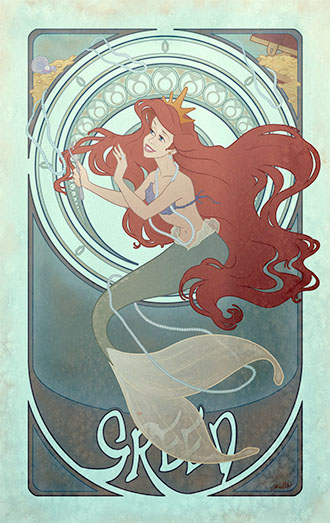
None of these desires are sinful. They are natural and, if tempered with virtue, good and right. In Ariel’s case, they are understandable, too. Ariel is a princess and thus, privileged in her world. But with that privilege comes royal obligation and heavy sheltering. Ariel is expected to go where she’s told, stand or sit where she’s told, sing or speak when she’s told. If she doesn’t, it reflects badly on her father King Triton, the royal court, and the kingdom of Atlantica, as we see when she fails to show up for a concert at which she was the featured soloist. Sebastian’s muttered comment about Ariel needing to “show up for rehearsals once in a while” indicates this wasn’t the first time she’s been late or absent.
As for the sheltering part, Ariel is overprotected, almost to the point of stifling. Triton forbids Ariel to go to the surface, for fear humans will see her and she will be “snared by some fish-eater’s hook.” This is reasonable, as is Triton’s frustration at Ariel’s disobedience. It’s particularly understandable once viewers know, from prequel Ariel’s Beginning that our princess is most similar in looks and personality to her mother Athena, whom pirates murdered. But Triton’s stern response, plus his refusal to listen to why Ariel is so fascinated with the human world, feeds Ariel’s envy and tendency to rebel.
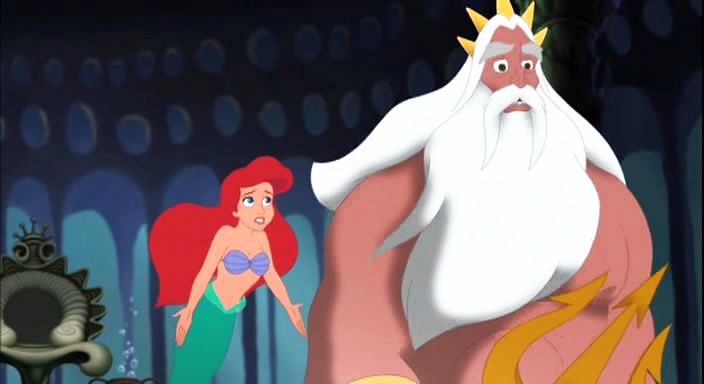
All this said, it would be incorrect to blame Triton for Ariel’s behavior. She is sixteen years old, and while she’s still a child, she is more than old enough to take responsibility for her actions. Granted, she may not realize the full impact of those actions. Psychology tells us the human (or mermaid) brain isn’t fully developed until the age of 25, and teenagers in particular have a hard time regulating their emotions. Ariel has about a decade to go before we could consider her a “responsible adult.” But like fellow princess Belle, she’s ready to face her flaws and the consequences thereof. Plus, because Ariel is more impulsive than Belle and wears her envy of the human world on her sleeve–er, fin–her journey toward virtue becomes more overt.
Vexed and Voiceless
The more Ariel desires to learn about the human world, the more Triton, Sebastian, and “wiser” voices push back. These older and wiser influences mean to quell her covetousness. But in a dark example of reverse psychology, the more these voices, Triton in particular, tell Ariel to ignore the human world, the more she longs for it. Each time she sates her longing a little bit–say, with a human object–the more painful and resentment-filled her envy becomes.
Envy is a deadly sin largely because of its resentment component, and by The Little Mermaid’s halfway point, Ariel has plenty of resentment to spare. Her solo “Part of Your World” drips with it, as she sings about a desire to pay a great price to “spend a day warm on the sand,” and stop being reprimanded and stifled. She’s “sick of swimming” and laments, “When’s it my turn?”
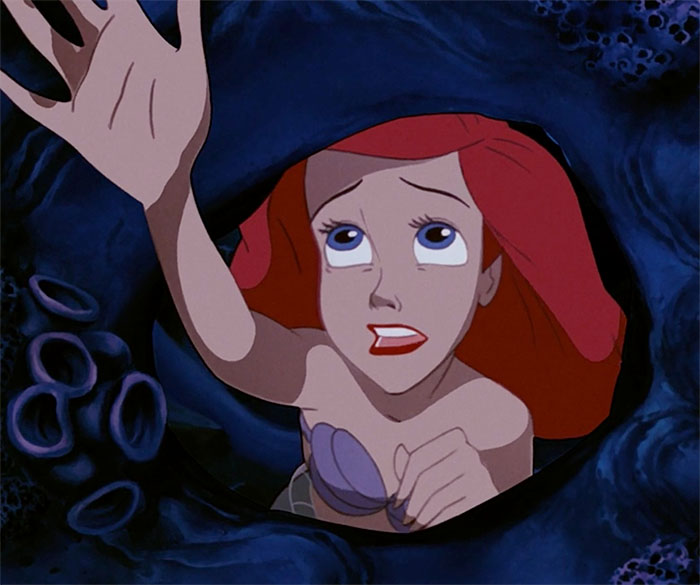
If Ariel had stopped at resentment, there would be hope for her envy to be stopped. She and Triton might’ve come to a healthy compromise. But when he discovers Ariel’s secret grotto of human treasures, including a statue of Prince Eric, Triton loses his temper. He destroys Ariel’s treasures in a rage, leaving her in the grip of desperate heartbreak and full resentment.
Ariel’s envy of the human world still stands, but once Triton destroys her treasures, she experiences a new level of it. She goes from a painful but nebulous envy of the human world itself, to a concrete, excruciating envy based on the love and freedom she believes she can only find there. Ariel believes she has lost all hope of love, freedom, and understanding in her own world. Therefore, she must get these things from humans, specifically Eric, to be happy. Never mind the human world is unknown, humans could still be dangerous, and she and Eric have never so much as said “hello.”
Ariel’s envy, combined with her heartbreak, leads her into the grasp of sea witch Ursula, who gives her the sympathy she needs. Note though, that Ursula’s sympathy isn’t constructive. That is, Ursula doesn’t sympathize with Ariel as a young girl who may not know what she’s asking for, but has real emotions under the surface.
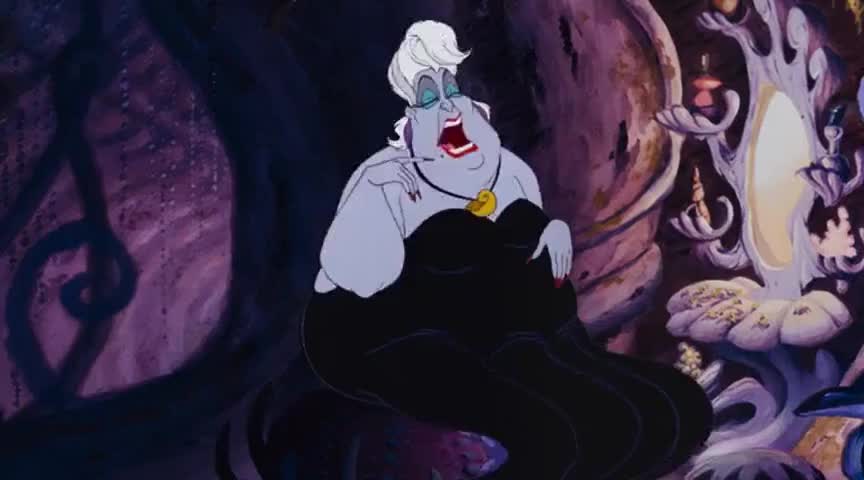
True to her villainous nature, Ursula uses her own, more unchecked, deadly sins to capitalize on Ariel’s envy. She feeds the envy, saying things like, “[Eric] is quite a catch, isn’t he,” and telling Ariel that even if she became human and never saw her family again, “You’ll have your man.” In other words, “You’ll give up what you have, but you’ll have what you want.” Ursula makes Ariel into a victim, not only of her own sins but of others’ real and perceived ones, calling her a “poor unfortunate soul” and saying she has “no one else to turn to.”
With Ariel’s covetousness properly sated, Ursula moves in for the kill. Having lured Ariel with a spell that will turn her human, Ursula demands payment for her services. She wants Ariel’s voice as collateral, which is a bold and deliciously evil move. Ariel’s voice is gorgeous, the seat of her greatest talent and joy. Ariel being a minor with no resources outside her father’s wealth, she has nothing else physical to give as payment. Most disturbingly, this payment sets Ariel up to fail before she’s begun her quest. If she’s voiceless, she can’t communicate who she is, what happened to her, or how she feels toward Eric.
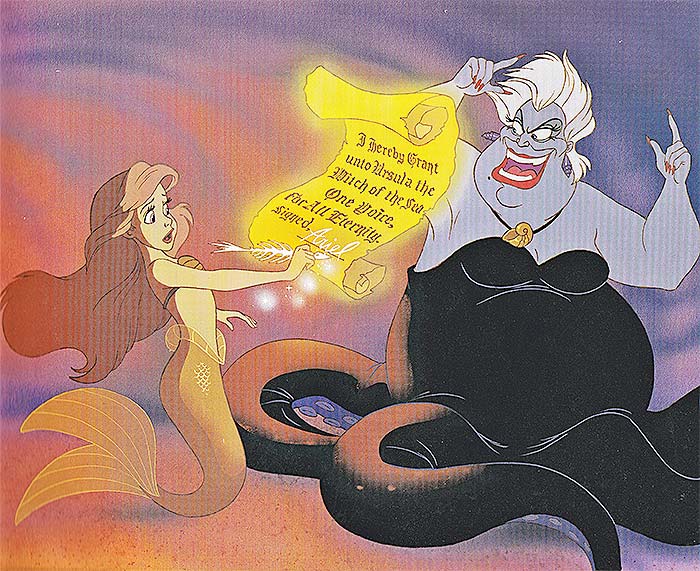
Ursula’s taking of Ariel’s voice is symbolic and connected to Ariel’s deadly sin, too. It might seem odd for Ursula to care whether Ariel is covetous toward Eric and his world or not. After all, Ursula is guilty of at least a few deadly sins herself–wrath, greed, and judging from her first scene, not a little envy of Triton and his court. But nobody knows deadly sin, or how to use it against a protagonist, better than a villain. Ursula proves it when she not only takes Ariel’s voice, but gets her to sign a contract stating said voice is Ursula’s for the duration of their deal. Should Ariel fail, she will never get her voice back. The voice will remain Ursula’s to do with as she likes, while Ariel will belong to her, body and soul.
If Ariel remains voiceless, Ursula knows she can never become anything other than the envious, childish girl she is now. She will never be a part of anyone’s world again. The resentful pain Ariel started with will become the place she lives and can never escape. The difference is, the pain and resentment will be geared toward real love, real freedom, what she could have had. Ariel will be alive, but incapable of feeling what others can feel. She will experience purgatory if not outright hell.
Content and Doubly Crowned
Once Ariel gets to the human world and establishes rapport with Eric, she forgets her envy. She throws herself into enjoying what she has, from luxuriating in a human bubble bath to wringing every drop of experience from a tour of Eric’s kingdom. Viewers indulge in joyous giggles with Ariel as she drags Eric from attraction to attraction, soaking up her first puppet show, bouquet of flowers, baguette, and dance in the town square.
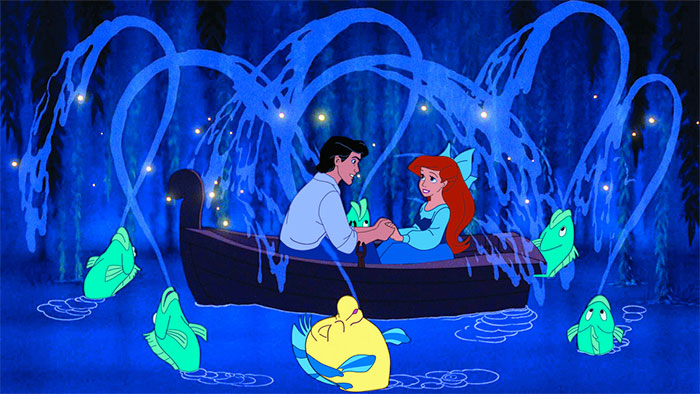
When Eric takes her on a boat ride and they begin to delve into the deeper parts of each other’s personalities, viewers hope Ariel and Eric can find true love and outwit Ursula. After all, they clearly have chemistry. And despite Ariel’s covetousness and Eric’s apparent focus on outward appearances, both are kind, potentially selfless people whose flaws could be overcome. But it is not until Ariel has to face her flaws that she can grow into a mermaid, and a person, who’s ready to claim true love and the title “princess.”
Ariel grows quite a bit during her time with Eric. She uses her rebelliousness and courage to stall Eric’s wedding to “Vanessa,” a disguised Ursula who uses Ariel’s voice to gain Eric’s affections. Ariel’s major part in this involves grabbing and breaking Vanessa’s seashell locket, releasing her voice and recapturing it in time to tell Eric the truth. Unfortunately, Ariel doesn’t get the words out before Ursula’s third day sunset deadline. She turns back into a mermaid in front of Eric. Ursula seizes her, ready to enforce the contract, only for Triton to swim up and command, “Ursula, stop!” He tries to destroy the contract, with Ariel pleading that she didn’t mean to sign it and didn’t know what she was getting into.
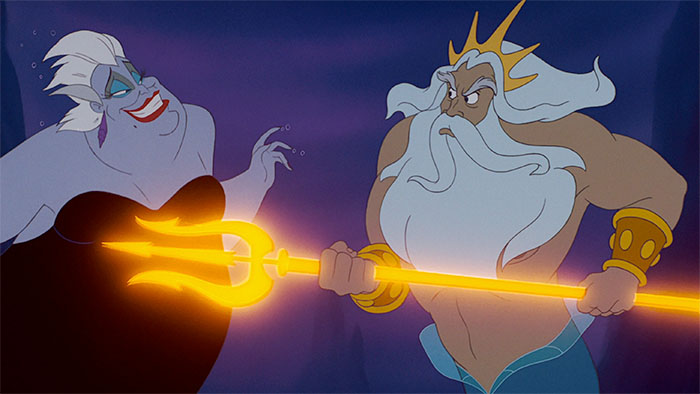
Ariel’s remorse and repentance is probably sincere. But many viewers argue that said repentance is two seconds long, and only happens after Ariel is “caught” in her misdeed, so it doesn’t count. This argument is justified. Like a young child in trouble, Ariel just wants the pain and consequences to go away. While that’s understandable, it’s not the mature reaction she needs. That comes a moment later, when Triton strikes Ariel’s name from Ursula’s contract, puts his own name in, and becomes one of Ursula’s polyp slaves. He has sacrificed himself for his daughter, who goes into the final battle determined to save her father and kingdom, not herself or the human she just met. The Little Mermaid doesn’t spell this out, but perhaps appreciation for her father’s sacrifice gives Ariel the real daring and chivalry to help Eric win the final battle.
The movie takes longer to show the good consequences of Ariel’s realizations. Ariel is having a pensive moment on her favorite rock at the surface while Triton, restored after the defeat of Ursula, muses over the story’s events. “She really does love [Eric], doesn’t she?” he asks Sebastian, accepting his daughter’s maturity. Because of this, and perhaps because of Ariel’s emotional growth, Triton grants her deepest desire and turns her permanently human. The last scene is Ariel and Eric’s wedding, wherein Ariel expresses sincere love for her father and Eric bows to him out of respect.
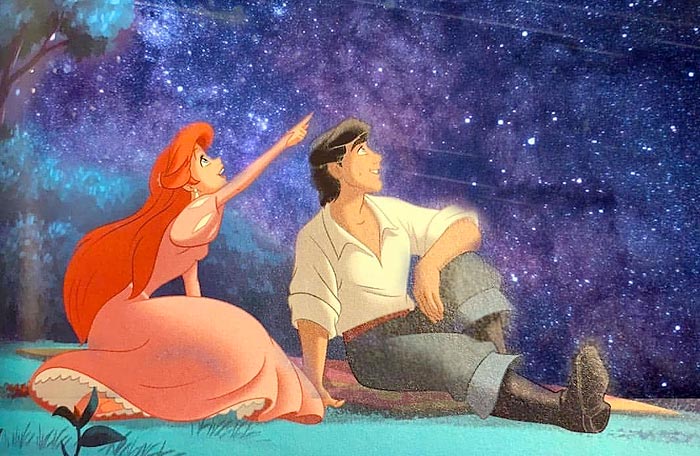
Yes, Ariel gets what she wanted, what she envied. But this only happened after she recognized the covetous and selfish nature of the way she handled her desires. In the end, she becomes a double princess of Atlantica and Eric’s kingdom. Better, rather than being the stereotypical spoiled princess she could’ve been, Ariel shows she will become a brave, chivalrous princess who is appreciative of her kingdoms and worthy of her double crown.
Wreck-it Ralph: Everything to Envy, Nothing Left to Lose
Wreck-it Ralph of the eponymous film doesn’t have a powerful or enviable position when his story begins. He has many more reasons for envy than Ariel does, and nets much more viewer sympathy. Ralph is the title denizen of another eponymous world, the Fix-it Felix, Jr. video game of Litwak’s Arcade. The eight-bit video game doesn’t bear Ralph’s name, and though he is a vital part of it, he is the villain, or “bad guy” as the arcade’s denizens call him and other antagonists. In-game, positive attention such as accolades and fresh-baked pies gets lavished on Fix-it Felix, who fixes the Niceland apartment building Ralph always wrecks. Meanwhile, Ralph always ends up thrown off the roof into a mudhole while the Nicelanders cheer and give Felix a gold medal.
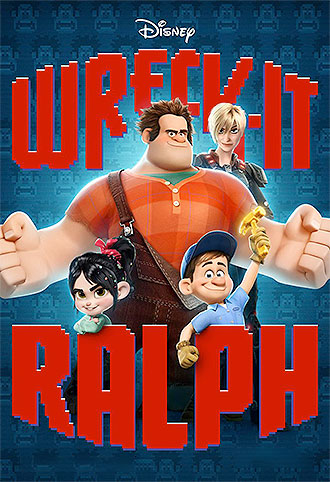
Ralph is not a bad guy in personality, though. He acknowledges he has a real temper and sometimes doesn’t know his own strength. This can cause him to wreck things by accident, or lash out and do so. He also acknowledges at over 6 feet and about 900 pounds (in eight-bit terms) he looks intimidating. But overall, Ralph is what TV Tropes calls a Punch-Clock Villain, someone for whom being bad is just a job. Outside his game, he’s a regular, nice guy, and that’s his biggest problem.
Ralph doesn’t want to be a bad guy, yet most of the other arcade denizens treat him as one. Other characters run when they see him, gasping, “Bad guy coming!” Felix and the other Nicelanders get invited to parties. Ralph is socially isolated. The Nicelanders and other characters have real homes; Ralph has a makeshift home of old bricks and other detritus in the dump. Any envy he experiences is not only understandable, but downright expected. If it weren’t there, viewers might wonder if Ralph understood his position’s implications.
Ralph understands, and the pain of that understanding is as raw as it gets. “Sure must be nice, being the good guy,” he muses during a Bad-Anon meeting. Viewers are unable to call Ralph’s envy sinful at all, or even accuse him of having it, based on the fact that it comes from his environment, which could and should be changed.
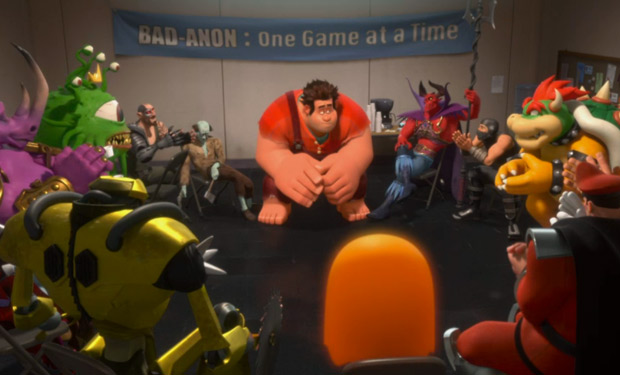
The eventual deadly sin lies in how Ralph handles his envy of what good guys have. Ralph starts out with understandable motives and good intentions. But more than the others, Ralph acts as a person who has nothing left to lose. While this can be admirable in some circumstances, it doesn’t work for Ralph. Ralph has nothing to lose because he already feels victimized and ignored. When that depth of pain is allowed to blossom and go unchecked, it becomes the impetus for hurting others and affecting change that can’t be undone.
Opening a Can of Worms…Or Cy-Bugs
Like most complicated quests, Wreck-it Ralph’s starts out simple. In a confrontation with snooty Nicelander Gene, Ralph asks if he would be considered a good guy, thus worthy of fitting in, if he got a medal like Felix. “Yes, but that will never happen, because you’re just the bad guy who wrecks the building,” Gene declares. Ralph denies this, slamming his fists into the multi-tiered anniversary cake. Undaunted, he heads off into the larger video game world to find a medal, starting in the lost and found box at Tappers. Ralph doesn’t find a medal, but runs into a soldier from the new game Hero’s Duty, who tells him the prize for completing that game’s quest is a Medal of Heroes.
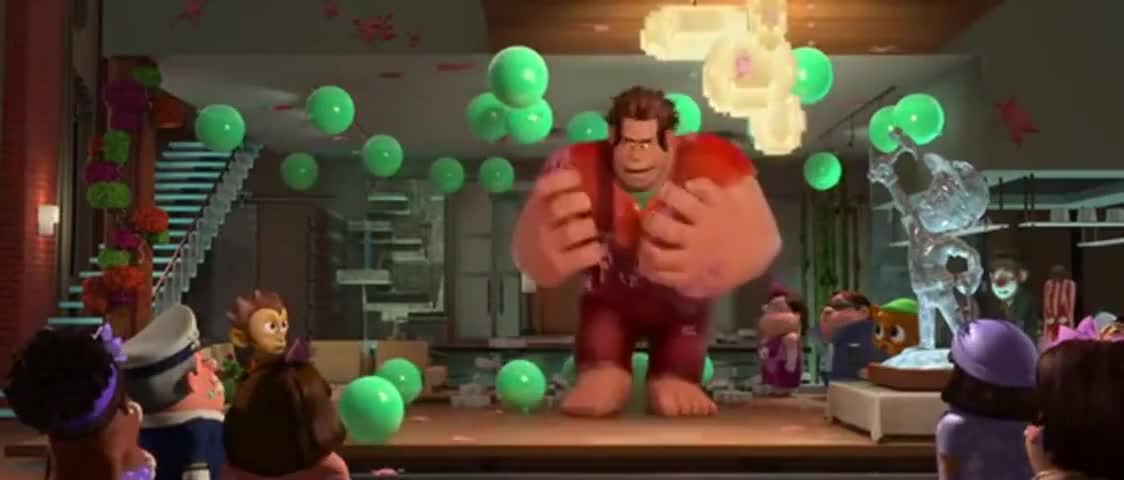
The Medal of Heroes, Ralph learns, is better than Felix’s medals. It’s super-shiny and says “Hero” on it. It is “so good, it will make Felix’s medals wet their pants!” Ralph waits for the trauma-stricken soldier to fall asleep in Tappers’ washroom, confiscates his uniform, and game-jumps into Hero’s Duty, with the intent to stay there while it is being played.
This marks Ralph’s first actions connected to sinful envy. He covets a physical object he sees as “better” than one that might be more easily attainable. He takes advantage of a vulnerable person and steals from them. He places another game and world in danger by going against the arcade’s rules about game-jumping while human players are present. If a character does this, they risk putting the affected game out of order, rendering its characters homeless.
Thinking of nothing but his medal, Ralph assumes the identity of Markowski, the soldier whose uniform he stole. He barely survives his encounter with millions of green, glowing, ravenous Cy-Bugs, the virus-ridden insects that have invaded Earth and made the first-person shooter “humanity’s last hope.” Viewers might think this would be enough to put Ralph off his quest and maybe his envy, but he pushes through and obtains an ill-gotten medal. Unfortunately, he lets a Cy-Bug onto a shuttle he hijacks while blasting out of the game, too.
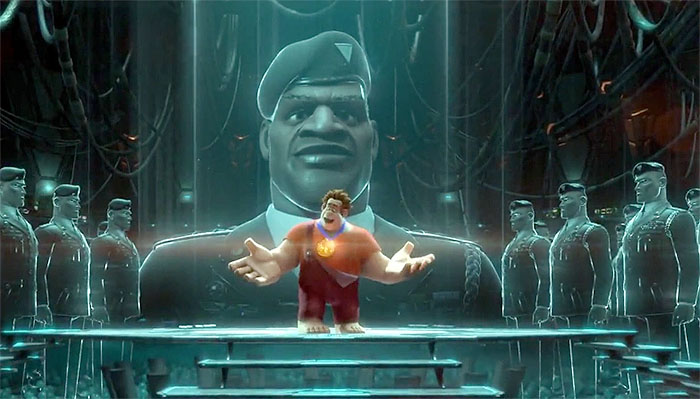
Since Cy-Bugs become what they eat, they aren’t easily killed. This might not be a big problem, except they’re not normal video game denizens. As Sergeant Calhoun explains later, “Cy-Bugs…don’t know they’re in a game. All they know is, ‘Eat, kill, multiply.'” Since Cy-Bugs act like real viruses, their agenda involves “killing” every game in the arcade, Ralph’s included. And since everything a Cy-Bug eats makes it bigger and stronger, these insects are virtually unstoppable.
Ralph doesn’t know any of this, nor did he mean to unleash a killer on his home. When he crash-lands in Sugar Rush, he sees the bug sink into a taffy swamp and thinks it died. But the bug sucked up the taffy and settled in to wait before it could strike again. At its core then, Ralph’s envy has gone up a level, taking on proportions that could harm others in ways he didn’t anticipate and can’t stop.
“You Really Are A Bad Guy!”
Unaware of the destruction he’s wrought, yet still focused on himself, Ralph determines to escape Sugar Rush as fast as possible. To him, it’s a brightly-colored, saccharine “candy go-kart game,” so he figures, how hard could escaping be? But he doesn’t count on resident Vanellope Von Schweetz, who steals his medal thinking it’s a gold coin. “Race ya for it,” Vanellope challenges, and Ralph does try. But his size, frustration, and unfamiliarity with Sugar Rush’s mechanics–such as, double-striped candy cane tree branches break–mean Vanellope trounces him. Vanellope tries to engage Ralph, albeit with insults and snark, asking why he can’t just “go back to [his] own dumb game” and win another medal, letting her keep this one since it’s important to her, too. But again, Ralph lets envy and selfishness win. He calls Vanellope a “guttersnipe” and says she “wouldn’t understand” his motives because “it’s grown-up stuff.”
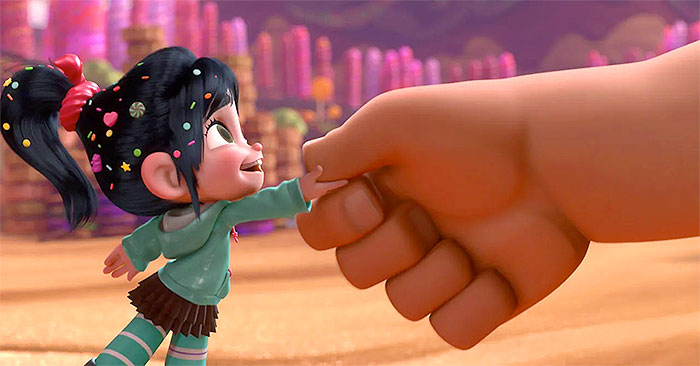
Ralph only agrees to help Vanellope after she explains that if he helps her build a go-kart, she can guarantee she’ll win a race and give him back the medal she’ll use to buy her way in. Ergo, they both win. Vanellope gets to be a real racer, and Ralph gets to return to Fix-it Felix Jr. as a good guy, with proof of his status.
Vanellope makes a compelling argument, Ralph admits, but her point of view is still not valuable to him. They are neither partners nor friends, he’s quick to point out. As before, though, conflict changes Ralph’s outlook. Shortly after meeting Vanellope, he sees a group of Sugar Rush racers taunting her homemade, pedal-powered go-kart and mocking the fact that she’s a “glitch” who randomly blurs in and out of focus. Vanellope tries to defend herself and stand up for her right to “race like you guys,” but the others don’t listen. Taffyta Muttonfudge says Vanellope’s glitch could put them all out of order and she’s “an accident waiting to happen.”
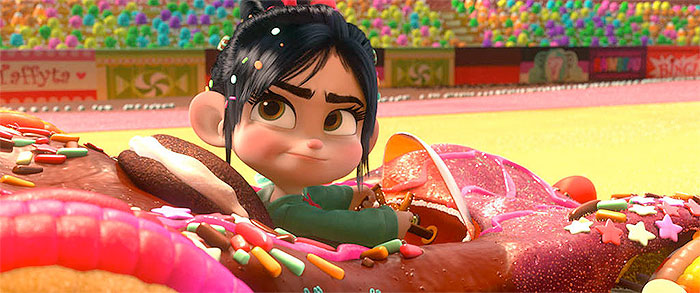
This touches off the other racers imitating Vanellope’s glitching with exaggerated faces and slurred speech. Ralph races to Vanellope’s defense–“Scram, you rotten little cavities!” But while his intimidating presence does scare off Vanellope’s bullies, it also alerts King Candy and the royal guard to Ralph’s unsanctioned presence, and the fact that Vanellope is outside her permitted purview. The heroes are forced to work as a team to escape capture. Ralph gets a double upshot of growth when he shows compassion and chivalry, putting aside his agenda for Vanellope’s sake.
Ralph continues conquering envy as he works with Vanellope. After seeing she has to live in an unfinished bonus level “like a little homeless lady,” and hearing she’s been outright told she’s not supposed to exist, Ralph realizes how much the two have in common. He immediately “wrecks” Vanellope’s Diet Cola Mountain home into the shape of a track and teaches her to drive the kart they made together before being detected. Ralph isn’t exactly a wise or caring mentor, and Vanellope’s driving efforts are more than a little reckless. Thanks to falling Mentos reacting with the cola, she “almost [blows] up the whole mountain” more than once. But she and Ralph eventually bond over their mentor-mentee relationship style. Vanellope, who has lived in total isolation, gives Ralph her trust. Ralph, who has built his identity on getting what others have, places her happiness above his. When she says, “I’m already a real racer; it’s in my code,” Ralph believes her, which lets Vanellope believe more in herself.
Ralph is not out of the green-eyed monster’s clutches yet, as viewers learn during the climax. Just before the big race she’s entered using his medal, Vanellope rushes off to get Ralph something she forgot. Meanwhile, King Candy shows up looking for a private word with Ralph. He explains Vanellope can’t race, ever. If she does, he says, players will begin choosing her as their avatar. “And when they see her glitching and twitching and just being herself…we’ll be out of order,” he says. Since glitches can never leave their games, Vanellope won’t be homeless when Sugar Rush’s plug is pulled. She’ll die, with no hope of regeneration anywhere.
Ralph can’t let that happen, which seems like a selfless decision. But in urging Ralph to tell Vanellope the truth and prevent her from racing, King Candy brings Ralph’s desires and bad guy status into the conversation. Therefore, Ralph concludes if he doesn’t hurt Vanellope, he’ll lose his one chance at being a good guy. Viewers infer Ralph might rationalize, sometimes good guys have to make bad choices.
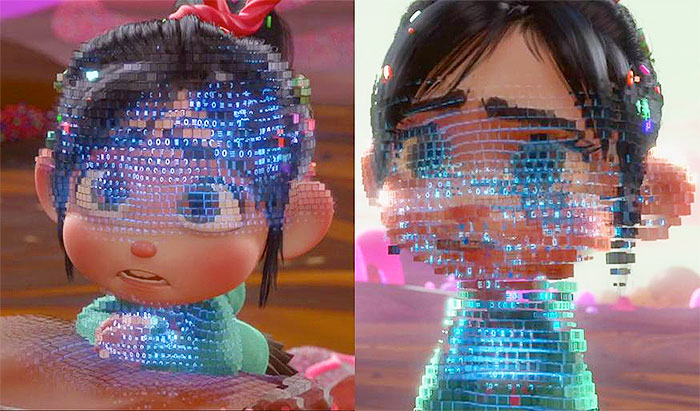
A bad choice is exactly what Ralph makes. He ignores the sugar cookie medal Vanellope tries to give him, implying it’s not “real” or as good as the one he sought. He tries to tell her the truth, but gives in to frustration when Vanellope protests King Candy is the bad guy, Ralph “sold [her] out.” The frustration and Ralph’s fear of Vanellope’s death create an emotional storm. Ralph lifts Vanellope to the branch of a candy cane tree and suspends her by the back of her hoodie, where she’s forced to watch while her friend destroys her kart.
“You really are a bad guy,” Vanellope sobs. His “bad” identity cemented and now inescapable, Ralph abandons Vanellope and heads back to his game, disgraced. He’s set up to let pain, envy, and the knowledge of what he’ll never have eat him alive like a cyber virus.
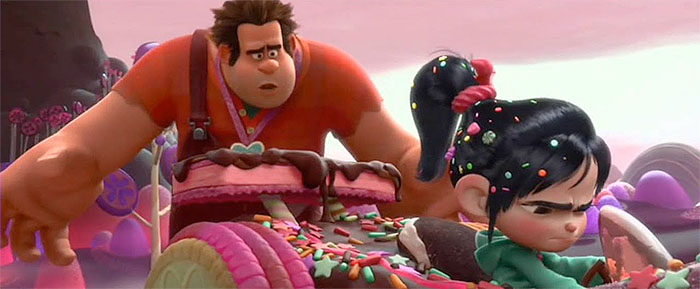
“There’s No One I’d Rather Be Than Me”
Ralph, Vanellope, and unknowingly the rest of Litwak’s Arcade have reached their darkest moment. Felix and Calhoun have been tracking the Cy-Bugs Ralph unleashed, but with no success, so the bugs are poised to kill the arcade. Felix, who went looking for Ralph, is locked in King Candy’s “Fun-geon.” The Sugar Rush race may continue, but even if Cy-Bugs don’t get to it first, Vanellope’s lost her chance to compete. Meanwhile, Fix-it Felix Jr. has been mistaken for out of order, so Ralph has nothing to do but wait for homelessness. As lone Nicelander Gene puts it, Ralph got the medal he coveted, but now all he gets is to live alone in the penthouse instead of the garbage. Ralph’s story might’ve crash-landed there, except he looks across the arcade at Sugar Rush and spots Vanellope’s picture on the side of the game console. Why would a character who’s not supposed to exist be prominent enough for a picture?
Ralph game-jumps again, and this time, dedicates himself to righting wrongs for others first. He wrecks the Fun-geon and admits his envy-driven mistakes to Felix, who has learned what it feels like to be Ralph, “rejected and treated like a criminal.” Felix promises to find Calhoun and back Ralph up on his mission to save Vanellope and the arcade, while Ralph goes in search of the truth about his friend. His interrogation–and halitosis–crack King Candy’s henchman Sour Bill, who admits Candy lied. If Vanellope crosses the finish line in a race, “the game will reset and she won’t be a glitch anymore.” Worse for Candy, the reset will mean Sugar Rush’s citizens will remember he locked up their memories and usurped a throne that was never his. Vanellope’s the rightful ruler, Bill explains, but Candy made her a glitch so he could take over her game and become its most powerful racer. He’s now locked Vanellope in a different Fun-geon area so the race can proceed as he wants.

Ralph tracks Vanellope down, and after hearing him admit he’s “an idiot,” “a selfish diaper baby,” and “a stinkbrain,” she forgives him with a big hug. Ralph presumably explains everything on the way to the race, encouraging, “Just cross the finish line and you’ll be a real racer.” Fully confident she’s already there, Vanellope takes off. Not long into the race however, the Cy-Bugs invade. Felix and Calhoun focus on getting Sugar Rush’s civilians out of the game, while Ralph determines to defeat Candy, who’s using the bugs to his advantage.
By the time Ralph reaches Candy, he’s become a humanized Cy-Bug and set his sights on Vanellope. “Let’s watch her die together, shall we?” he taunts Ralph, becoming larger and stronger by the second. As villain and hero duke it out, Candy morphs one last time.
“Turbo?” Ralph gasps at finding himself face to face with the whole arcade’s legendary nemesis. Turbo, an old eight-bit character presumed dead, was the first game-jumper. Once the star of his eponymous game, he became enraged when a new game called Road Blasters got plugged in and “stole [his] thunder.” Turbo meant to take over every game, becoming the center of attention everywhere. Yet he ended up “putting both games, and himself, out of order,” until the events of Wreck-It Ralph. Now, with another takeover threatening to crumble, King Candy seeks to kill Vanellope and Ralph, and become “the most powerful virus in the arcade,” something whose prestige no one can steal.
Up to the last second, it looks like Turbo will win. But Ralph and Vanellope pull off their finest bit of teamwork yet, using their knowledge of falling Mentos and diet Cola to create a beacon that will attract and kill the Cy-Bugs, of which Turbo is now one. The ensuing fall will likely kill Ralph, but Vanellope, tucked safely in her kart, will make the finish line and reclaim her throne. Ralph at peace with his sacrifice, no longer concerned with what he has or can get from others. “There’s no one I’d rather be than me,” he declares as he falls, and viewers know he means it.
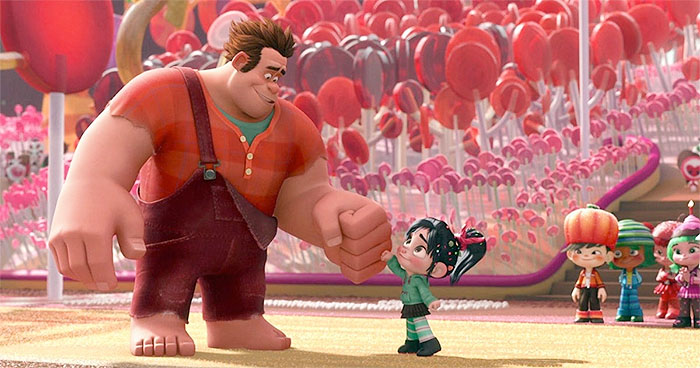
Ralph’s surprise crash landing into a pool of chocolate, so like the mud of home, becomes doubly satisfying. So too, does Ralph’s new life at Litwak’s. He remains his game’s bad guy, and keeps getting thrown in the mud every day. Now though, he gets the friendships and respect he wanted, and appreciates them more, having faced a villain who let envy take over as Ralph almost did. Ralph also gets the friendships and love of others in the arcade, especially Vanellope. “If that little kid likes me, how bad could I be?” he asks. Viewers know now, Ralph is good in every way that matters.
Wrath: Jack Kelly and Elsa
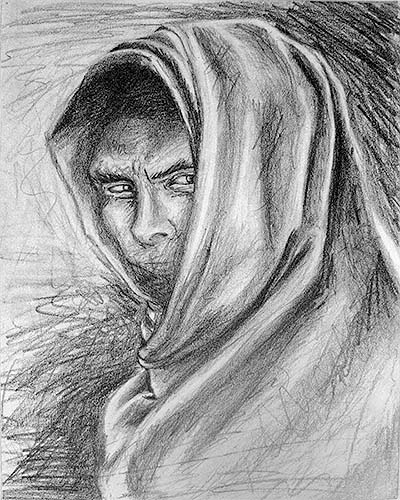
Next up is wrath, sometimes rendered as “anger” but more commonly known by its shorter and more Biblical name. Wrath feeds into, or can result from, pride, envy, or both. That is, if someone goes too long with an inflated, bruised ego or experiencing the resentment of envy, he or she will become angry. That anger can consume, to the point of being that person’s dominant emotion or motive.
Christianity.com defines this deadly sin as “strong vengeful hatred or resentment.” Philosopher Thomas Aquinas made wrath synonymous with anger and called it “a passion,” which “is evil if it set the order of reason aside.”
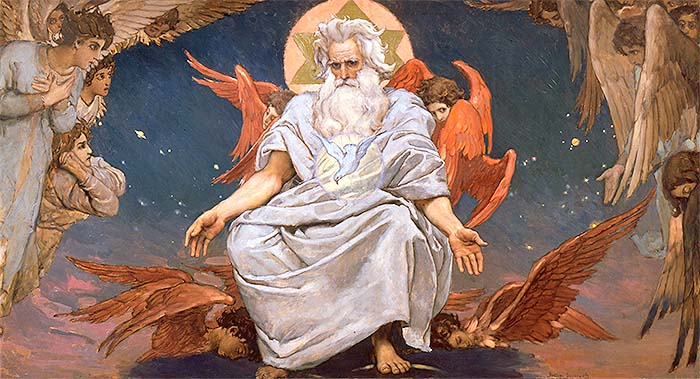
Be careful too, not to confuse the wrath of humans, real and fictional, with the wrath of God. God’s wrath is different from humans’ because of God’s holy nature. Beyond that, the Bible and presumably other Holy Books do make allowances for anger toward deeds deities hate. The Bible clearly lists the seven deadly sins as the ones God hates.
Righteous anger also occurs when anger “attacks the sin instead of the sinner,” reacting to another person being abused or mistreated (crosswalk.com). An example might be someone physically subduing a human trafficker, or verbally attacking a person who abuses an elderly or disabled individual. This is the kind of wrath God experiences, and the kind of wrath He does allow His people to indulge, but if and only if it is under His conditions and tempered with reason and self-control.
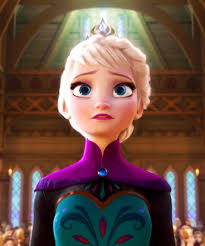
Under these definitions, most Disney characters who experience wrath are villains. However, a few protagonists do as well. Jack Kelly of the Disney musical Newsies and Queen Elsa of the Frozen duology are two of the most interesting cases. Their wrath is partially, if not fully, built on righteous anger. Both get into trouble when they let their anger turn inward. Once that happens, they, the people, and the environments around them begin to crumble. The people that in their passion, they were so desperate to help, Jack and Elsa end up hurting. Unlike the other characters, Elsa and Jack deal more with internal conflict and have to decide how much of their passion they’re going to keep.
This time, we’ll look at our male protagonist first. This is not because males are more prone to wrath. Rather, we’ll look at Jack Kelly first because his wrath takes a more “traditional,” anger-based form, while Elsa’s comes from different emotions and motives.
Jack Kelly: Mad as Hell and Not Gonna Take It Anymore!
Viewers can meet Jack Kelly in either the 1992 film version of Newsies directed by Kenny Ortega or the 2012 Disney musical directed by Jeff Calhoun. Either way, Jack doesn’t seem wrathful at first. He’s a romanticized version of an 1899 New York City newsboy. As Stephen of the InReelLife channel says in his video “How Everyone Reacts to Newsies,” “Nobody living below the poverty line in New York is this happy.”
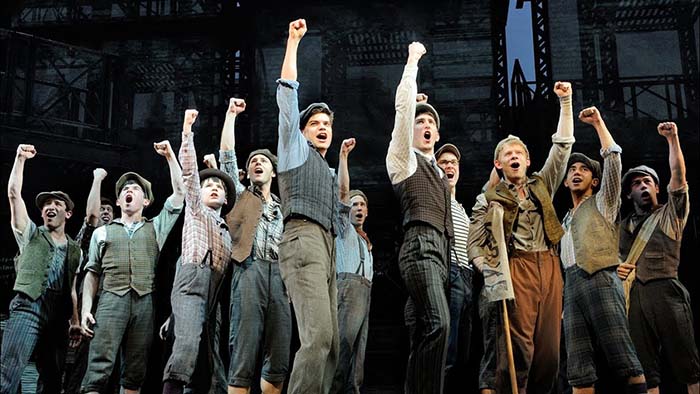
And yet, Jack Kelly has transcended the hardscrabble life of a newsie. He gets up early to sit on the lodging house rooftop, dream of escaping out West to Santa Fe, and share that dream with his best friend Crutchie, fellow newsie, polio survivor, and honorary brother. He rhapsodizes about the big life he’s going to live out there, “plantin’ crops, splittin’ rails,” and “swimmin’ the Rio Grande” when he’s not “just [lyin’] around all day” (Newsies track 1).
Jack is also quick to make a joke when things get too serious. When Crutchie worries his disability makes him a burden, Jack laughs it off. “That bum leg of yours is a gold mine,” he says. Crutchie may have the famous “smile that spreads like buttah,” but viewers quickly peg Jack as the most genial and encouraging newsie of the Manhattan bunch (Newsies track 2).
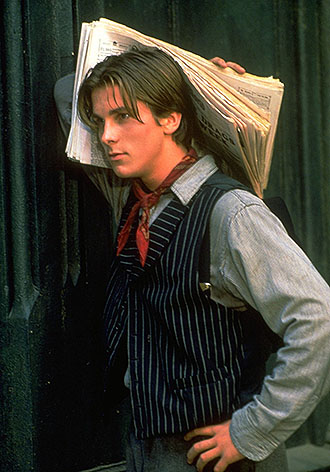
On closer review though, it’s clear some of Jack’s cheerfulness is a mask for deep-seated frustration. He longs for a place “where it’s clean and green and pretty,” but not for its own sake (Newsies track 1). He doesn’t hate New York City because his job is hard, the pay is lousy, and the streets are mean. Jack tells Crutchie the rich “bosses” of the city, “broke [his] old man.” Since we never hear anything about Jack’s mother, that means he was orphaned, presumably very young. “Broke” connotes Jack’s father suffered, and that Jack had to watch. “Well, they ain’t doin’ it to me!” Jack yells over the fire escape. Nobody answers, but they don’t need to. Jack’s not angry with anyone in particular. He’s fed up with his city, his circumstances, and his inability to control his own life, and someone’s going to hear about it.
Viewers catch other glimpses of Jack’s angry bent as the story progresses. He tells Crutchie to “quit gripin'” about his disabled leg, and dismisses the idea that the disability could get the other boy “locked up in the Refuge for good.” In so doing, Jack dismisses that he has been in the Refuge too and knows the institution is squalid, abusive, and no place for an able-bodied kid, let alone a disabled survivor of a serious disease. He acts as a big brother to the other newsies, but bosses them around or ignores their concerns. Jack calls his newspaper distributor “Weasel” instead of Mr. Wiesel and doesn’t hesitate to get mouthy when the former cheats the newsies out of papers. He displays a hair-trigger temper, especially around Oscar and Morris Delancey, who work at the distribution center and push other newsies around.
In the latter two cases, Jack is justified according to the “righteous anger” definition. However, the fact that he goes straight from verbal confrontation to all-out fisticuffs with the Delanceys–including using Crutchie’s mobility aid as a weapon without permission–is not in Jack’s favor. Additionally, his tendency to lean into frustration even with his friends, or assume their legitimate worries are whining and griping, makes him less sympathetic.
Striking and Seething
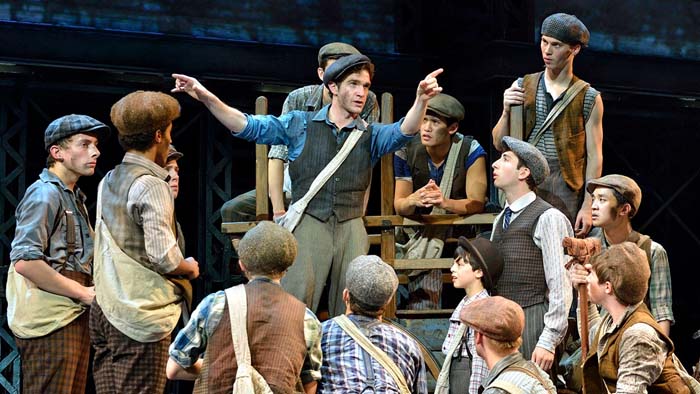
Being an angry teen does not make Jack guilty of wrath. If it did, every newsie in New York City would carry that guilt. Wrath kicks in for Jack when his situation goes from difficult to untenable. Jack and his fellow newsies sell the New York World to feed themselves and in the case of “new kids” Davey and Les Jacobs, their families. So when publisher Joseph Pulitzer raises his prices by ten cents, and convinces fellow newspaper publishers to do the same, the newsies are in an impossible position. They can’t afford the new price. As it was, most of them made about 30 cents per day in 1899 money, and more than half of that went to meals and lodging house rent.
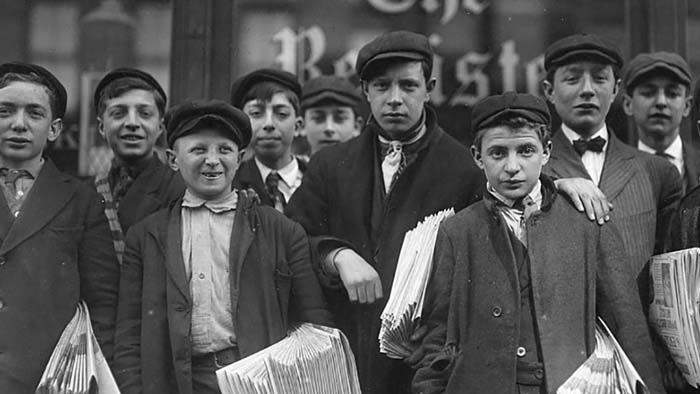
They’ll still have to pay back full price for every paper they can’t sell at the end of each day. Newsies who don’t already sleep on the street will probably have to, and although some joke about doing it “in a worse neighborhood,” that implies vulnerability to all kinds of danger. Plus, the newsies would be considered delinquent or vagrant, so places like the Refuge would become a real possibility for all of them. Since the Refuge functions as both a juvenile jail and a prison pipeline, a newsie could find himself locked up for years if not the rest of his life.
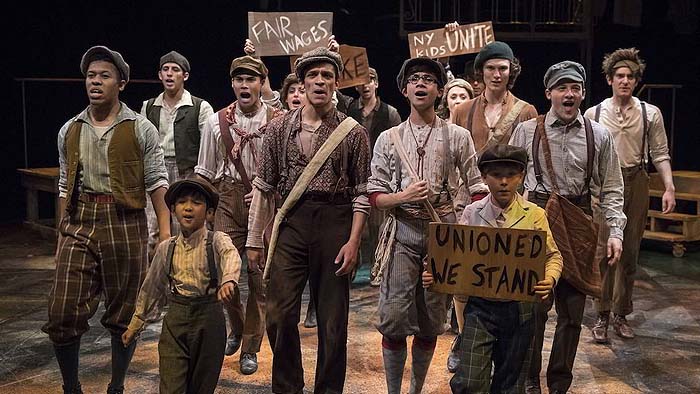
Jack Kelly taps into his existing anger, scales a statue of Horace Greeley in Newsies’ Square, and exclaims, “Pulitzer and Hearst, they think we’re nothin’…they think they got us…do they got us?” When he gets a vehement “no,” he yells, “[They] have to respect the rights of the workin’ boys of New York!” Jack demands, “Are we just gonna take what they give us, or are we gonna strike?” The newsies agree to strike, committing to block their ears when the circulation bell rings and show no intimidation if scabs like the Delancey brothers menace them.
This is not wrathful. A strike is the most logical place for the newsies to put their anger, especially since they’re minors with little to no other recourse. The resulting musical number, “The World Will Know,” is a memorable rallying cry for the newsies and any viewer who has participated in or supported peaceful protesting. Note, however, some of the lyrics in that number, especially from Jack. “We’ll do what we gotta do until we break the will of mighty Bill and Joe,” he sings (Newsies track 7). It won’t have the same affect on a wealthy publisher as it did on Jack’s dad, but one wonders if he remembers what “breaking” someone’s will looks like.
Similar lyrics such as “we’ll kick their rear,” “we’ll stomp all over you,” and “[we’ll] give them a war” speak to a level of anger the newsies may have experienced, but not admitted before. They’re not being literal, and they, Jack especially, are justified in their words and actions. The strike itself is not a sin. But the heat behind these words is a precursor to the vitriol behind wrath, and Jack must be careful because he’s the leader. He has the power to turn the strike in any direction, but is so emotion-fueled, he can’t see the practical side of what that means. Once he does, it may be too late for him, the other newsies, and the working kids of New York he’s fighting to protect.
Burning Bridges and Brothers Alike
The strike starts out fairly calm. Davey Jacobs cautions Jack the newsies can’t “soak” (beat up) scabs or other adversaries because they’ll lose credibility. Despite his temper, Jack sticks to that. Initially, he’s willing to let the Manhattan newsies go it alone. He believes they have the strength to see the strike through no matter how long it takes. The support of two intrepid journalists, Bryan Denton in the film and Katherine Plumber in the musical, replace some of Jack’s anger with optimism.
The musical adds the possibility of love, as Jack and Katherine explore an enemies-to-lovers attraction. Yet with each passing day, the reality of Jack’s situation digs deeper. He’s not just the leader and “big brother” to the Manhattan newsies. Now he’s a strike leader, and if that strike doesn’t succeed, he’ll let his brothers down unforgivably. The strike was essentially his idea, so he will carry 100% of the blame whether or not someone else volunteers to take it.
The pressure leads Jack to snark and lash out at Katherine in the musical, citing her femininity and privilege as reasons she’ll never understand him. In the film, he gets into a confrontation with Brooklyn newsie “king” Spot Conlon, rejecting Spot’s point of view when the latter questions Jack’s commitment to the strike, and nearly coming to fisticuffs when Spot refuses to involve Brooklyn’s newsies because Jack hasn’t proven he’s serious or “in it to stay.”
Jack’s anger doesn’t turn to wrath however, until the end of Act I. Here, the newsies hold a rally at the distribution center, during which Davey begins the show-stopping “Seize the Day.” The song touches off a fun number wherein the newsies release pent-up emotions, destroying newspapers, bantering, insulting Pulitzer and other publishers, and cavorting all over the place. But over time, the scene’s chaos increases. Property damage is implied; it’s minor, but a punishable offense. The Delancey brothers show up, and several newsies get physical with them, as well as other scabs.
The chaos reaches a fever pitch, and Wiesel calls the police, who presumably bring the Refuge’s Warden Snyder with them to keep order and pose a threat. In the ensuing attack, several newsies sustain implied injuries, some fairly serious. Crutchie attempts to hide, but is discovered. Snyder beats him with his own crutch, and Crutchie is dragged off to the Refuge, screaming Jack’s name. Considering his disability and latent illness, it’s strongly implied he’ll be the strike’s first casualty.
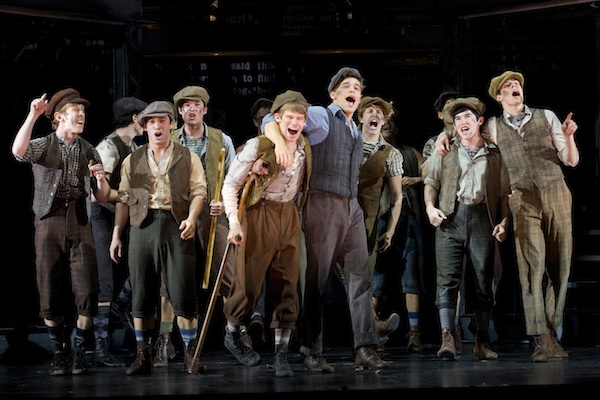
Jack flees to the lodging house rooftop, consumed with his own trauma, guilt over Crutchie’s fate, and self-hatred. The simmering, potentially dangerous anger we’ve seen is now the deadly sin wrath. Interestingly, it’s turned inward. “We finally got a headline, newsies crushed as bulls attack! Guys are fightin’, bleedin’, dyin’, thanks to good old Captain Jack!” he sings in the “Santa Fe” reprise.
Jack’s not threatening anyone. He’s not getting physical or destroying property. But his wrath is more dangerous here than before. It inspires him to run, to not only forget his brothers, but betray them, including his closest one. “Crutchie’s callin’ for me, dumb crip’s just too damn slow!” is included in the musical. Many viewers rightly excoriate Jack for using the slur, true to the time period or not. Even had he not used “crip” (and some musical directors leave it out), Jack’s still on the hook for blaming Crutchie, the victim, for getting assaulted and essentially kidnapped. (Unlike the other newsies, Crutchie did not commit vandalism, so while he could be taken to the Refuge based on orphan or disabled status, his arrest would be unwarranted).
Further, Jack is guilty in the eyes of viewers, fellow newsies, and himself for choosing to run and hide, possibly skip town, rather than finish what he began. As Act I closes, he becomes the epitome of a protagonist who “sets reason aside.” Some of his wrath was once righteous, but the selfish portion focused on “they ain’t [breakin’] me,” “I’m dyin’ to get away,” has eclipsed it. When Davey confronts him with the truth–he’s a quitter and a coward, he could still win if he gave himself a chance–Jack is too mired in hatred to care. When Pulitzer offers him a deal with the devil–scab in exchange for freedom and a railway ticket, or see himself and his friends permanently thrown in the Refuge–Jack is prepared to give in. In the musical he doesn’t, but the film has him break, showing up in a suit with pockets full of blood money to convince the other newsies to give up the strike. Jack’s wrath spills over onto them as they label their brother a traitor.
Writing a New, Triumphant Headline
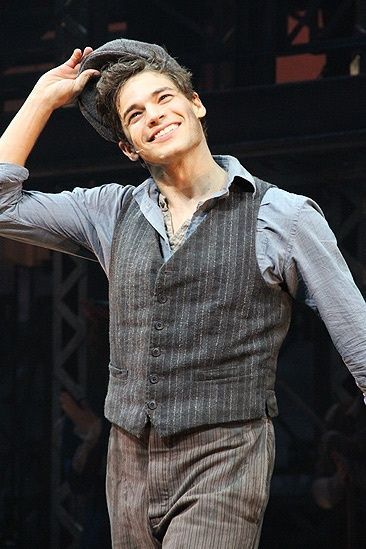
As much as Jack tries to harden his heart, he is still a hero deep down. The musical shows this as he takes time to talk out his emotions with Katherine. Rebuilding that relationship isn’t easy. Pulitzer exposed her as his daughter, and Jack justly felt double-crossed. But Katherine clarifies she doesn’t agree with her father’s ethics, or lack thereof. When she finds out the truth about the Refuge from Jack and his sketches, she’s horrified and ready to help him win the strike “once and for all.”
As for the other newsies, viewers don’t see them returning to Jack’s side in real time. But once Katherine engineers a plan to use Pulitzer’s old printing press for strike purposes, everyone’s on board, and reconciliation is implied during the “Once and for All” musical number. The time it takes to put plans into action gives Jack the opportunity to reflect and redirect the passion that was never wrong in itself, but needed a better outlet.

Both incarnations of Newsies show Jack turning against Pulitzer and “taking a third option.” He uses his talent as an artist and his journalist allies’ writing to create the Newsies’ Banner and associated headline THE CHILDREN’S CRUSADE. This headline details the plight of child laborers across New York City and exposes the Refuge as a bastion of abuse and exploitation. Every laborer under 21 in New York City, from newsies to factory workers to shoeshine kids, goes on strike, proving to adults like Pulitzer that, “They think they’re runnin’ this town, but this town’ll shut down without us” (Newsies track 16). As a direct result, Governor Theodore Roosevelt shows up to talk Pulitzer into giving the newsies a fair deal and get Crutchie out of the Refuge.
Roosevelt provides the power Jack needs for credibility, but the governor’s encouragement, plus the renewed confidence of his allies, leads him to take the lead in negotiating with Pulitzer. And while Jack didn’t have the power to close the Refuge and arrest Snyder himself, it’s implied his new job as a newspaper cartoonist will keep these injustices at the forefront of New Yorkers’ minds. Thus, villains like Snyder aren’t as likely to get away with as much as they have before.
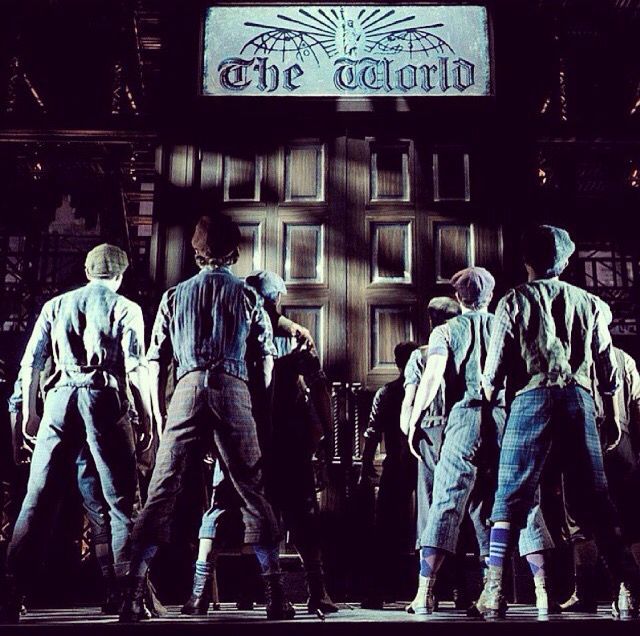
By the end of Newsies, Jack has learned a necessary and complex lesson about wrath. Wrath is still a deadly sin, and it’s dangerous to let anger get that far. Jack also has to learn the temptation to run and bury emotions further will only result in more “burns,” for the self and others. But anger is not a sin and can be righteous. The passion that leads to anger has its place. Once Jack learns where to put that passion, he’s in a much better position to be a true brother in his newsie family and focus on mental and emotional growth. It’s implied he’ll become a passionate adult who doesn’t tolerate injustice, but tempers that intolerance with patience, a combination sure to make positive headlines.
Elsa: Freezing Outside, Burning Inside
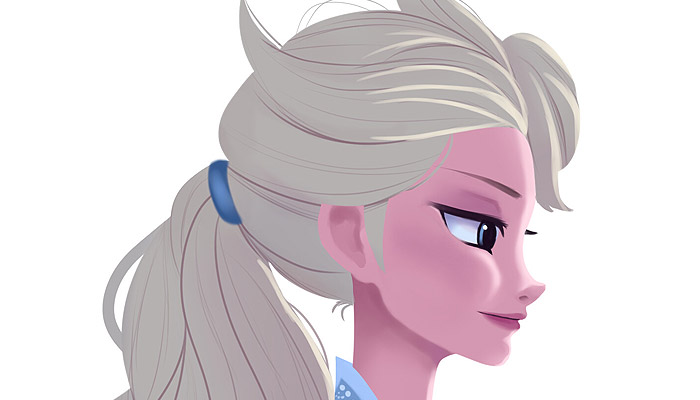
So far, sinful Disney protagonists have presented as people with justifiable reasons for their behavior. Elsa fits this mold, but distinguishes herself. She, too, looks like one of the last protagonists a viewer would associate with a deadly sin, because she’s so focused on “[being] the good girl you always have to be.” Yet Elsa sticks out because she’s the last person one might expect to be guilty of wrath, in particular. Her levelheaded, cold personality, keen intelligence, and associations with ice, make her appear the least wrathful character in Frozen. She’s not revenge-driven like Hans, and she’s not as passionate as Anna. As with Jack Kelly, viewers have to look beneath Elsa’s surface to find her wrath. Once they do, it might be more obvious and harder to master than Jack’s.
Viewers meet Elsa and Anna when they’re little, with most sources placing them at 8 and 5, respectively. Elsa is the more serious sister, preferring to sleep when it’s too early to get up, coming down the stairs more slowly than Anna, and keeping her hair and clothes neater. But in general, she’s a cheerful, carefree kid. When Anna begs her, “Do the magic,” Elsa has no qualms about creating a winter wonderland for the two sisters to play in. This includes a snowman, who Elsa christens Olaf. Danger and darkness have never crossed Elsa’s mind, let alone deadly sins. That is, until one of her ice shards ricochets and strikes Anna in the forehead, knocking her unconscious.
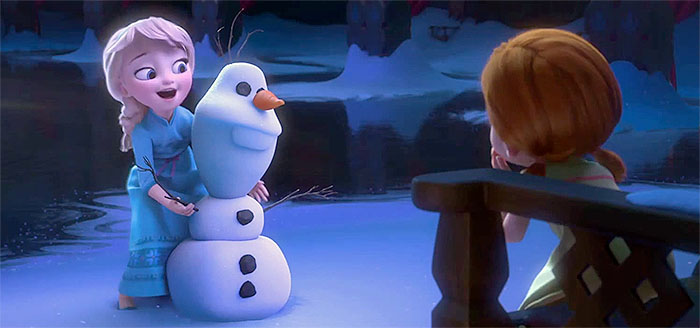
Elsa’s parents, King Agnar and Queen Iduna, take Anna to the local trolls, where Grand Pabbie revives her. Elsa is thrilled and relieved to have her sister back. But Anna’s restoration isn’t so simple. Grand Pabbie warns Elsa that while her ice powers have beauty, they are dangerous. Therefore, Grand Pabbie and Elsa’s parents agree Anna can never know Elsa has the powers. Her memory of her close relationship with Elsa is erased. Although Grand Pabbie promises to “leave the fun,” this taints Anna and Elsa’s sisterhood for the next decade or so. Agnar and Iduna isolate Elsa from Anna and Arendelle, encouraging her to wear gloves to help control her powers. “Conceal, don’t feel” becomes Elsa’s motto, to the point her powers are neither used nor acknowledged, nor does she get any positive attention.
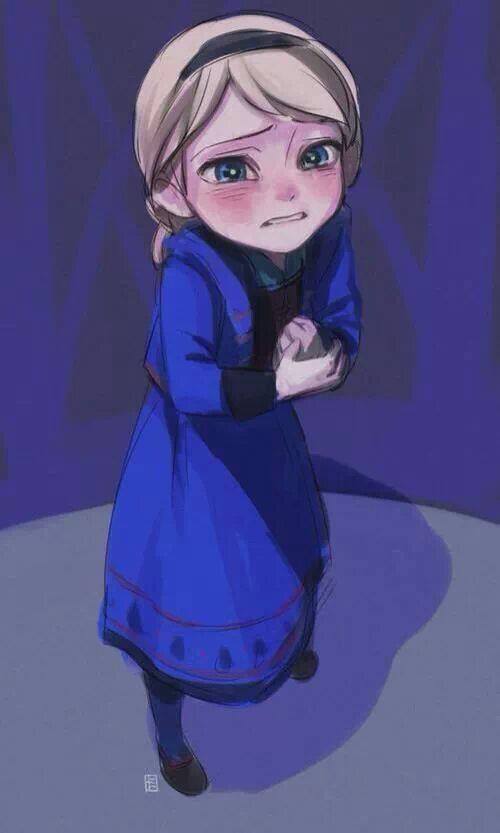
Meanwhile, Anna tries drawing her sister out. But the more she encourages Elsa to spend time with her, the more Elsa isolates herself. The older Elsa gets, the more painful her isolation becomes. By the time Elsa is 11 or 12, touching a windowsill with her bare hands terrifies her because she leaves behind a sheet of ice. She can’t accept affection, pleading with her parents, “Don’t touch me! I don’t want to hurt you!”
Elsa probably feels some frustration at her isolation, and at her inability to tell Anna the truth, as well as her compulsion to push Anna away when as the latter sings, “We used to be best buddies.” As she grows up, Elsa becomes not angry, but anxious. She’s so fearful that when Agnar and Iduna leave for a long voyage, they have to assure her, “You’ll be fine,” despite the fact Elsa is heir to the throne and 18. When the princesses’ parents die on the voyage, Elsa retreats further into her anxiety.
Viewers see Elsa insisting on physical isolation through closed gates and emotional isolation through gloves, closed doors, and an overly introverted nature, as she prepares for her coronation. She’s determined to be “the good girl” queen she’s been prepared to be, to “put on a show” if necessary, to win her subjects’ approval. If Elsa does otherwise–if she [“makes] one wrong move,” she’ll expose her ice powers. She’ll cast aspersions on her ruling ability at best. At worst, she’ll be the danger, if not monster, Grand Pabbie and her parents implied she might become.
Fearing, Yet Becoming, the Monster
Elsa stays in this fearful state throughout most of Frozen. This might cause viewers to think she’s not guilty of wrath, because fearful people don’t usually lose their tempers, seek revenge, or vent their passions. But as many people and characters from Dr. Phil to Yoda have said, anger is the child of fear. Yoda specifically once said “anger is the path to the dark side.” Elsa’s steps toward her dark side are subtle. Yet they do exist and have eventual wrath as roots.
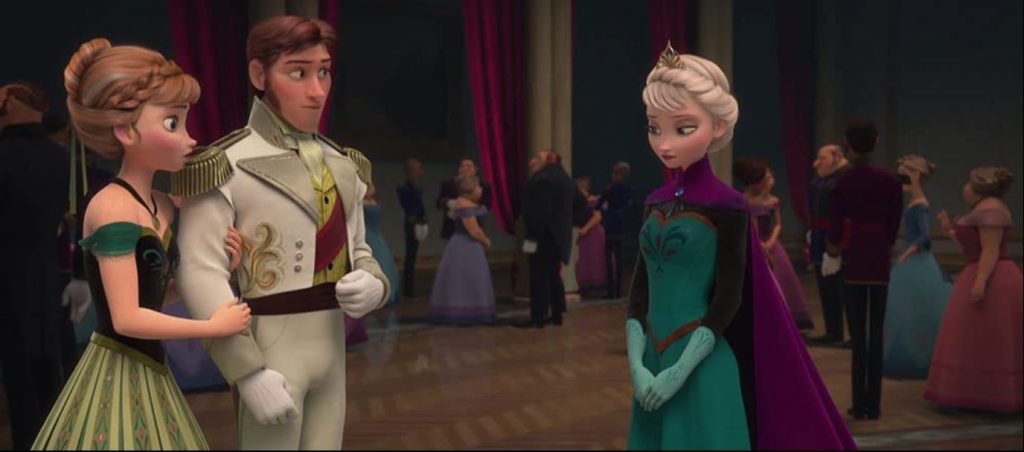
Elsa’s first and most obvious connection to wrath comes through her powers. When Anna announces her engagement to Prince Hans at the coronation ball, Elsa says, “You can’t marry a man you just met” with trademark levelheadedness. Most viewers agree she’s right. But she’s so matter-of-fact and cold in her delivery, it pushes Anna over the edge. The two argue, and Anna throws her sister’s pain in her face. “What do you know about love?” she demands. “All you know is how to shut people out!” Elsa maintains dignity and tries to leave, but Anna won’t drop the issue, so Elsa ends up yelling, “Enough!” Pointed ice shards shoot from her hands and overtake the ballroom. The entire court and guests are horrified, and the Duke of Weaselton proclaims the new queen a monster.
Furious and terrified, Elsa flees the kingdom, covering the landscape in eternal winter. As Anna notes in a cut song, the fjord in and out of Arendelle is frozen over, so everyone is trapped. The abrupt season change has decimated supplies and travel possibilities, so Elsa’s passion may have harmed her kingdom permanently.
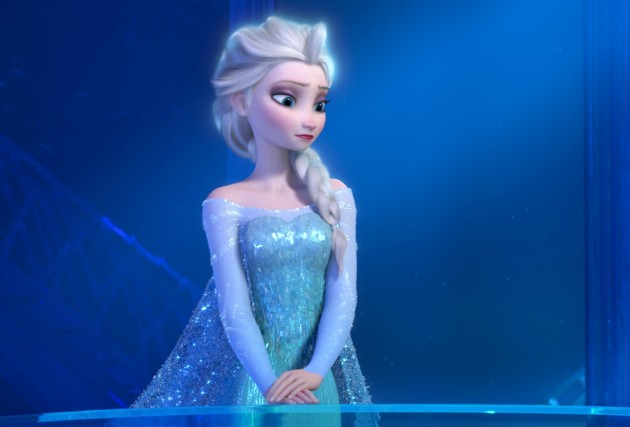
Elsa could have reversed the winter, using her ice palace as a creative outlet and a way to work through her present emotions and the past trauma of being suppressed. Instead, “Let it Go” indicates she’s ready to make the ice palace her permanent home and forget she ever had a duty as queen. “I’m never going back, the past is in the past,” she sings, noting how her thoughts are “crystallizing” into this decision and she is going to “let the storm rage on.” Lyrics like, “couldn’t keep it in, heaven knows I tried,” “they’ll never see me cry,” and “I don’t care what they’re going to say,” suggest Elsa is trading her deep anxiety for a more powerful emotion. That emotion sounds like confidence, but could be a pinnacle of frustration, quiet revenge on the parents and kingdom who wouldn’t accept her with powers.
Disney fans who describe Elsa in Meyers-Briggs terms as an INFJ (Introverted, Intuitive, Feeling, Judging personality), say she committed an “INFJ door slam.” This happens when an INFJ experiences cold, quiet wrath and shuts out the target of that wrath for good. It’s not necessarily hatred, but it is often a signal that trust is permanently broken. The door slammer has been pushed too far, and they are now capable of full resentment or revenge.
Despite her confident declarations and “door slam,” Elsa doesn’t want to embrace wrath yet. Anna knows this, as evidenced when she tells Kristoff, “She’s my sister, she’d never…hurt me.” When Anna visits Elsa, it seems the two might return to Arendelle together. The Frozen film used a cut song called “Life’s Too Short” to show the sisters trying to work things out, and finding common ground. The Broadway musical has them commiserating over the truth that, “I Can’t Lose You,” especially through the lyric, “I can’t lose you, not again/I can’t lose you like then.”
Unfortunately, once Anna reaches the ice palace, Elsa has settled into her new role. She is a free ice queen who may be a monster but can accept the isolation that implies if it means those she cares about are safe. The film personifies Elsa’s “monstrous” anger with her snow monster guard Marshmallow, who throws more ice shards at Anna, Kristoff, and Olaf. The musical’s “I Can’t Lose You” has her expand on her anger with, “Leave me alone…don’t you see I’m a storm, and you make it worse…it all turns to chaos near people I love.” A cut reprise of “The First Time in Forever” has Elsa explicitly tell Anna to “stay away and you’ll be safe from me.” When Anna disregards this and ends up with another of Elsa’s icicles in her body, this time freezing her heart, Elsa embraces both fear and wrath. She now hates herself, sure she’s a monster because her powers now mean Anna will die.
Finding the Beauty in Her Power
By the climax of Frozen, Elsa has accepted herself as a monster and leaned into the wrath of her new role. When Hans urges, “Don’t be the monster they fear you are,” Elsa calms down for an instant. But the word “monster” triggers raw memories, so she knocks an Arendelle guard and herself unconscious, waking in a dungeon with glove-shaped chains on her hands.
The presence and intricacy of the chains indicate they were not fashioned quickly. Agnar and Iduna had to have commissioned them years before. Since they died when Elsa was still a young adult, and since chains of that nature could take months or years to form in the time period, it is not a stretch to think Elsa’s parents considered her monstrous even if they were careful never to say anything of that nature.
The musical taps further into Elsa’s wrath with the song “Monster,” wherein Elsa explores her options as Hans leads Arendelle on a sort of “witch hunt” and her inner storm makes Arendelle colder and more dangerous. Elsa asks herself, “Do I kill the monster,” and “If I die, will they be free?” The latter lyric indicates she can’t separate her uncontrolled powers and passions from her personhood. Many listeners hear this as suicidal ideation. Knowing what else they know about Elsa, viewers infer her self-hatred has driven her to said ideation. It’s not uncommon for “they are better off without me” to be a justification for suicide, and self-hatred leads to that thought.
The movie doesn’t go so dark, considering it is more directly affiliated with Disney and has a much larger audience of small children. But Elsa’s imprisonment and examination of her chained hands is the last we see of her for several minutes. When we see her in the climax, she doesn’t get dialogue while Hans does. He yells at Elsa that she is a murderer, a monster, and a destroyer of her kingdom. Elsa’s twisted facial expressions, hunched posture, and desperate movements in these moments communicate how reason has left her, in favor of hatred and possible vengeance on herself through letting Hans kill her.
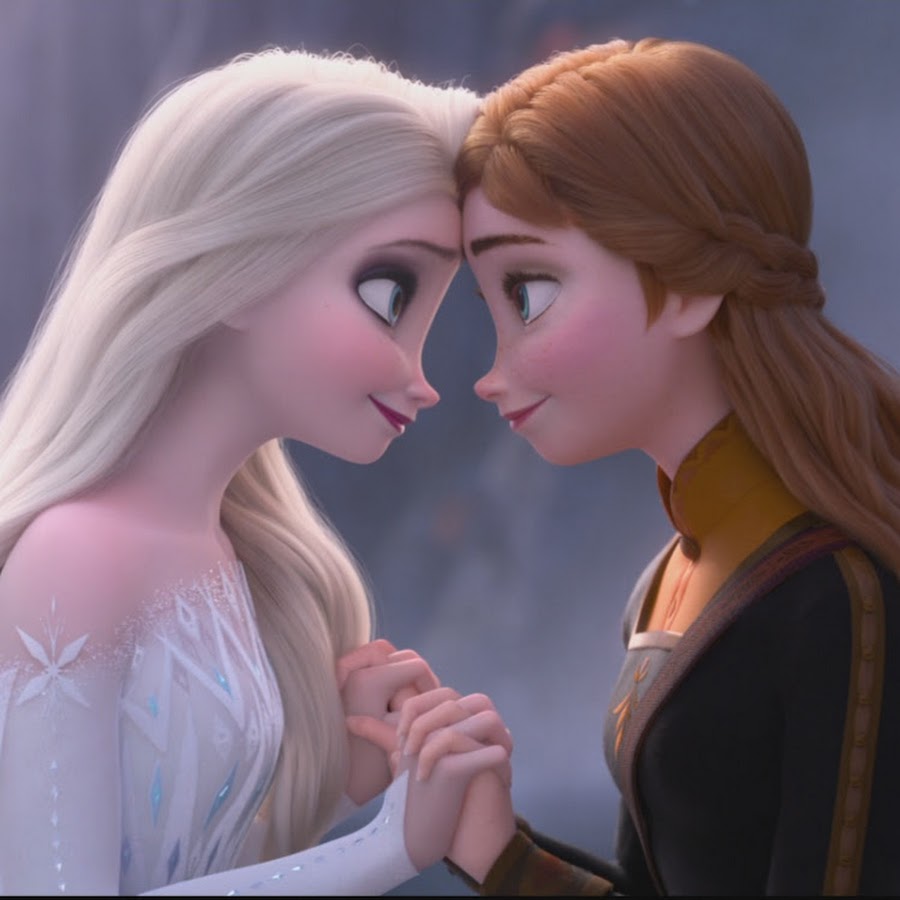
However, Elsa’s climactic walk through the blizzard puts her on the precipice of a life-altering decision, and she makes the right one. She embraces Anna one last time. She chooses love for her sister over self-hate, thawing both Anna’s literal frozen heart and Elsa’s figurative one, frozen by the way she was treated and the way she viewed herself. Like Jack Kelly, Elsa does keep the core of who she is, an introverted, “proper” queen whose first concern is for her kingdom. And as Jack Kelly kept his “hot” streak, Elsa keeps her ice powers, which could still be dangerous if uncontrolled or backed with anger. But Elsa too, has learned to control the passion of her powers. She has accepted the love others offer as the driving force behind them, which will allow her to use them as a benevolent force in her time as queen.
The “monster” inside Elsa is now what it always should have been, a force to be reckoned with but only for those who hurt Arendelle. For Elsa herself, the “monster” is now her greatest strength and it is implied, a source of joy for herself and others.
Greed: Aladdin and Tiana
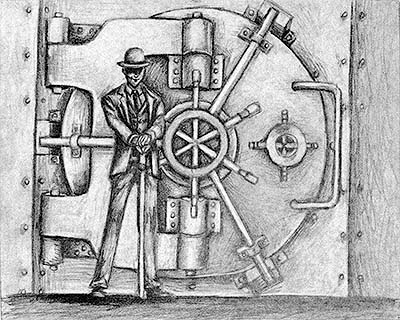
The last deadly sin in “the big four” is greed. Again, this sin feeds any of the other three. However, this time greed is an origin point, or the major sin the afflicted protagonists confront. Greed is also known as avarice. It’s defined as “a selfish and excessive desire for more of something…than is needed” (pursueGOD.org). While greed is often associated with money, it can be directed at “material wealth” in general, “at the expense of the spiritual.”
Greed’s effects on other people become apparent sooner and are easier to see than any of the sins discussed so far. This is especially true if greed blooms into full avariciousness, which often leads to cruelty, abuse, and the like. Disney protagonists don’t go that far, but they see and regret their destruction much sooner than previously discussed characters. They also “end up with less than what [they] really need” (pursueGOD.org). Thus, they not only have to break free of a deadly sin, but fight to redeem what they had and gain it on deeper levels.
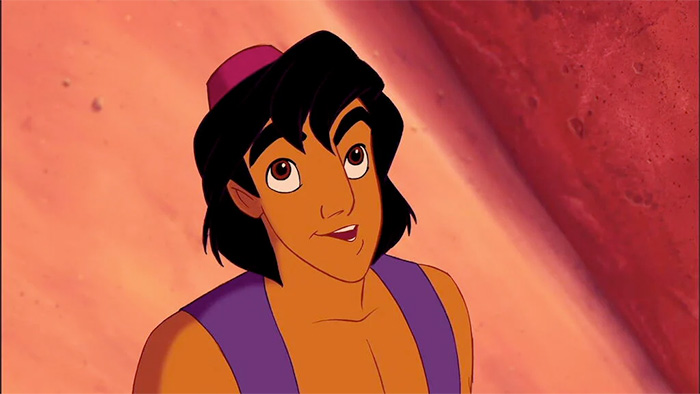
The two greediest protagonists are Aladdin and Tiana, of the eponymous film and The Princess and the Frog, respectively. Both are two more “interesting cases,” in that greedy characters are often stereotyped as already wealthy but grasping for more. Neither Aladdin nor Tiana fit the stereotype, and neither look greedy on the surface. Rather, it is their actions over time that twist good ambitions into greed, and force them to choose avarice or charity.
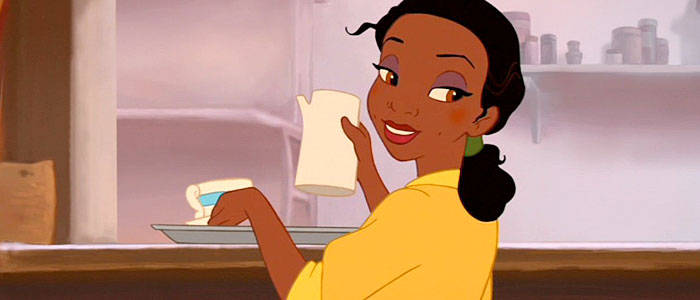
As with Jack and Elsa, male protagonist Aladdin will be examined first. In this case, it’s because Aladdin has more justification at the outset to become greedy. Additionally, his actions tend toward a more “traditional” presentation of a greedy person, while Tiana’s are a bit further below the surface and arguably, more justified the greedier she seems.
Aladdin: Rags Today, Riches Tomorrow
Aladdin is introduced as “a diamond in the rough,” and at first, the emphasis is on “rough.” Viewers meet him stealing a loaf of bread and running from Agrabah’s palace guards, dashing down alleys and jumping rooftops. One might assume this is his first greedy action. Most people are taught that stealing is a sign of grasping at what they cannot have. But Aladdin lives on Agrabah’s streets and has no other resources. He’s an orphan and at most a young adult. This indicates he either doesn’t have the skill level for jobs aimed at his age group or is considered too young for anything profitable. The guards’ constant refrain of “street rat” and their threats to “have [his] hands for a trophy” mean Aladdin is an expert thief and veteran of street living. Yet, he’s still vulnerable.

Calling Aladdin greedy seems laughable if not unfair or cruel. Throughout his film’s first act, most of his actions involve helping others or extending charity, the virtue directly opposite of greed. He shares most of his food with two younger street kids, and later defends the same kids when one of Princess Jasmine’s suitors menaces them with a horsewhip. When he meets Jasmine herself, Aladdin is quick to save her from an irate fruit vendor who meant to chop off her hand after she gave an apple to a hungry little boy without paying. Aladdin takes Jasmine to his hideout, no questions asked, and spends time getting to know her as a person. Granted, she’s in disguise, so he has no idea she’s Agrabah’s princess. But Aladdin’s past behavior has already set him up as no respecter of persons. If viewers had any doubt about rooting for him to be seen as more than “riffraff” or a “street rat,” his kindness toward Jasmine eradicated it. Viewers’ support is cemented after Aladdin shows willingness to let Jasmine run while the palace guards arrest him.
A Tarnished Heart of Gold
Even here though, Aladdin shows flashes of greed. One of the first desires we hear him express is, “Someday, Abu…we’ll be rich, live in a palace, and never have any problems at all.” Later, he extols his palace view as the best part of his home, and muses about how great it would be to live there with “servants and valets.” Arguably, his choice of words indicates Aladdin would enjoy having power, specifically people “below” him. While this is understandable based on his history, it’s odd that he doesn’t focus on elements that would fill physical or emotional needs. Aladdin could’ve mentioned plentiful food, adequate clothing, or the mental stimulation of education. Failing that, he could’ve tuned in sooner when Jasmine mentioned the downsides of palace life, such as not being free to make choices.
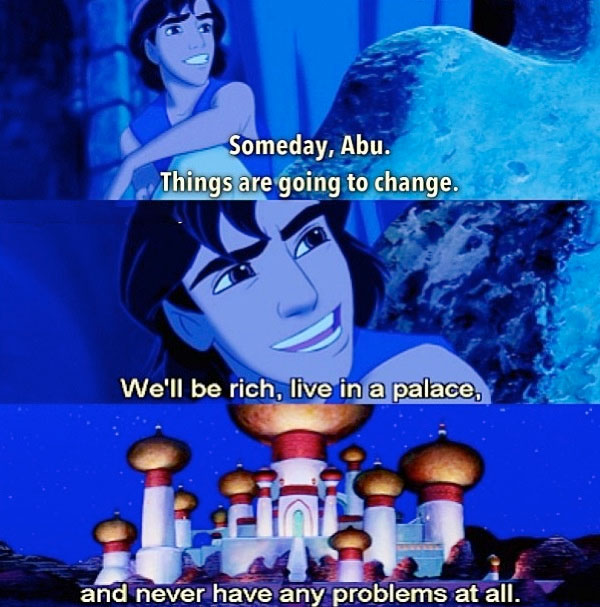
Aladdin does find out he and Jasmine are both trapped, which is vital to their relationship. But when Jasmine’s cover is blown and Aladdin ends up in the palace dungeon, he goes right back to daydreaming–about Jasmine yes, but more the princely title he’d need to “win” her. When a strange prisoner offers him the wealth that would “impress your princess,” Aladdin jumps on it. At face value, viewers read this as determination to pursue his dream. Beneath the dream though, lies a well-buried ambition to reach the top of Agrabah’s hierarchy. In light of said ambition and how quickly Aladdin fell for Jasmine, viewers might wonder, is she someone he could love? Or is she a trophy he needs to earn the respect and opportunities he can’t otherwise attain?
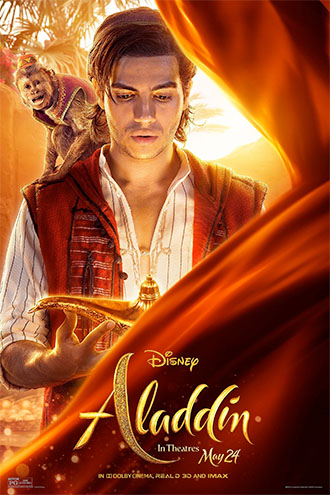
Director Guy Ritchie capitalizes on these hints of greed in the 2019 remake. Aladdin isn’t accused of kidnapping Jasmine in the live-action version. Nor does villain Jafar disguise himself as a prisoner to trick Aladdin into journeying to the Cave of Wonders. However, Jafar does appear and tell Aladdin he’s in serious trouble after he and a disguised Jasmine are nearly caught together. Jafar hints that if Aladdin helps him find a certain treasure, he’ll be absolved.
Jafar tells Aladdin the two are “not so different,” as a common trope puts it. Jafar, like Aladdin, used to be a street urchin, but worked his way up through becoming an expert thief. He’s quicker and sneakier at some of the same pickpocketing tricks in Aladdin’s arsenal. “Steal a bracelet, you’re a thief. Steal a kingdom, you’re a statesman. If you’re not the most powerful man in the room, you’re nothing,” Jafar says. He implies Aladdin could become that man, and that Jafar would be his mentor, if Aladdin agrees to find a simple oil lamp.
Aladdin has no idea who Jafar is, but his talk of power and stealing kingdoms should have raised suspicion in the young orphan who’s always been stepped on. Even if not, Aladdin could have easily made the choice to walk away. The fact that he doesn’t, lets some greedy tarnish set in on his heart of gold.
Princely Fantasy, Riffraff Reality
Some of that tarnish looks like it might flake off when Aladdin enters the Cave of Wonders. Its treasure tempts him, and Abu does grab a forbidden ruby, but Aladdin immediately puts it back. He scolds the monkey, grabs the lamp, and fulfills his promise to Jafar, only for the villain to trap him in the cave. Aladdin nods at the treachery, calling Jafar a “two-faced son of a jackal” in the animated film, but focuses mainly on escaping the cave and getting himself and his pet safely back to Agrabah. His greed doesn’t manifest again until he accidentally releases the genie and realizes the full implications of using the supernatural being’s services.
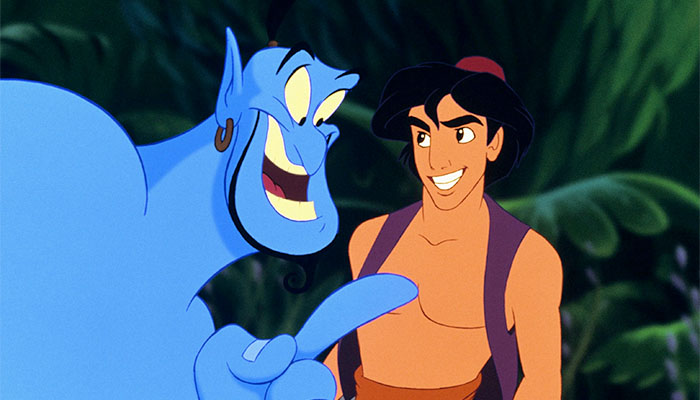
To his credit, Aladdin understands the gravity of the three wishes he’s offered. In the remake, he agrees when Genie warns him not to “drink from the cup” of endless money and power, because to be “that guy” is to never be satisfied. Aladdin asks Genie, “What would you wish for?” in all sincerity. Upon hearing Genie wants freedom, Aladdin promises he’ll use his third and last wish to make it happen. Had the story proceeded in a straight line from there, Aladdin wouldn’t have made our deadly sins list. The problem is, stories don’t proceed in straight lines, and Aladdin has two wishes to make first. Wish number one takes us back to the selfish and ever-growing greedy roots we saw earlier. He wishes to become a prince so he’ll have a chance with Jasmine.
We don’t hear Aladdin clarify everything “prince” means to him. But the next time we see him, as Prince Ali of Ababwa, he is literally marching through the city center with a band, a “world-class menagerie,” scores of servants, and every possession and assistant from “forty fakirs [to] cooks and bakers and birds that warble on key.” “Prince Ali” shows up not in a carriage or riding on a camel, but on an elephant, an assumed curiosity in his Arabian city. It’s overkill, and while the Sultan is impressed–clapping and cheering in the animated version–Jasmine definitely is not. In the animated film, she takes one look at his entourage and storms off her balcony in disgust. The live-action Jasmine asks point blank, “What do you hope to buy with all this?” Ali carelessly answers, “You.”
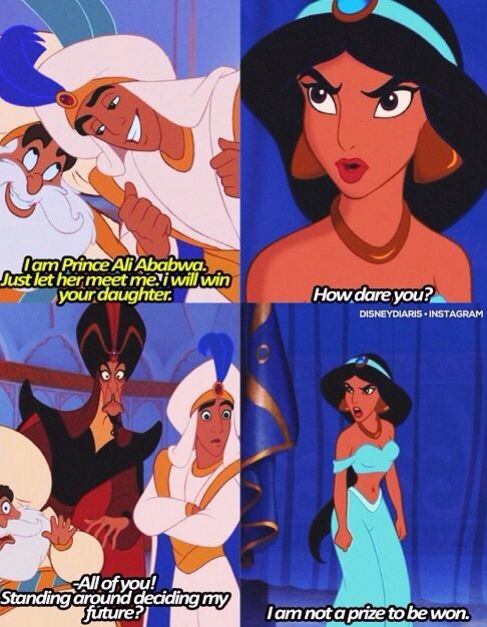
It’s the first time a Disney film has summed up a deadly sin in one word. The animated film has Ali dig himself deeper, promising the Sultan, “I will win your daughter.” Both statements show Ali’s overconfidence. Further, they highlight how much he’s leaning on the material rather than the emotional, mental, or spiritual–inner traits that make up a real person–to win Jasmine’s heart. Even when Ali tries to get to know Jasmine through her mind, he won’t return the favor and show her his true self. He uses wealth and status, showing off his magic carpet, making fun of Jasmine’s use of maps in the remake, and following the Genie’s disguised lead in a choreographed dance only a true prince would know.
Genie calls his master on this several times, notably in the remake. “Sooner or later, you’re gonna have to tell her the truth,” he warns, adding, “Be yourself.” Genie points out that Ali got Aladdin into the palace, but Aladdin is the real person. He’s the one Jasmine had a connection with, the one with whom she was emotionally generous. Ali is who Jasmine needs in the eyes of the law, which states she can only marry a prince, but Aladdin is who she wants.
Aladdin can’t hear any of this. “Aladdin’s gone. I’m Prince Ali now,” he informs Genie. He goes on to brag he’s “getting the hang of being a prince” after only one day, a day in which he committed some major faux pas. He alludes to the desire for still more wealth and power, and says he can’t, in fact won’t, wish Genie free because he needs him indefinitely. Remake’s Genie observes, “So, you’re gonna be that guy.” Animated Genie is harsher, saying, “I get it. Hey, you’ve lied to everyone else. I was beginning to feel left out.” Aladdin is now acting like a greedy riffraff–an undesirable person–as he was called and did not want to be.
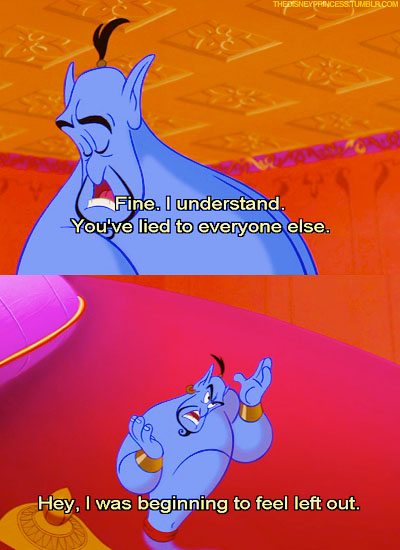
Surrendering Gold for Goodness
In reneging on his promise to Genie, Aladdin assumes he’ll keep up his princely persona forever. Should Jasmine learn the truth, he can somehow use Genie’s magic to cover for himself or pacify her, and no one will get hurt. In reality, Aladdin’s choice leaves Genie and everyone else vulnerable to Jafar. In both versions of the story, Jafar’s parrot Iago discovers the lamp and Jafar becomes Genie’s evil master, wishing to become sultan of Agrabah and stripping the royal family of their power. The animated film leaves the consequences at implications only. Jasmine is trapped in an hourglass, implying she’ll be Jafar’s possession as long as she’s useful.
The remake is more explicit. Jafar orders Jasmine’s mother’s kingdom, a peaceful ally of Agrabah, invaded and Jasmine forced to wed him. He nearly kills the Sultan in front of Jasmine when she tries to defy his wishes, and then upgrades himself to all-powerful sorcerer when she convinces the royal court not to “cower” before Jafar. Meanwhile, Aladdin is stripped of his princely disguise and exiled to the freezing “ends of the earth.”
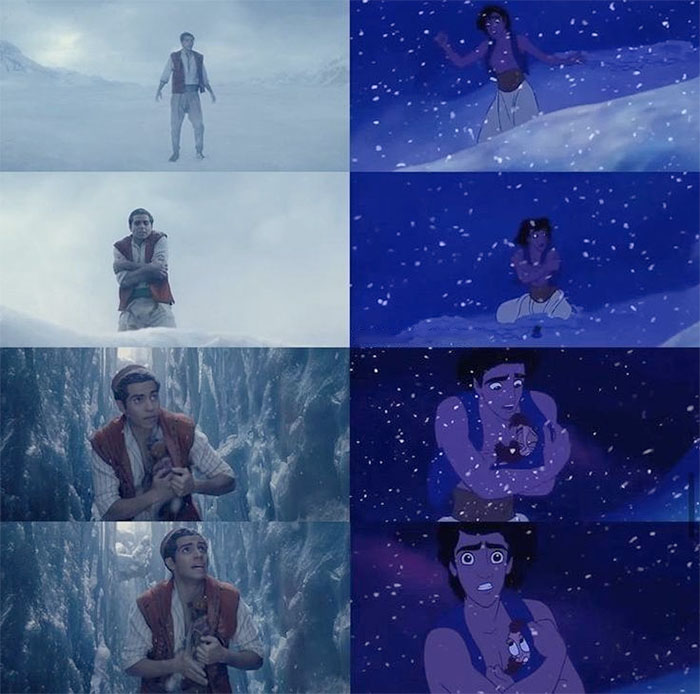
As the definition of greed said, Aladdin’s sin leaves him with much less than what he had. True, being a “street rat” and stealing to survive was a bad existence. Aladdin had every right to want, and reach for, more. Yet as his journey back to Agrabah shows him, Genie was right about Ali and his wealth and power being a mask, a “foot in the door.” Aladdin would have done better to focus on improving his personhood, because as Jafar’s wickedness proves, a single-minded focus on wealth and power can never be satisfied.
Aladdin comes to this conclusion more quickly and more explicitly than other characters have, but he has little to work with and little time to use what he does have. In fact, the challenge of returning to his “street rat” roots in order to complete his character arc, ensures he will escape greed permanently.
Aladdin still has some “princely” options when he returns to Agrabah. In exposing Aladdin’s identity, Jafar also exposed his wicked agenda. So had Aladdin come forward and told his real story, it’s conceivable the Sultan would’ve taken his word as a prince. He might not have accepted Aladdin became royalty through genie magic, but could have decided an orphan of integrity earned favor from God or some other supernatural being.
But Aladdin doesn’t take advantage of these possibilities. He falls back on the strategies he knows as his true self, which come not from wealth but wit. Aladdin tricks Jafar into wishing he could become an all-powerful genie. This gives Jafar all the power, implied wealth, and implied material privileges he wants. The catch is, genies have masters, so they have no free will or independence. They can’t so much as leave their lamps without permission. Jafar gets what he grasped but is literally and eternally trapped with it.
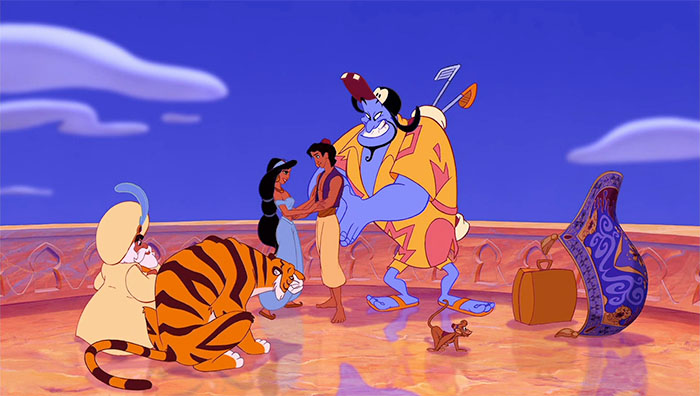
As for Aladdin, he obtains his happy ending as other characters do. In both films, Agrabah’s law is changed because of his heroism, allowing him to marry Jasmine and “live happily ever after.” Better, Aladdin sets Genie free with his last wish, although Genie encourages him to use said wish for himself. Just as gold has a tough, deep layer under its shiny exterior, Aladdin’s journey has a deeper layer under its fairytale ending. His journey concerns not only an escape from greed, but escape from the terrible insecurity and inner pain that led to it. After defeating a villain with a bankrupt heart, the heroic street urchin turned prince has knocked off his rough edges and become the diamond he was meant to be.
Tiana: Hungry for More than Beignets
In comparison to Aladdin, Tiana isn’t greedy. She’s what Aladdin might have become given a few more advantages, a few more years to grow up, and a more concrete dream than someday becoming rich and never having problems. Aladdin is an orphan. Tiana grew up in a two-parent household, and although her father dies in WWI, viewers see they love each other dearly in her childhood, and she treasures her memories of him during her story proper. Aladdin is from an ancient Arabian city. Tiana is from 1920s New Orleans. While that environment isn’t hospitable to Black women, it is growing more so. While the love and support of her family and best friend Charlotte doesn’t insulate Tiana from racism or sexism, it gives her a safe place to work through the experience when she encounters those attitudes. Aladdin dreams of riches and a life of leisure. Tiana dreams of owning a restaurant, which entails being a successful businesswoman but would take a lot of work and wouldn’t guarantee wealth. If calling Aladdin greedy is unfair, calling Tiana greedy is ridiculous. In today’s world, it might get her detractor labeled racist or sexist.
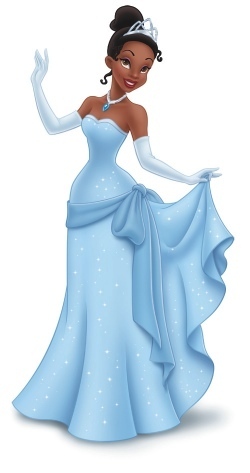
Sin is no respecter of race or sex, though, and Tiana is no exception. The issue with her greed is that not even she recognizes it, nor do most of the people around her, for over 3/4 of The Princess and the Frog. Tiana does squirrel away her money, but since it’s for a specific and practical purpose, she doesn’t come off stingy. She’s a workaholic, but not because she wants to avoid or “rise above” poverty. Rather, it’s because her beloved father dreamed of a restaurant first. Tiana watched him go away to war, then die, without realizing that dream. She looks more focused on her family and community than herself, which is a hallmark of an individual who has overcome sin.
Tiana’s sin is sneakier than most of the protagonists’ in this discussion. Sin loves to twist good intentions. For Tiana, greed has more than usual to work with. One could argue Tiana, as an unusually sympathetic protagonist, becomes more sinful the longer her character arc progresses, because the progress allows her to experience greed more and continue suppressing it. Therefore, Tiana has to fight a little harder and longer than usual to beat her sin. Yet she comes to a deeper place of triumph once she does.
“Almost There,” But Going Where?
Viewers meet Tiana as a child, when she’s perfecting her cooking talent with father James and mother Eudora. She’s just spent an evening with her wealthy, white best friend Charlotte LeBeouf. While Tiana doesn’t envy the other girl, she has picked up on her idealism. “Charlotte’s fairytale book said, if you make a wish on the evening star, it’s sure to come true,” she explains while the family talks about how people will “come from miles around to get a taste of our food.” James encourages his daughter to wish big, but remember she should put in plenty of hard work, too.
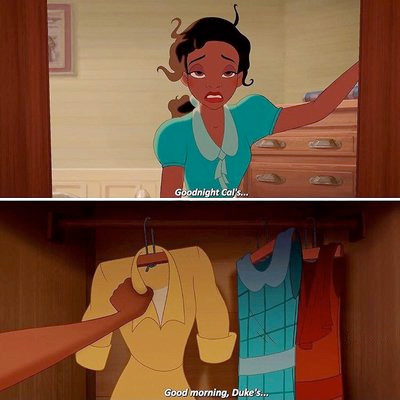
About a decade later, that’s exactly what Tiana’s doing. She stumbles home after a night shift waitressing at Cal’s to drop a few pennies’ worth of tips into one of several full coffee cans. Almost instantly, she changes uniforms for her next job–“Good night Cal’s, good mornin’, Duke’s.” Tiana’s determination, irrepressible smile, and focus on cooking rather than flirty men and pre-Mardi Gras festivities, endear her to viewers.
Given her quickness on her feet and attentiveness to customers, we can’t help but sympathize when Tiana turns down an opportunity to socialize after work. It seems her well-meaning friends don’t understand the depth and weight of her ambitions. If anything, their complaints of, “All you ever do is work” and “I told y’all she wouldn’t come” read a bit shallow. It seems Disney’s version of the divine is on Tiana’s side, when her promise to fill a big beignet order for the LeBeouf’s Mardi Gras ball nets her enough to buy the building for her restaurant.
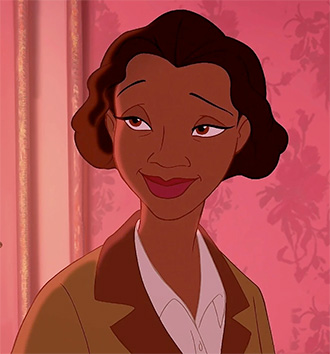
A celebratory meeting with mom Eudora paints Tiana’s success with a different brush. Eudora shows up at the dilapidated sugar mill Tiana intends to buy, carrying her husband’s old gumbo pot and intending to sit her daughter down for a heart-to-heart about dreams, work, and what matters most. She gets cut off when Tiana goes on and on about how the restaurant will look and what recipes she’ll use. She seems oblivious to the sugar mill’s condition, rhapsodizing, “Doesn’t it just make you wanna cry?” Much less enthusiastic, Eudora hints, “Yes… Honey, I’m proud of you, but I just hate to see you working so hard.”
When Tiana still doesn’t “get it,” Eudora encourages her daughter to go out socializing and dancing, and mentions she wants grandkids. “That’s just gonna have to wait awhile,” Tiana tells her. She launches into the peppy “I Want” song “Almost There.” It’s a toe-tapper with a positive message. Given Tiana’s backstory and character though, it reads like she’s greedy for more work and more success.
Lyrics that tell us she “ain’t got time for messin’ around” and doesn’t care for “people takin’ the easy way” back up this undertone. “Look out, boys, I’m comin’ through” and “there ain’t nothin’ gonna stop me now” could be read as determination coupled with work ethic. Alternatively, they could read as an Aladdin-like level of ambition that, handled the wrong way, could become deadly greed. Tiana’s dream may be much closer, but viewers wonder where and how far she’ll go to turn “almost” into “there.”
Get What You Want, Lose What You Had
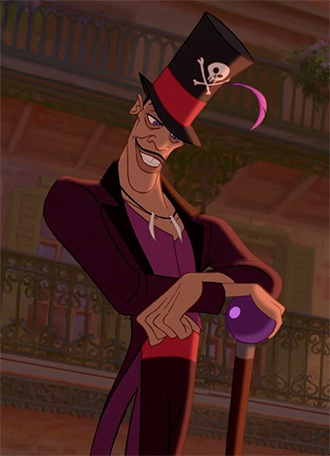
A big part of what makes greed a deadly sin is that emotionally and spiritually, it leaves its victims with much less than they had when they started grasping for more. The Princess and the Frog‘s villain, voodoo practitioner Dr. Facilier, lives by this axiom. “You got what you wanted, but you lost what you had,” his song “Friends on the Other Side” mocks. Tiana finds out this lesson the hard way, not from dealing directly with Facilier, but making a secondhand deal with one of his victims. The night of the LeBeouf Mardi Gras ball, she shows up to close the deal on the sugar mill with local realtors the Fenner brothers. The stereotypical white, Southern realtors are only too pleased to tell her she was outbid and, “A little woman of your…background? You’re better off where you’re at.”
Devastated, and humiliated after an unknown Prince Naveen in frog form destroys her beignet display, Tiana retreats to Charlotte’s room and changes into one of her friend’s dresses. In contrast to her Medieval peasant costume, the sparkly blue number and tiara make her look like a princess, so Naveen approaches her to request a kiss. A horrified Tiana attacks Naveen, throwing Charlotte’s stuffed animals at him and nearly squashing him with a hardback book. Said book is Charlotte’s fairytale anthology, and Naveen convinces Tiana he is a frog prince. “Perhaps I could offer you some type of reward? A wish I could grant?” he wheedles.
Tiana has always found frogs repulsive, so she’s not ready to give in. Yet, the lure of her restaurant, and the monetary and social success that would come with it, proves too hard to resist. Hesitation, disgusted faces, and mini-tantrum aside, she kisses Naveen on the “lips” without much of a second thought.
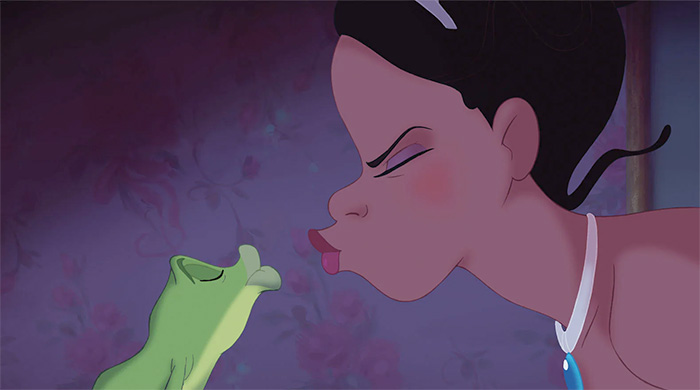
For a Disney fairytale, this works. However, especially in the 21st century, kissing a frog is a stand-in for kissing a human stranger. Additionally, Tiana didn’t simply kiss Naveen, as in older Disney films featuring “true love’s kiss” (e.g., Snow White, Sleeping Beauty). She entered a contract with him, without explaining her terms, without asking what he might want in return, and without any guarantee Naveen would fulfill his end of the deal. Again, her desire for success, financial and otherwise, bloomed into desperation and left her grasping any avenue toward the “wealth” she thought would end her problems.
This new avenue is green and slimy. Tiana finds herself “way down” on Charlotte’s floor in the folds of her dress, because the particulars of Facilier’s curse turned her into a frog, too. “What did you do to me?” she shrieks at Naveen, demanding he change her back. But Naveen can’t, and is too upset about his own unchanged amphibian state to care much, anyway. Both transformed protagonists end up hopping for their lives after Charlotte’s dog Stella chases them out of the Mardi Gras party. Tiana, for her part, can’t believe any of this, either. She’s stuck as a frog, stuck with an obnoxious prince who “[was] messin’ with the Shadow Man” as her only ally, and stuck with no way to realize her dream. The only thing she has left is a nebulous promise that Naveen might give her the money she needs–if his parents ever restore his inheritance. It’s what she wanted, but abysmally less than what she had.
Like Father, Not Quite Like Daughter
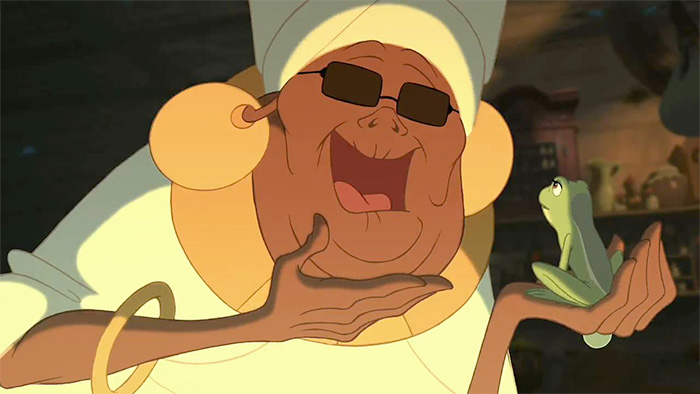
Tiana grabs hope again when unexpectedly friendly alligator Louis tells her and Naveen about Mama Odie. This centenarian blind woman lives in the bayou and is Facilier’s benevolent counterpart, a practitioner of “white” or “good” voodoo. She, Louis says, can turn Tiana and Naveen human again. Louis agrees to guide his two new companions to Mama Odie’s place, so long as they vouch for him so he can be human and play his trumpet “with the big boys” on the riverboats. With Cajun firefly Ray in tow, the group sets off a la Wizard of Oz, seeking Mama Odie. She will provide either solutions to their problems or a place of refuge from Facilier, whose shadowy minions pose a threat even to seasoned residents like Ray.
The journey forces Tiana to spend time with Naveen and do some needed self-reflection. She doesn’t fully recognize how her ambition has become greed yet. But her growing relationship with Naveen shows her what she’s missing, and what she could enjoy if she loosened her grip on ambition. Tiana continues thinking of Naveen as a “spoiled little rich boy,” especially when she learns he can’t do basic tasks. When Naveen admits he’s never had to do anything for himself, Tiana responds with sarcasm–“Oh, poor baby.” But when he actually tries mincing a mushroom–breaking a sweat after a couple dices–and Tiana sees his effort, she realizes Naveen has deeper feelings and motives than she thought. She realizes that while she’s not a typical spoiled, rich snob, she has been a “work snob,” looking down on others who don’t put in the effort she does or haven’t had to work at the same level she has.
As she and Naveen grow closer, Tiana also admits his more sanguine personality helps her relax. Tiana begins understanding life can be fun. More than fun, it can be joyful. In that joy lies part of the reason for all the hard work she’s put herself through for years. Focusing on that joy can bring her back to the crux of her dreams. Further, it can bring her back to who she is as a person, rather than the ambition and greed she has allowed to define her.
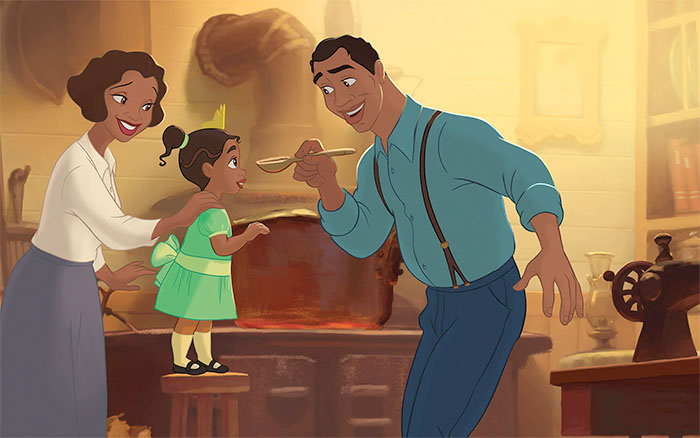
Like other protagonists though, Tiana has farther to go before she can trade her deadly sin for the virtue that will make her a fully realized heroine. At first, it seems this will happen when she meets Mama Odie, especially since the voodoo priestess notes, “You your daddy’s daughter. What he had in him, you got in you.” Since Tiana was so close to her dad, it would make sense for Mama Odie’s confirmation to precede her turning human again and realizing their shared dream.
But what Mama Odie meant was, Tiana is growing into her father’s dream. James understood something Tiana doesn’t yet, something Eudora tried to tell her earlier. “Your daddy had what was really important,” Eudora said back at the sugar mill, but Tiana’s ambition and growing greed, were too loud to let her hear it. The same is true with Mama Odie, as Tiana comes to the conclusion, “I’ve just gotta dig a little deeper, work hard and get my restaurant!” Naveen, Louis, and Ray know Tiana’s still on the wrong track. The entire group “facepalms” when they hear her triumphant exclamation. As with her human friends, Tiana figures they mean well, but can’t understand what she wants or needs.
Dreams Do Come True in New Orleans
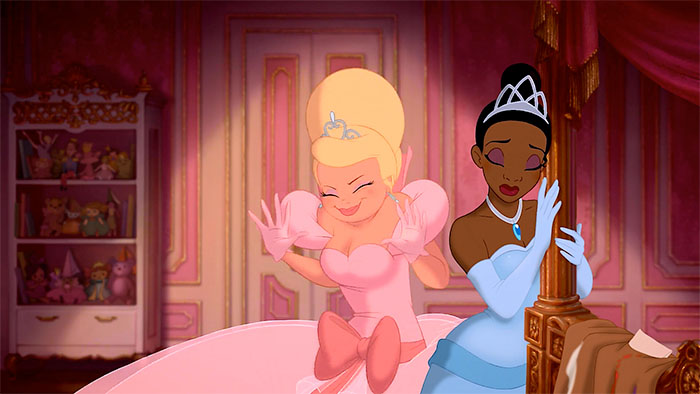
Tiana returns to New Orleans with a secret solution for herself and Naveen. Naveen will kiss Charlotte. She will be an official princess until midnight on this, the last night of Mardi Gras, because Daddy LeBeouf is King of the Mardi Gras parade. Back in human form, Naveen can then turn Tiana human and give her the funds for her restaurant as promised. Tiana and Naveen are heartbroken over this. Naveen had planned to propose to Tiana, while Tiana believed his apparent love for her was taking a backseat to his desire to become human and regain his riches. However, Tiana is willing to let Charlotte marry Naveen if it means she can have her restaurant.
The restaurant will salve Tiana’s hurt somewhat, but it’s a classic example of cold comfort. Since Naveen’s money will beat any amount other bidders offer, one could argue there’s a little vengeance toward the Fenner brothers in her plan as well. If not, should Tiana’s solution go as planned, she’d be left with a business, plenty of money, and the distinction of being a Black female business owner in a major city. Yet, she would have given up Naveen for good and, from what viewers know of her character, might end up isolating herself from family and friends.
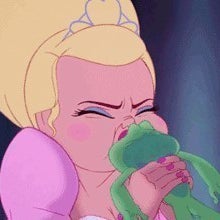
Tiana doesn’t consider any such possibilities until the film’s climax. She persuades Charlotte to kiss the frog Naveen, but Charlotte is unknowingly ready to marry Lawrence, Naveen’s valet who had entered into one of Facilier’s deals. Using Naveen’s blood, Facilier disguised Lawrence as the prince in a bid to let him marry Charlotte, get his hands on her fortune, and backhandedly gain control of all New Orleans’ souls for his demonic “friends on the other side.” Tiana finds out about this after Ray rescues the captive, still-amphibian Naveen and tells her the truth about his motives. She’s prepared to expose the whole thing and set the situation straight. Ray has gotten hold of Facilier’s blood-filled talisman and given it to Tiana as collateral. If Tiana breaks it, Facilier’s life is forfeit.
Desperate, Facilier offers Tiana a deal. She can spend the rest of her life as a “slimy little frog.” Or, she can hand over his talisman and have everything she ever wanted. Restaurant, Naveen, if she names it, it’s hers. Tiana hesitates–“No, no, this is not right.” But Facilier knows Tiana’s every weakness and temptation, and plays on them. Tiana relives memories of her friends’ socializing without her and the Fenners’ racist comments. Facilier then goes in for the kill, reminding her of “your poor daddy…never lettin’ on how tired and beat down he really was…never amounted to more than a busted-up gumbo pot and a dream that never got off the back porch.” Coupled with a vision of herself wearing a sleek 1920s bob and glittering flapper dress, this nearly takes Tiana under. “Come on, you’re almost there,” Facilier hisses in her ear.
This is the biggest defining moment between sin and virtue any Disney protagonist has received. Tiana makes a decisive, cheer-worthy move. When Facilier tries to use her words against her, they remind her of some other words. “My daddy never did get what he wanted,” she recalls, “but he had what he needed. He had love.” The conclusion seems simplistic, perhaps trite. Love is, at its core, the opposite of most sins. It’s another word for “charity,” the opposing virtue of greed, Tiana’s struggle. Deadly sins aside, love is the Disney ideal. Yet, “love” is the best conclusion for Tiana to reach. It’s the one she’s forgotten or avoided for her entire story, although love–for cooking, her community, and her family–is what should’ve driven her in the first place. Along with Tiana, viewers realize it did drive her, deep down. She needed time, space, and a new perspective to remind her.

Tiana’s eventual opening of her restaurant and marriage to Naveen, and the “princess” title that comes with it, could be read as rewards for choosing love over greed. Considering Tiana’s particular sin and struggles though, her happy ending can and should be read differently. Like other protagonists, she gets her happy ending because she has grown into it, because she has defeated her deadly sin and reaped the natural consequences. But just as greed leaves the sinner with less than they had, Tiana learns charity leaves the virtuous with more. Tiana finds herself with more than she had in the end. Judging from her full restaurant of people enjoying themselves, her tender moment with Eudora, and her enjoyment of Naveen’s family, she has much more to give away as well.
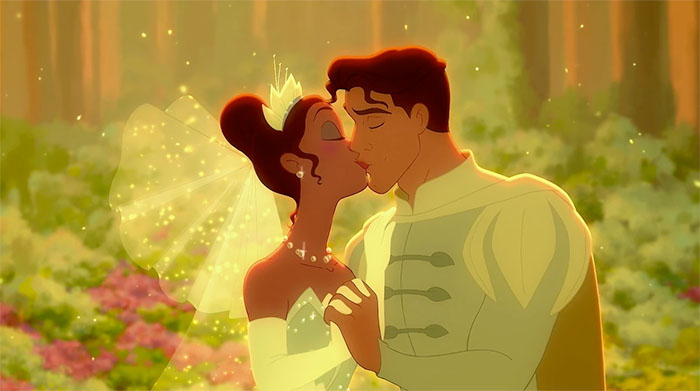
The “Little Three”: Gluttony, Sloth, and Lust
Within the seven deadly sins is another camp, in which belong gluttony, sloth, and lust. These are commonly known as “action sins” rather than “sins of the spirit” or “attitude sins.” They are not tied directly to the human heart and ego, although they do point back to Jesus’ teaching that “out of the abundance of the heart the mouth speaks” (Luke 6:45). In other words, gluttony, lust, and sloth don’t necessarily point back to a greedy or prideful heart. Those sins exist by themselves if someone enjoys the acts enough. But someone struggling with one of these three deadly sins likely has one of the “big four” somewhere in the background. That person may be more action-oriented, or more comfortable “wearing” the sin on the outside. Or, as with the six protagonists remaining in this discussion, an action sin’s victim may be unaware of the sin’s visibility and affect on self and others.
Again, no deadly sin is “better” or “worse” than the next. However, Christian teachings consider these “lesser” than their “attitude” counterparts, as in easier to overcome. Today’s Christians have been said to “giggle at gluttony” and “laugh at lust” (crosswalk.com). These sins can be harder to put an exact definition on in modern terms. That is, today’s teachings acknowledge gluttony, lust, and sloth are related to food, sexual pleasure, and laziness. But today, they take other forms, whereas the “big four” haven’t undergone an evolution. Thus, these sins are the “little three.”
Gluttony: Mikey Blumberg and Merida
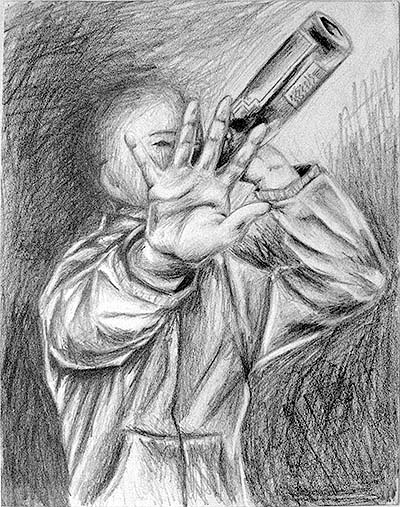
The first sin of the “little three,” gluttony, is tough to pin on any Disney protagonist, especially a female. It’s a sin of overindulgence, particularly food, and most Disney protagonists don’t overindulge this way. Some sidekicks do, but it’s mostly played for laughs, and few male protagonists do. Despite the recent discussions of body-shaming, especially for girls, one is hard-pressed to find a female Disney protagonist enjoying food, let alone overindulging.
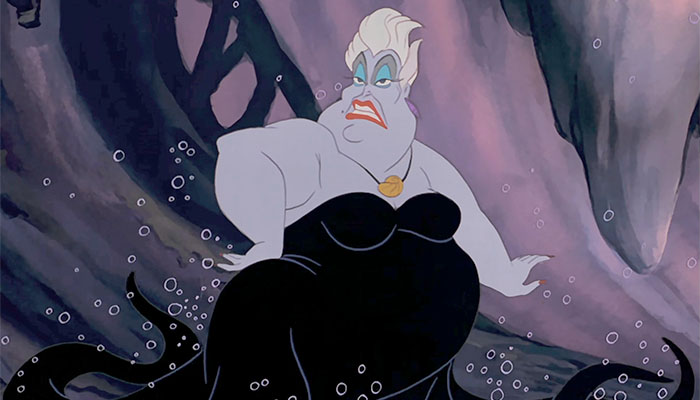
This said, gluttonous Disney protagonists exist. In modern terms, gluttony is “the sin associated with an unhealthy indulgence in material delights, usually food…[but] can include drinking, screen time, [and]…similar types of obsessive love… It is creating an idol out of material pleasure, often something consumable” (biblestudytools.com). St. Thomas Aquinas called it “an inordinate relationship with material things,” or “treating material things as the ultimate end of our lives” (stmaryrockledge.org). An argument could be made for modern gluttony in the form of misusing friendships and relationships to “gobble” more of what one wants from another party, at the innocent party’s expense.
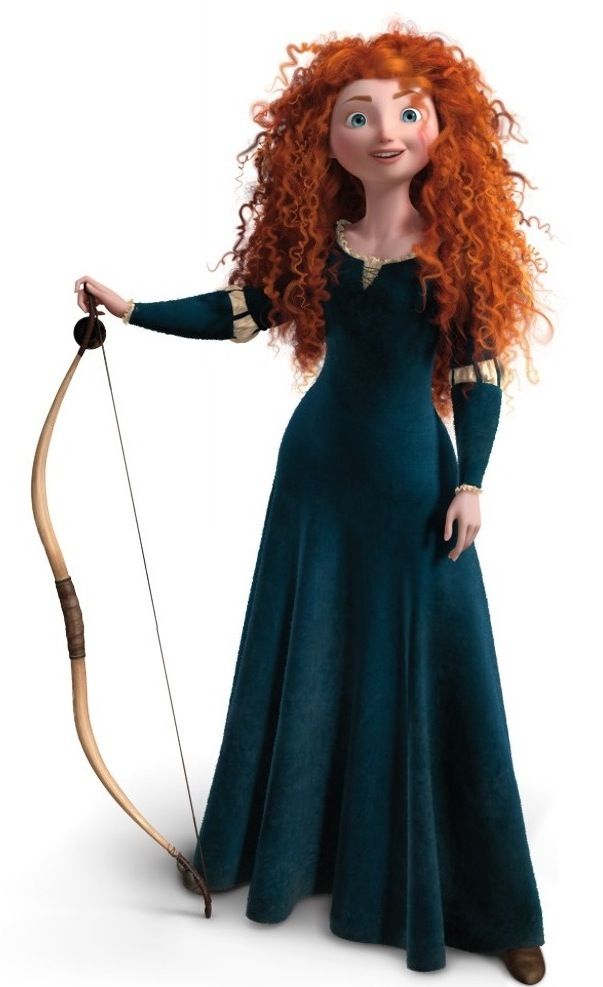
One gluttonous Disney protagonist, Mikey Blumberg, commits this sin in a classic sense and a more modern one. He enjoys his food to the point it is a defining characteristic. Mikey also proves himself a glutton for other things, notably specific relational responses.
The other glutton, Merida, is a more frequent and voracious eater than her fellow princesses, but that doesn’t make her gluttonous. Rather, Merida is another relational glutton. She’s also a glutton of the material, but more in a calculated sense than an overtly grasping one. Mikey has the “classic” glutton profile and will be examined first.
Mikey Blumberg: Appetite for His Own Way
Mikey Blumberg appears in the 1990s six-season Disney cartoon Recess. Recess ran for six seasons, was shown in syndication for several years after cancellation, and can now be streamed on Disney Plus (its episode order pared down to three seasons). Mikey is one of “The Main Six,” a member of the diverse Third Street School “recess gang” led by “everyman” T.J. Detweiler. His closest friends include everyone from star athlete Vince LaSalle to fourth grade genius Gretchen Grundler. Though Mikey is the tallest and largest kid in fourth grade, perhaps the whole school, he’s not bullied. Nor does he have a major obesity problem. Considering his height, it’s implied he’s in a “chubby” or “baby fat” stage, and puberty will help him “even out.”
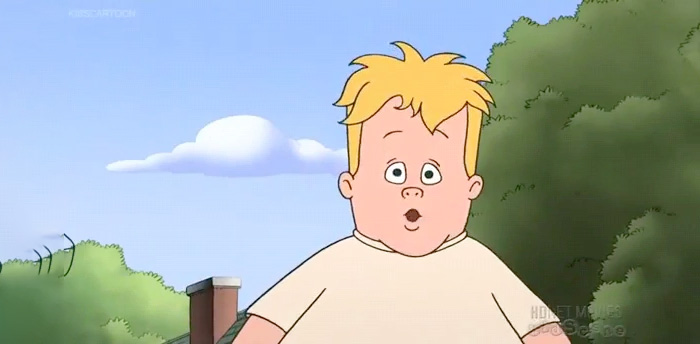
Unlike a stereotypical glutton, Mikey has major interests besides food and drink. He’s a budding poet and, in the episode “Tucked-in Mikey,” is named Poet Laureate of Third Street School. One episode shows him taking ballet, thus dismantling body type expectations. Perhaps most frequently and importantly, Mikey is seen as a “gentle giant.” He’s quick to defend any little kid he sees getting hurt or picked on. Mikey will lament “the humanity” of anything he sees as violence, and campaign for peaceful solutions.
Calling Mikey a deadly sinner seems odd, especially since he’s a kid. If he enjoys a triple-decker sandwich or a brownie a little more than the next fourth-grader, isn’t it petty to begrudge him. Mikey’s problem though, is not just with food. In fact, there are no Recess episodes that focus on his love of food, a desire to lose weight, or any related issues. His gluttonous tendencies present themselves as hand in hand with the food, where food is a physical manifestation of an unsatisfied hole he’s otherwise attempting to fill. Or, they present themselves as a gaping hole Mikey chooses not to fill with food, but hasn’t figured out how to deal with otherwise.
In any given episode, viewers see Mikey interacting with food as a commonality with other people. This allows him to define his relationship with that person on his terms. Alternatively, viewers don’t see Mikey using food, but do see him grasping for a larger “share” or less mature version of a relationship than he needs. Such behavior is not intentional, but it does reveal Mikey’s immaturity and personal weakness. It gives him an obstacle he must defeat several times throughout Recess so he can grow and prepare for the next stage of his life.
“Kurst the Not so Bad”: Constant Feasting, Temporary Redemption
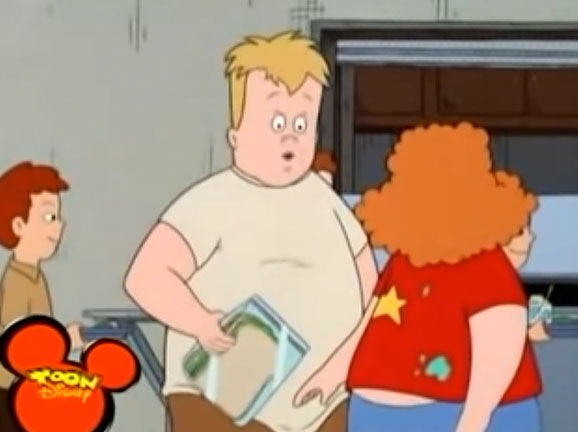
“Kurst the Not so Bad” focuses closely on Mikey’s love of food, as well as how it plays into his friendships. The episode opens on the first day of spring. Mikey’s friends are excited because this means warm weather and opportunities to do things like catching frogs at the pond and riding their bikes at Dead Man’s Dirt Pile. Mikey enjoys these activities too, but is most excited about Kelso’s Shillelagh Sundaes. These ice cream sundaes appear to be a sort of spring/St. Patrick’s Day promotional, six scoops of green ice cream (possibly mint chocolate chip) covered with green hot fudge, green whipped cream, green sprinkles, and “a juicy green cherry.” Mikey is the only one of his friends who can tolerate them, partly because of the coloring and partly because as Gus says, “After what happened [last year] on our living room carpet, my mom made me promise never to eat one again.” Actually, Mikey’s been known to eat two or three of the verdant things at once. This year though, when he gets to Kelso’s, “Kurst the Worst” knocks into him. Mikey’s first sundae, and Kurst’s two, end up on the floor.
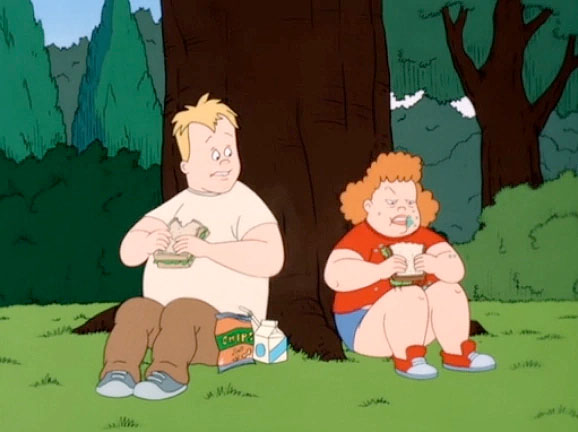
Kurst (real name Kirsten) is another of Third Street’s larger kids, but unlike Mikey, she’s maligned for her obesity, mostly because she’s also a bully. She hangs around with known “bad kids,” such as Mundy, Skiens, and Sue-Bob, kids who mouth off to teachers, make fun of and shake down others, and steal school property. She forces Mikey to buy her two sundaes, despite the fact that she purposely knocked into him. When Mikey acquiesces, Kurst assumes he’s a wimp. But she is surprised “somebody besides me likes them things,” so they enjoy their Shillelagh Sundaes together.
Mikey and Kurst’s first meeting touches off several days of a friendship based on gluttonous feasts. Said feasts involve everything from entire pizzas and double-decker liver salad sandwiches to massive containers of Chinese food. Viewers see a montage, so there’s no dialogue. However, they can assume Kurst and Mikey have amicable conversations during their meals, and continue spending time together, if away from their other friends, who probably don’t approve considering their mutual reputations. (Mikey’s friends would worry over their gentle friend hanging out with a known bully, while Kurst’s would tease her about socializing with a kid who could be intimidating but chooses to be “good.”)
If the episode stopped here, Mikey’s relationship with food and Kurst would be nothing to worry about. It’s not even worrisome when Mikey questions where Kurst got a huge pan of huckleberry cobbler she surprises him with during lunch one day. When Kurst, and by extension Mikey, are accused of stealing the cobbler, it looks as if Mikey is acting against the deadly sin of gluttony. He tells the lunch ladies he didn’t steal the dessert, and is instantly hurt that Kurst may have betrayed him.
The problem comes in when the real culprit is discovered. Kurst’s friend Sue-Bob admits to stealing the industrial-size pan of cobbler from the school cafeteria so that Kurst would start socializing with her old friends again. Mikey is exonerated, and he and Kurst make plans to meet for the last day of Shillelagh Sundaes. But he and Kurst are never on friendly terms again for the rest of the series.
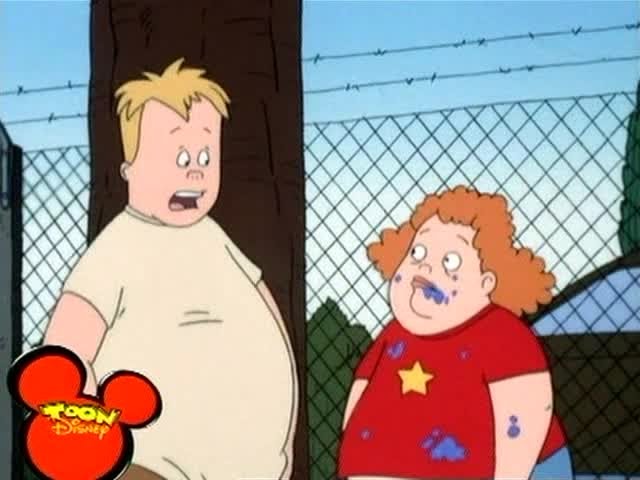
For a kids’ cartoon series, this isn’t as problematic as it could be. Cartoons tend to run on the trope Status Quo is God, wherein once dynamics are set up, they need to stay consistent for the series to make sense. But note that in Mikey’s case, the only thing he had in common with Kurst was food, and massive amounts at that. He only challenged her about her bullying when it affected him, namely, when he stood to be blamed for something she was indirectly involved in. Once the food, something Mikey enjoyed, went away, so did a lot of Mikey’s motivation to stay friends with Kurst.
One wonders how long he could keep up such a friendship, and if he would continue stuffing himself to do so. If Mikey would use food to expand his social circle, would he eventually imitate some of Kurst’s more aggressive behavior, especially in the name of gluttony? Given Mikey’s empathy level, this seems unlikely, but is a possibility. That empathy, coupled with Mikey’s tendency to jump into a “deep” but temporary friendship based on what he’s getting from it, indicates he’s getting ready to face sinful tendencies. He’s not ready to grow into his next level of maturity, but has made great strides.
“Bonky Fever”: Bonky Pops and Birthday Blues
Mikey moves closer to a deeper level of maturity during the episode “Bonky Fever.” The episode centers on his tenth birthday, a major milestone for the Recess gang. As the inaugural double-digit birthday, ten is a maturity marker. At one of the last recesses before Mikey’s big day, his friends discuss what privileges they’ll enjoy once they turn ten. Gus will get to stay up half an hour later; Vince is getting bumped to the next allowance bracket. T.J. asks what Mikey’s looking forward to, but the bell rings before he can answer. A bunch of kindergartners rush by, and Mikey notices one of them dropped their sippy cup. Said sippy cup has a picture of Bonky on it, a green, overalls-wearing dragon reminiscent of Barney the Dinosaur. “Hello, old friend,” Mikey murmurs, keeping the cup.
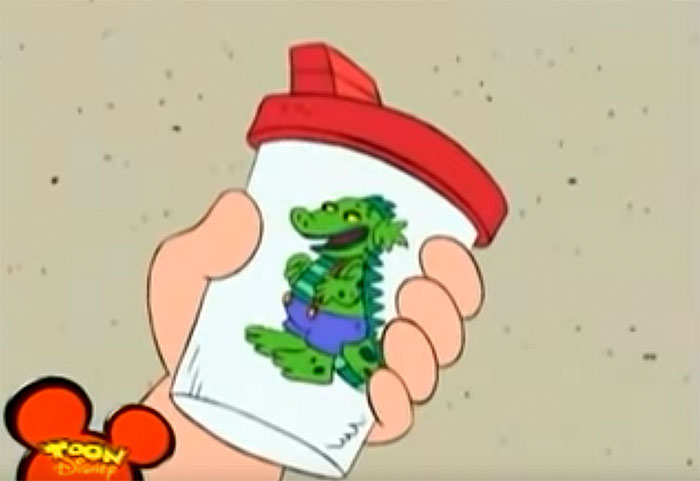
In the next few days, Mikey becomes a glutton not for food, but for Bonky and material representations of him. He sculpts a likeness of Bonky in the sandbox and sits on it when his friends come to see what he’s up to. He wears a Bonky hand puppet in the school’s public spaces such as the cafeteria, using it to talk to the cafeteria lady and ask for extra pudding in a preschool-esque voice (“Bonky loves pudding.”) As T.J. says, Mikey’s backpack becomes “jammed with Bonky junk”–a blankie, a ball, a stuffed animal, and other objects inappropriate for a fourth grader. Food figures in once, when Mikey’s friends catch him sucking on a frozen Bonky Pop. His face is soaked in the sugary, blueberry-flavored evidence.
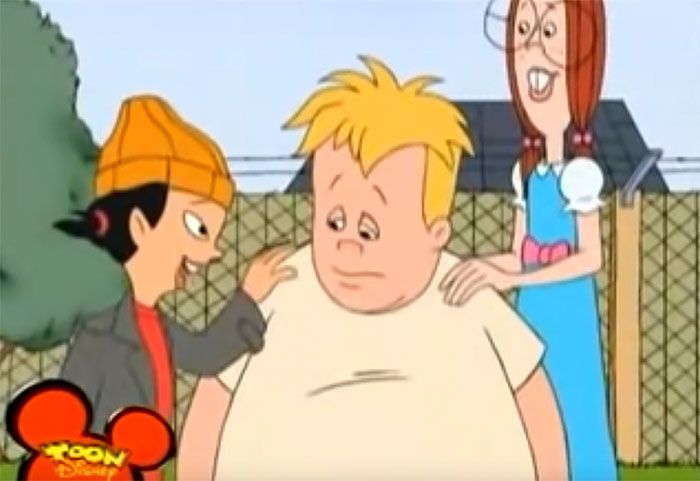
As true friends do, Mikey’s try to help him kick the Bonky-centered gluttony without humiliating him or letting the other kids find out. But when Mikey takes a spill on the playground, his Bonky toy stash is exposed and the whole school makes fun of him. T.J. turns everything in to Miss Finster, whereupon Mikey becomes hysterical. The next day, he admits his friends were right and he needs to kick the Bonky habit. But when everyone shows up for his birthday party, they’re greeted with Bonky games, a Bonky cake, and “Bonky himself”–Mikey’s mom in a Bonky costume, a bunch of kindergartners dancing around her. Mikey’s material gluttony has reached its peak.

Mikey flees to his secret spot, a bench near the Blumbergs’ old sandbox, where he and Mom have a private moment. It’s here that viewers learn once again, Mikey is showing gluttony toward a relationship. In this case, Bonky and the possessions associated with him were a stand-in for Mom. Mikey became anxious about the independence associated with turning ten. He wanted to hold onto “those halcyon preschool days” when his world consisted of Mom and his favorite character, Bonky. Keeping Bonky around was a way of hanging onto Mom.

Mikey’s motives are understandable and believe it or not, age-appropriate. They inspire sympathy, not derision, and are in no way sinful. The deadly sin here is again in how Mikey handles his desires. The time and presumably money he’s spent on Bonky, as well as emotional energy, is to excess. He’s also placed himself in emotional danger. If other kids tease or bully him, that’s not Mikey’s fault. But continuing with the Bonky obsession, or similar behavior, will stunt Mikey in more permanent ways. It implies to his mom and others that their friendships or relationships can only make him happy on his terms.
Mikey’s gluttony is more contained, and less serious, than the deadly sins seen so far. Particularly in “Bonky Fever,” he comes to a place of maturity and developing virtue with relative ease. Once Mom assures Mikey she can’t be lost, and independence is a good thing, he’s ready to move forward. His age, natural resilience, and peer support system mean Mikey can find healthier outlets than a fictional dragon. As for food, Mikey may always be a “foodie.” He may always be a bigger guy. His character, however, indicates he won’t grow into an adult glutton with major obesity, depression, or associated issues, so long as his support system remains strong. Of anyone discussed so far, Mikey has the shortest heroic arc and journey. He also has the most potential to kick a deadly sin for good, and use the corresponding virtue of abstinence the right way.
Merida: Swallowed By Selfishness
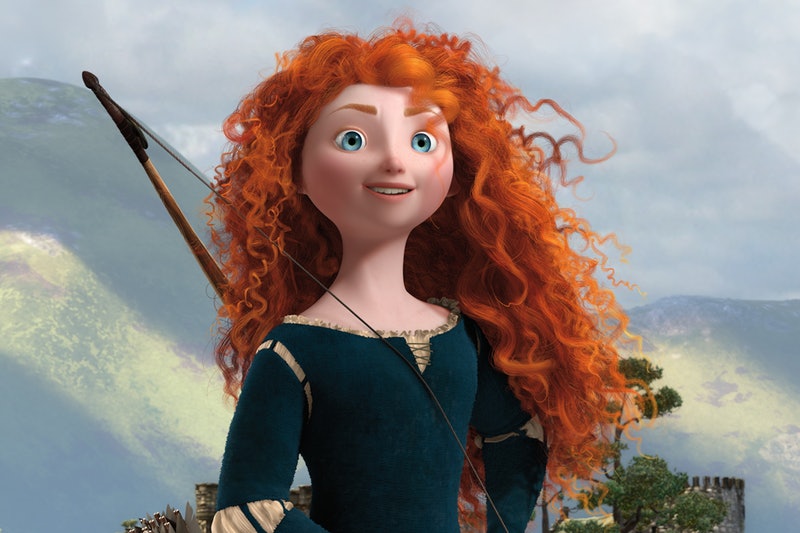
The female glutton in the discussion of Disney’s deadly sin returns us to film, but into a less traditional, more modern look at this “lesser” deadly sin. Princess Merida of Brave stands out as a more voracious eater than her royal counterparts. She’s unafraid to munch on a scone or snitch an apple on her way out for a morning ride on her beloved horse Angus. At least once, her proper mother Queen Elinor cautions, “A princess does not stuff her gob.” Yet, Merida isn’t seen eating often enough, or voraciously enough, to call her gluttonous based on her relationship with food. The most viewers can say is, she’s healthy, since she enjoys both a hearty appetite and plenty of activity. Pair that with Merida’s avoidance of arranged marriage, her spunky personality, and yes, her courage, and we might be tempted to call her an almost perfect if not sinless role model for modern female Disney fans.
Still, Merida is human and susceptible to deadly sins, specifically gluttony. Merida is a material glutton in terms of “the big picture.” She’s a glutton for her kingdom, and an interesting case because she’s unconscious of that gluttony. Merida spends most of Brave not only saying, but acting as if, she hates being a princess. Why and how, then, can she be a glutton for her kingdom?
To find out, viewers have to probe her personality, as well as the smaller things that make her “hungry.” As they watch her “gulp” those, they’ll find the root of her deeper gluttony, and the way in which she defeats the deadly sin to become a virtuous ruler.
Eaten Alive by Expectations
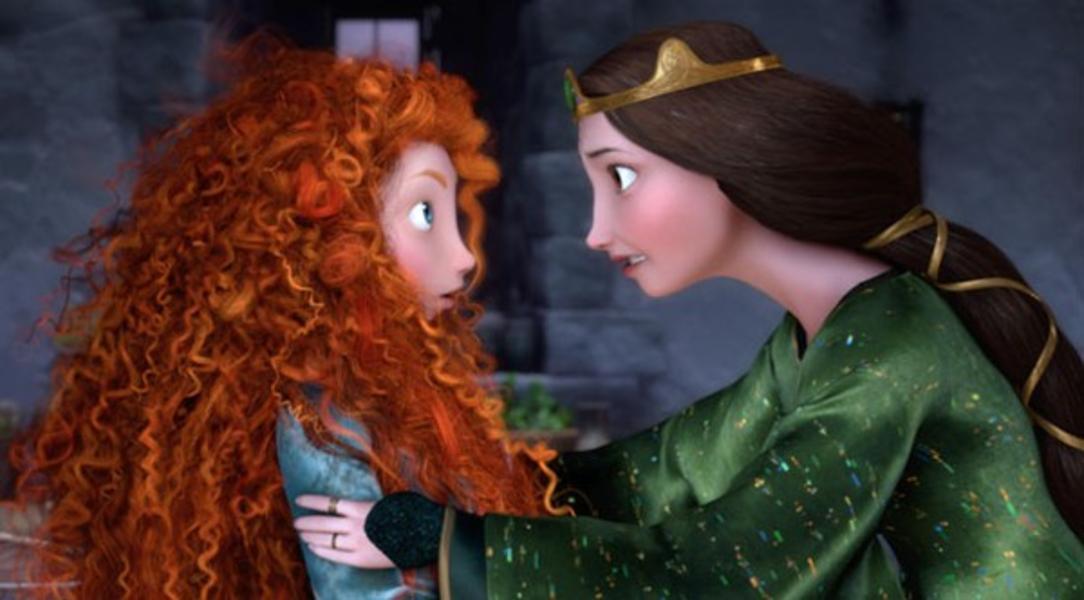
At first, Merida seems the opposite of gluttonous. The life of a princess is emotionally eating her. Through her narration and clips of interactions with Queen Elinor, viewers get a whole list of expectations placed on her. Most of these revolve around what princesses can’t or don’t do, or things they must do, that don’t come naturally for Merida. Princesses are quiet; they do not “stuff their gobs”; they keep their hair neat and pulled back no matter how naturally curly it is; they stand up straight; they study and practice the lute for hours. Merida goes along with these expectations, but chafes to varying degrees. Viewers get the sense her barely muted groans of frustration have been hiding a dormant volcano for years.
Any tiny bit of relief she can get, from letting her bright red curls go flyaway to sneaking an extra scone for herself or her triplet toddler brothers, Merida will take. This might be slightly self-absorbed, but it’s not sinful. As with the impetuous Ariel and the temperamental Jack Kelly, it’s expected teen behavior (Merida is 16). It’s only when Merida’s “princess” role, and emotions, are put to the ultimate test that her gluttony is allowed free reign.
Viewers empathize with Merida as the protagonist, the “good guy,” because they see her at her best when she’s doing what she loves. Merida glories in “a day when I don’t have to be a princess,” a rare free day when she can go riding and practice her favorite activity, archery. She gallops over dangerous cliffs and waterfalls, hitting the bulls-eye on multiple mounted targets and challenging herself to hit the most difficult new marks she can find. With Scottish singer Julie Fowler’s “Touch the Sky” as a backdrop, viewers grab onto a bit of Merida’s irrepressible spirit. They may note she puts herself in danger, risks injury, and in takes in “too much.” But Merida hasn’t hit full overindulgence yet. Her free time is sanctioned, and she does come home, back to her “princess” role, if just before curfew. Merida knows there are limits to how much “material” she can have, and she respects those, though she skirts the line.

Soon though, Merida’s joy devolves into rebellion. This starts innocuously, when Elinor warns, “A princess does not place her weapons on the table.” Merida protests–“Mum, it’s just my bow.” King Fergus sticks up for his daughter, encouraging her to tell an exaggerated story about her adventures that leads to a retelling of his own exploits with the bear Mor’du. Meanwhile, Merida “stuffs her gob” to Elinor’s disapproval, squirrels away her brothers’ hated vegetables, and slips them dessert ahead of time. Elinor resigns herself to all this, underlining the idea that she’s once again and as ever, the “bad cop” parent.
Perhaps that’s why Elinor is unsympathetic when Merida reacts with horror at the news of an arranged marriage. Despite her daughter’s justified shock and anger, Elinor holds firm. The lords of three nearby clans are coming to Dun-Broch tomorrow with delegations, and Merida will marry someone, for the good of the kingdom. Another expectation, the most life-altering and worst of all, has taken a bite out of Merida’s spirit, with her mother holding the carving knife.
Gulping Freedom at Any Cost
If any Disney protagonist had a reason to commit a deadly sin, Merida is it. Other Disney princesses have faced arranged marriages–Jasmine, Mulan, and Pocahontas, for instance. But never has the possibility been so immediate or central to a princess’ plot and character arc. It’s clear should Merida go through with an arranged marriage, she’ll lose most if not all of what makes her an individual. She’s justified not only in the emotions that lead her to commit her gluttonous actions, but arguably, in committing them at all. The reason Merida needs to defeat gluttony is somewhat unique. It’s less for her own good, than for the good of her mother, her kingdom, and her legacy.
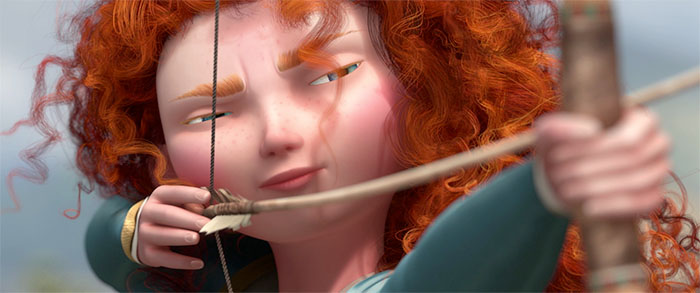
Before Merida can realize any of this, she has to experience the trials of sinful choices. She chooses to “gulp” and grasp as much freedom as she wants through archery and the adventure it represents. In Brave’s most famous scene, she shows up in the constricting dress and headpiece Elinor approves of and plays the role of the demure princess, only to announce, “I’ll be shootin’ for my own hand!” The dress rips all the way down the back as Merida shoots straight through the archery target, tearing through the cloth and leaving over half her arrow embedded in the back, almost completely disintegrated.
It’s a bold and unforgettable move, and considering Merida’s other choice–being competed for like a trophy–somewhat admirable. Yet it is also an act of defiance and immaturity. Its public nature sets up mother and daughter for humiliation, and the kingdom of Dun-Broch to look poorly managed. Additionally, Merida’s “shootin’ for her own hand” marks her as an independence glutton. Rather than showing the grace Elinor has taught her and expressing her misgivings in a calm and private moment, Merida publicizes her rage, resentment, and selfishness. She exposes her obsessive love, not only for archery and athletics, but potentially dangerous independence and the preference for these over royal duties. Merida reveals her freedom and any material symbolism thereof, such as her bow, are her idols.
Hoarding and Gulping Her Kingdom
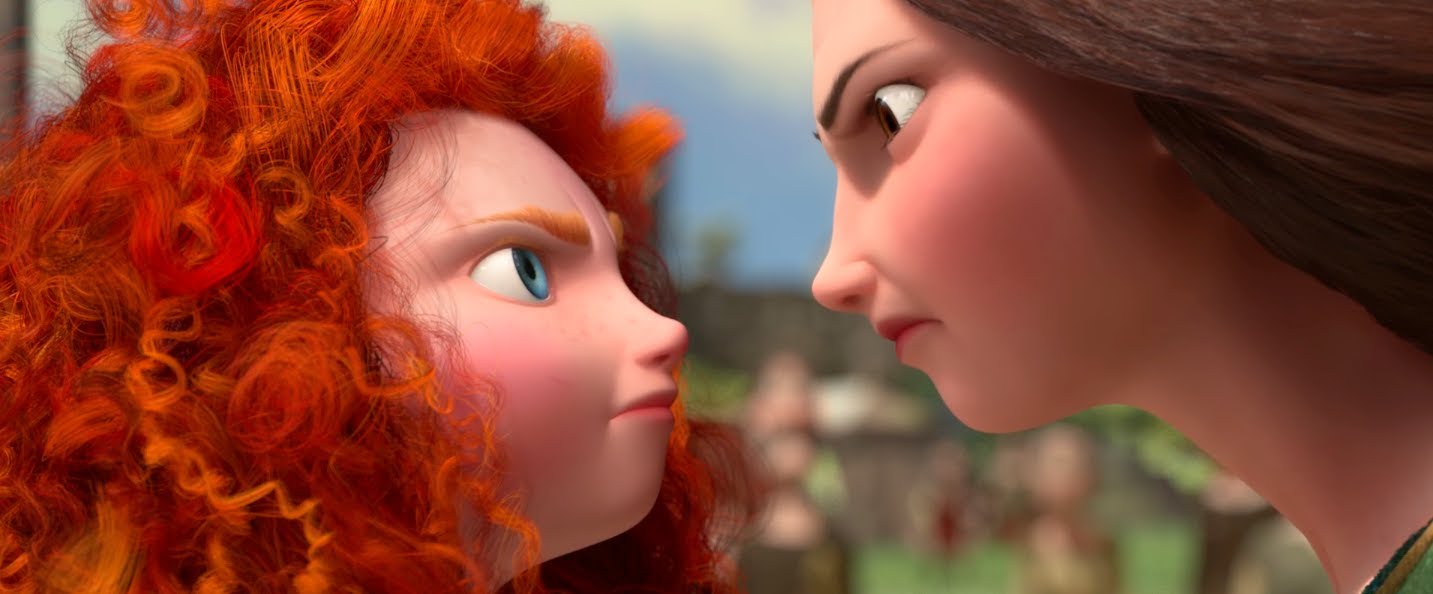
Mother and daughter get into a fight reminiscent of Ariel and Triton, and Elinor burns Merida’s bow, breaking her heart. Like Ariel before her, Merida runs to a local witch for help, but doesn’t use the associated magic for herself alone. She steals a spell that the witch–who isn’t home and left instructions on a cauldron “answering service”–promises will change her fate. Merida presents the spell to Elinor inside an enchanted cake, in the guise of a sweet apology gift. But the gift–a tempting food–doesn’t help Elinor. It doesn’t change her mind toward her daughter, as Merida hoped. It changes Elinor into a bear, the raging, unsympathetic “beast” Merida accused her of being.
Merida is horrified at what she’s done. When she learns Elinor could remain a bear forever if the spell isn’t broken “by the second sunrise,” she’s determined to set things right. Yet, her gluttony, fed by the pride that tore her bond with Elinor, still drives most of Merida’s actions. She may not want to be a princess if that means obeying all the associated rules and expectations. Yet she’s a glutton for her kingdom because she wants to rule it on her own terms. She has always refused to listen to Elinor, Fergus, or anyone else offering sound counsel.
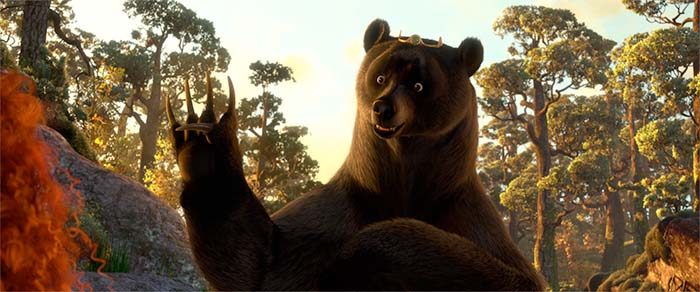
Rejecting certain counsel, such as submission to an arranged marriage, would not make Merida a bad queen. But “hoarding” the position and her freedom, as she interprets them, keeps Merida from “feasting” on friendships, love relationships, and beneficial political alliances. And while Elinor, in bear form, may be losing her humanity–tearing into food and destroying forest fauna–it’s Merida who stands to let gluttony win. Given her own way, she’ll eschew “healthy” traditions and wisdom for the decadence of a kingdom run her own way. In such a kingdom, Merida’s bravery would rule, but so would her whims and tendency toward excess. Her subjects might love her courageous and irrepressible spirit, but learn to fear her impetuousness, temper, and potentially reckless actions.
Freeing Her Spirit’s Mouth to Talk
It is only after Merida is forced to spend one-on-one time with Elinor, to care for her and help her hold onto her humanity, that she can start rising above emotional gluttony. Merida starts out giving her mother the minimum effort, providing only food and shelter. But Brave elongates the short time mother and daughter have to break the bear curse. They rediscover each other and bond. Merida shares some fond memories of having fun with Elinor when she was little. One such memory in the movie’s prologue showed Elinor pretending to be a bear and “eat” her daughter through kisses. Merida also retells a legend of a lost prince whose kingdom and family were torn apart because of temper, pride, and emotional gluttony, a legend Elinor had tried to tell her before and she had ignored.
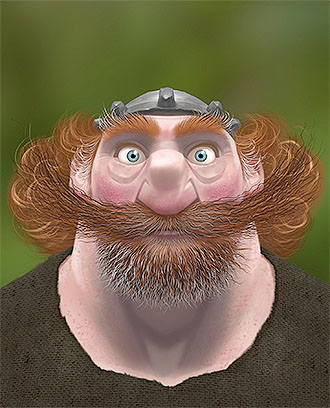
It is this legend that leads Merida to the solution for Elinor’s curse. Since breaking it requires “[mending] a bond,” Merida figures mending the tapestry she destroyed in the fight with Elinor will show her willingness to mend her selfishness. Thus, she and Elinor return to Dun-Broch, but find the clans ready for war and Fergus out for blood, convinced Mor’du has eaten his wife and possibly his daughter. Shaken and repentant, Merida tells Elinor, still in bear form, she will submit to marriage to broker peace. But through sign language, Elinor coaches her daughter through a brilliant diplomatic speech, in which Merida announces the clans’ firstborns will now be allowed to choose spouses on their own time. This will reduce inter-clan competition and foster longer-lasting peace rather than the uneasy truces and alliances of the past. Further, it opens Merida to the sharing of her kingdom and personal interdependence, which will make her a stronger monarch.
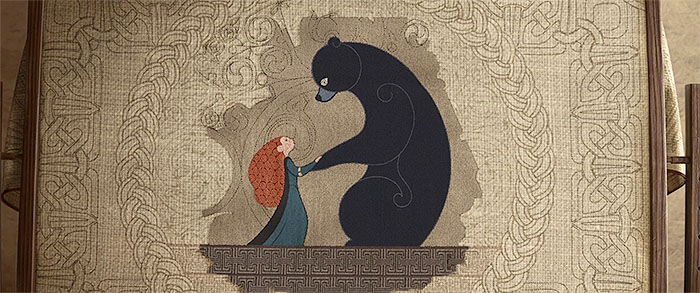
But before Merida can complete her arc and overcome emotional gluttony, she has to get her mother out of bear form. Merida’s final act of triumph is a team effort between mother and daughter, as Elinor gets between Mor’du and Merida, placing the bear in the path of a falling menhir. Merida and Elinor’s mutual self-sacrifice attempts reveal Mor’du holds the trapped spirit of the long-ago legendary prince, who is now able to live free as a wood wisp. Elinor too, is freed from bear form, and Merida finally gains the freedom she always wanted, because she was willing to give it up. As with Mikey Blumberg, a little abstinence, a little willingness to share and live on terms other than hers, ensured Merida had the open and free spirit she needed. Like other princesses who have overcome deadly sins, Merida ends her story ready to rule as a monarch of virtue.
Sloth: Pocahontas and Simba

The second sin of the “little three,” sloth, is difficult to pin on any Disney protagonist, male or female. It’s difficult to associate with any Disney character, including the villains. Disney is associated with chasing and following dreams, which presupposes some form of work ethic, even if that ethic is evil.
Additionally, most analyses of deadly sins caution that sloth is a lot more than laziness. A slothful person is not just someone who indulges in a weekend in bed watching Netflix now and then. It’s not someone who devotes him or herself to pursuits other than climbing the corporate or social ladder. Someone guilty of sloth has an overall apathetic attitude. It has been described as “carelessness, unwillingness to act, half-hearted effort, [and] becoming easily discouraged by any possible difficulty” (vintagechurchnola.com). Some descriptions also bring in self-pity, boredom, or a lack of feeling toward self or others, as well as indifference toward the work of God. Sloth is mental, spiritual, and physical all at once, and so it can be impossible to say whether it is someone’s major vice. As with gluttony, sloth usually has another sin feeding it.
While sloth isn’t a huge vice for Disney protagonists, it does pop up for two. Both the slothful protagonists in this discussion are Disney royals. That royal position, again, makes the sin understandable if not justifiable. The phrase “heavy is the head that wears the crown” comes to mind for these two. In learning to balance the responsibilities of being monarchs, our more slothful protagonists take a unique journey away from sloth and toward diligence that will benefit their kingdoms.
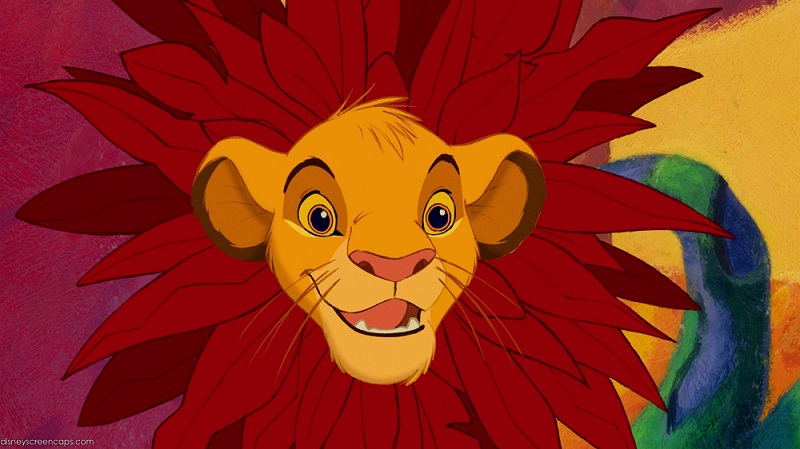
For sloth, female protagonist Pocahontas will be examined first, male protagonist Simba second. This is partly because Pocahontas is human, and therefore her version of sloth is more easily read as a sin. Secondly, Simba has a more definite “start” to his sloth in the second half of his film, but it is more overarching and “below the surface” than Pocahontas’. Thirdly, females are more likely not to be accused of slothfulness. Catholic catechism reveals they are more likely to confess sins like pride or envy. Therefore, females are less likely to be held accountable for sloth or hold themselves accountable.
Pocahontas: Strong But Misguided Spirit
Viewers first see Pocahontas’ sloth before meeting her. The first scene of her Virginia Colony Powhatan village focuses on several women harvesting corn, building boats, and caring for small children. With females’ voices prominent, the community sings about how they work to keep their tribe and community going, how they commune with nature, and how they pray to the spirits to walk with them so they can stay “steady as the beating drum.” The titular character though, is not there. When Chief Powhatan appears to great fanfare, and other women rush to greet their arriving husbands, fathers, and sweethearts, Pocahontas still doesn’t appear. “Where is my daughter?” Powhatan asks medicine man Kekata. He notes her absence with patience, but affectionate disappointment.
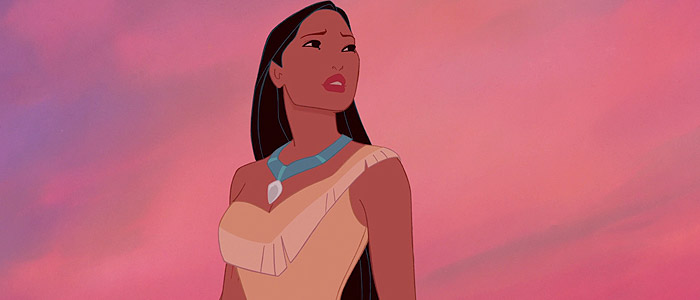
Kekata, too, seems used to Pocahontas’ absences from the community, including important occasions. Yet he passes it off. “You know Pocahontas. She goes wherever the wind takes her,” he says. And Pocahontas has slipped off to chase her own agenda. While her community has prepared for the arrival of its males from war and a successful harvest season, Pocahontas has been exploring in nature. She stands on a high cliff, hair billowing in the wind, eyes closed, colorful leaves swirling about her. It’s a gorgeous picture indicating her propensity toward dreaminess, maybe spirituality. Yet one wonders how Pocahontas tempers any spiritual leanings with physical and emotional effort.
Pocahontas’ inattentiveness is underscored when her best friend Nakoma has to remind her that her father was due home today and she needs to come down. Pocahontas obliges, but rather than making the effort to climb off the cliff, she jumps straight off into the river below. Again, this is a positive wrapped in a negative. It shows Pocahontas is brave and free-spirited…but it also hints she’s not keen on doing any unnecessary work.
Pocahontas’ tribe hand-waves her behavior because as Kekata says, “she has her mother’s spirit,” and Pocahontas’ deceased mother was a beloved tribe member. Additionally, Pocahontas is a young 18. While her tribe and colonial America at large would consider her an adult, she’d be newly “legal” in the 21st century. Couple that with the fact that she’s already showing a lot of her mother’s positive traits, and her deadly sin looks innocent. There’s a slim argument for spiritual maturity since Pocahontas is interested in finding her personal path and has dreamed of it several nights in a row.
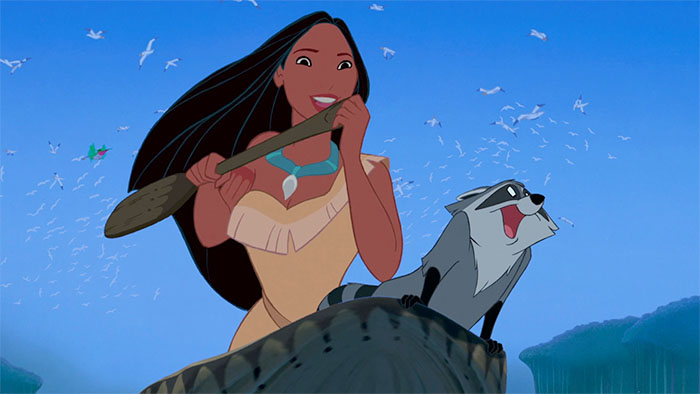
The sins of other protagonists have lurked below the surface though, and Pocahontas’ sloth is no different. When she does make it back to her village, she hardly pays attention to the warriors’ welcoming ceremony. She makes a sarcastic comment about newly honored Kocoum, dismissing his bravery and success in battle because he’s too serious. Later, she begins talking about the search for her own path without inquiring after her father’s welfare, pointing to emotional carelessness. And though Pocahontas listens to Powhatan’s philosophy about steady rivers and houses with sturdy walls, her first instinct is to reject it in favor of “what’s around the riverbend.”
Much of this negativity goes back to Pocahontas’ personality, which is somewhat inborn depending on one’s stance regarding nature vs. nurture. Also, like Merida, Pocahontas reacts to her father’s philosophy partly because she doesn’t want an arranged marriage with Kocoum. At 18, and never having explored any other options, she has every right to question or reject that possibility. Above all, she is correct that her spirituality can point her down a path away from her tribe’s expectations.
But the way in which Pocahontas handles these desires and emotions does not leave room for her to contribute to her tribe. It doesn’t let her put effort or care into the people she loves, the values she was taught, or how she’ll grow from a child into a woman within her culture. Unlike most slothful people, Pocahontas is eager to act, and not half-heartedly. But the question is, who does she act in the best interest of and for what purposes? Right now, the answer is only herself.
Listening to Heart At Expense of Head
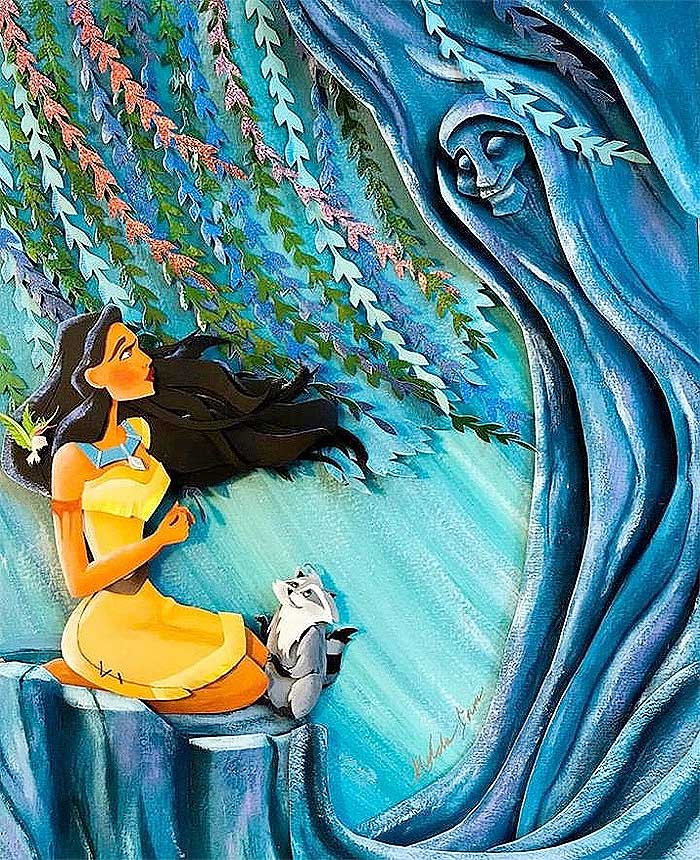
Pocahontas handles her desires and emotions with help from a mentor, something most protagonists in this discussion don’t do. Several scenes show her talking with Grandmother Willow, a wise tree spirit who loves the young chieftain’s daughter like a granddaughter. However, their interactions leave viewers questioning whether Pocahontas interprets Grandmother Willow’s advice correctly or uses it as justification for sloth. Put more bluntly, another question arises from mentor and mentee’s interactions. Viewers should ask if Pocahontas is hearing what Grandmother Willow means her to hear, or is taking her advice and imposing what she wants to hear.
Pocahontas’ “selective hearing” begins when she meets John Smith, who has come over from England to scout out the New World, create a settlement, and help entice more colonists to make the journey. (He’s also an unwitting participant in villain Governor Ratcliffe’s scheme to raze the land for nonexistent gold and decimate the native population, which becomes a much bigger issue later). Smith’s ship, and Smith himself, fascinate and frighten Pocahontas. She’s not sure how to react when he approaches her, extending a hand of peace. Grandmother Willow’s song echoes in her mind–“Listen with your heart, you will understand.” Viewers hear the wind and what sounds like drumbeats and a spiritual singing voice, and Pocahontas introduces herself, presumably in English. Language barrier broken, she and Smith begin a friendship. Their hands touch in a swirl of the princess’ signature colorful leaves and sparkles, the camera lingering on their united white and brown tones. The beautiful moment doesn’t cross into sloth. It’s one of Pocahontas’ best efforts at anything.

Yet, during Pocahontas and Smith’s time together, that effort is one of Pocahontas’ biggest and perhaps only ones. She debates whether to see Smith again despite Powhatan warning the entire community that the visiting colonists might be a problem and he doesn’t want anyone involved with them until he knows more. Pocahontas says she wants to see Smith again, and Grandmother Willow agrees, “I want to see him again.” Her tone shows obvious appreciation for Smith’s Nordic good looks and may echo her spiritual granddaughter’s teenage crush. This hearkens back to the “selective hearing” issue. Instead of making an effort at self-control, Pocahontas chooses the easy road of sneaking off to see Smith. She continues this behavior to the point of making Nakoma lie for her, foisting the hard work of owning her responsibilities off on someone else.
Don’t Just Sing, Do Something
This isn’t to say Pocahontas is a bad person or a potentially awful ruler. Actually, she’s closer to breaking away from her deadly sin than most protagonists have been by her film’s midway point. Hers is a case where what starts as a careless approach was well-intentioned, and given time, blossoms into a gift she can turn into a virtue sooner than most Disney protagonists experience.
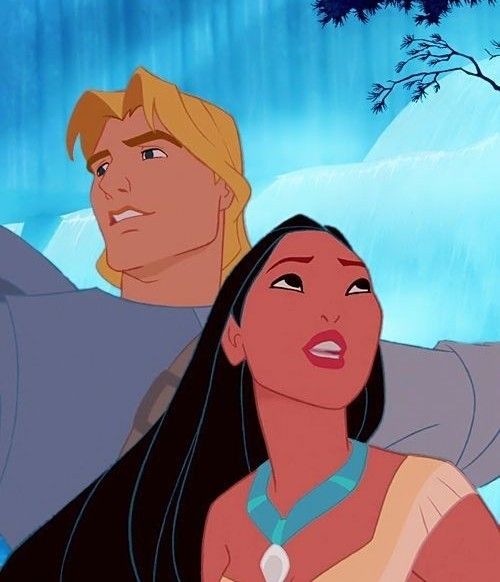
At about the midway point of Pocahontas, both the titular princess and John Smith are becoming aware of their situation’s truth. They know race, culture, and expectations will likely keep them apart. John Smith knows Ratcliffe is cruel and greedy, if not yet a murderous bigot. Pocahontas gets a rude awakening when Smith calls her people “savages” to her face. This moment is where most adult Disney fans say she should’ve walked away for good. One famous Facebook meme that shows what would happen if Disney heroes had moms shows Pocahontas telling her mother about this and her mom saying, “WOW. Dump his [butt!]”
Pocahontas reads Smith the riot act, Disney style. Her song “Colors of the Wind,” about mutual understanding, respect for fellow humans and the Earth, and the dangers of greed, is now one of the most famous in the Disney canon. The song’s reputation is well-deserved, but critics have called it preachy, and they’re right. The message doesn’t delve into the real nuances and problems between First Nations people and the colonists. Pocahontas and her song keep the issues rather sanitized.
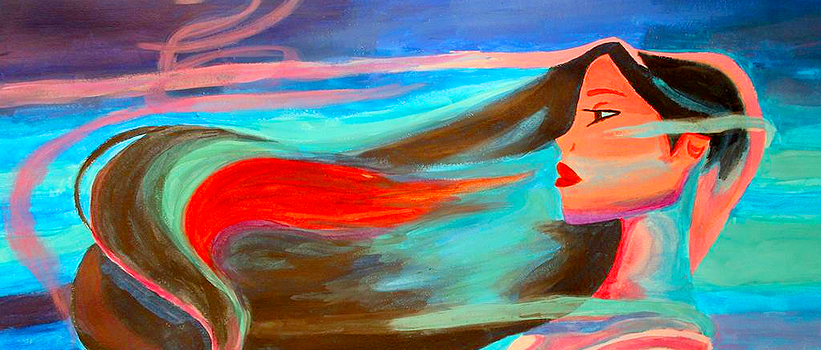
While that’s okay for an audience of small children, it gives both protagonists an easy out. They can walk away feeling because they “understand” each other, because they have agreed not to use words like “savages” anymore, their nations will be okay. Neither one, especially Pocahontas, has acknowledged the time and work it will take to repair the wounds. Pocahontas would’ve done better to make the more challenging choice, perhaps actually talking it out. Alternatively, she could have walked away from Smith altogether. Returning to her community, focusing attention on her role as princess and finding out what she could do to help her people cope with the colonists’ presence, would’ve lifted her from sloth sooner and landed her in the virtue of diligence.
From Lazy Preaching to Real Peacemaking
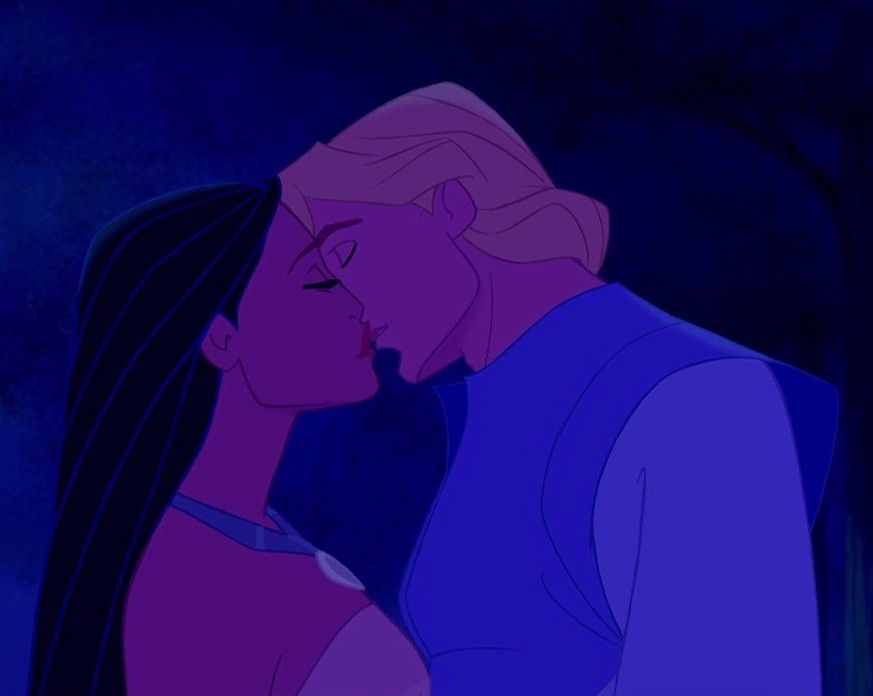
Pocahontas’ continued choice to take the easy way out means she’s unprepared when her actions lead to tragic consequences. Smith’s friend Thomas catches her kissing Smith one night, as does Kocoum. Kocoum rushes to attack Smith, and Thomas shoots and kills him. The Powhatan tribe takes Smith prisoner, intending to execute him, and Ratcliffe is all too eager to retaliate. The ensuing song “Savages” is a chilling lyrical example of unbridled hate. Pocahontas is left smack in the middle. Now the only path this individualist princess can seek is the one that will keep everyone alive. Fortunately for her, that’s the path that will force her to abandon sloth and self-interest.
Pocahontas’ initial reaction, throwing herself on top of Smith seconds before his execution, is sometimes decried as her most foolish. Critics sneer that she’s the first princess who is willing to die for a man she’s known less than a week. They aren’t wrong, but Pocahontas’ accompanying speech reveals she’s not protecting Smith for herself. “This is where the path of hatred has brought us,” she says, encompassing her entire tribe. She exhorts them all, “Look around you,” indicating she recognizes how war will affect everyone. Additionally, she leaves the final decision to go to war in Powhatan’s hands, acknowledging she has chosen her path but asking what his will be. Rather than continuing to make a long, impassioned speech–or singing a dramatic song–Pocahontas leaves her dialogue at a few words. She chooses those words with care. Now, she exhibits the control of silence and, though she hasn’t done any “hard work,” will leave all her effort “on the field.”
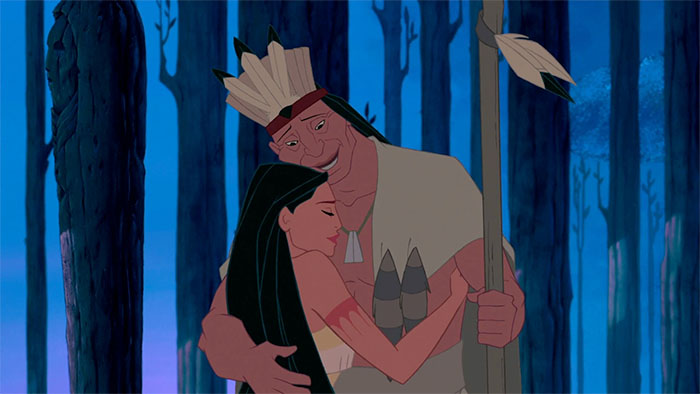
That effort pays off. Powhatan credits his daughter with “a wisdom beyond her years.” He declares, “From this day forward, if there is to be more killing, it will not start with me.” This is a major statement for the whole tribe, and considering we’re in a fictionalized Disney movie, it may not hold up. However, Powhatan’s declaration shows he’s ready to and respect his daughter as a co-ruler. The climactic scene shows Pocahontas is learning the gravity of her role as a tribe leader. Her history and the presence of an able, loving parent mean she may not step into that role for some time yet. Like Merida, she may still marry before that happens, or maybe not. No matter what though, she’s learned to approach the next phase of life with much more diligence and introspection.
Simba: All Roar, No Teeth
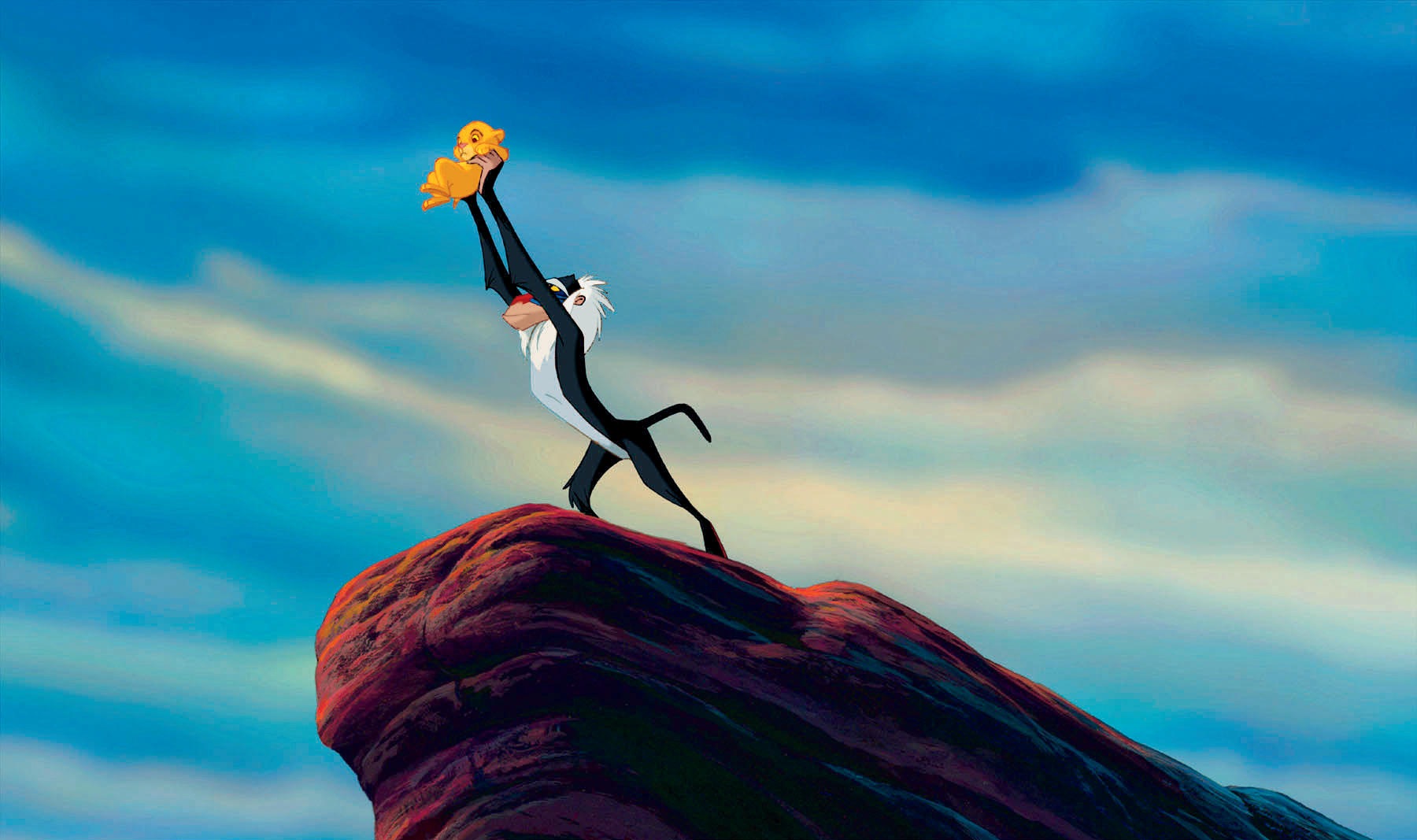
Disney’s second slothful royal is a different kind of monarch, “king of the jungle.” It’s Simba from The Lion King. Because he is an animal, it might be tempting to keep Simba out of the discussion. In real life, sins aren’t attributed to animals, because they act on instinct. Plus, unlike Woody, Ariel, and Ralph, who are somewhat or mostly human, Simba isn’t a human at all. However, he counts because in the context of his film, Simba behaves as fully human. In many ways, he’s a lion in name only. For example, he never eats another animal, mates the way a lion in the wild would, or maintains the hierarchy of a pride. He also reasons like a human and eventually takes responsibility for his actions on a human level.
That said, it can be harder to read Simba’s sloth as analogous to human sin. Put “Simba” and “sloth” in the same sentence, and most viewers might jump straight to his “Hakuna Matata” years, which would be accurate. The truth though, is that Simba has slothful tendencies from his cub days onward. Some examples are much milder than others because of his youth, and “the big four,” especially pride and wrath, feed some of the others. Yet Simba’s action, or lack thereof in sloth, is his downfall and almost proves the downfall of his kingdom.
All Fun, No Responsibility
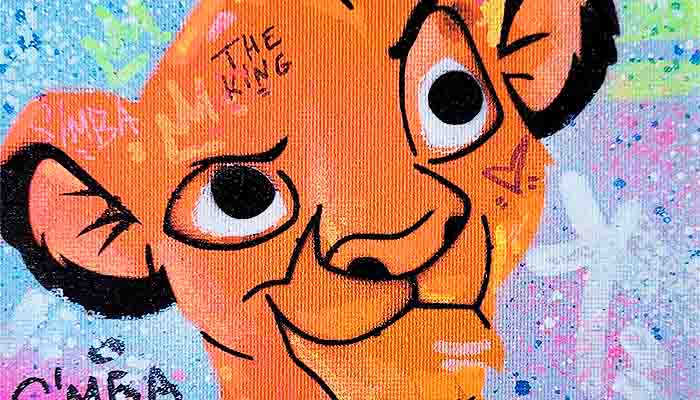
Simba doesn’t know his role or responsibility as a prince from day one, but he and his kingdom know he’s set apart for it. The first time he locks eyes with viewers, he’s in the arms–ah, paws–of court sage Rafiki, presented to the kingdom on top of Pride Rock. He’s undergone a celebratory yet solemn ceremony, wherein he’s “anointed” with special powders and oils, and shown ultimate honor. Aside from the requisite cuteness, little Simba’s eyes hold a look of overwhelmed awe. Yet when viewers see him again, he’s gone from awed newborn cub to eager, fun-loving little prince, anxious to experience all the Pridelands can offer. He’s especially excited because today, Dad Mufasa has promised to show him the whole kingdom. The responsibility of being lion prince hasn’t crossed his mind yet. Nor, arguably, should it at Simba’s tender age. His biggest worry is making sure Mom and Dad get a move on, already.
With such a go-getter attitude, Simba doesn’t read slothful. In fact, he absorbs Mufasa’s lesson on the Circle of Life and asks appropriate questions, such as how that circle works if animals like him are allowed to eat animals like antelope. Ever the wise and attentive parent, Mufasa explains. Simba tries, but can’t help rushing ahead both physically and emotionally. He’s enamored with the idea that “a king can do whatever he wants.” When Mufasa says there’s more to it than that, Simba’s, “There’s more,” reads like he’s anticipating greater privileges, not greater responsibility.
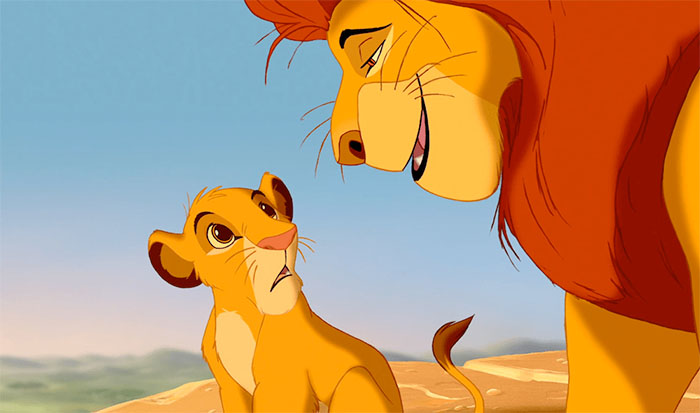
Simba is still a cub, so we can’t and won’t call him careless or lacking in self-control yet. But he is old enough for Mufasa’s lessons about being a good king to start sinking in. Simba’s character, though still developing, doesn’t indicate that’s happening. Simba would rather shift his focus to the next fun thing, whether that’s a pouncing lesson or a journey to the elephant graveyard–a journey Mufasa explicitly warned him against and his Uncle Scar conversely encouraged. Granted, Scar unfairly preyed on Simba’s desire to be brave and prove himself to his father. Simba bears no responsibility for carelessness or slothful disregard on that score. What he does bear responsibility for, is his careless attitude regarding Mufasa’s rules, and the lack of effort to follow them that leads to open defiance.
Older viewers, especially adults, notice a nod to sloth during Simba and friend Nala’s trip to the graveyard. To distract and “ditch” guardian Zazu, Simba sets up the catchy musical number “I Just Can’t Wait to Be King.” The song turns into a full production involving the whole savannah and ending with Zazu trapped under a rhino. On the surface, it’s humorous and innocent. Simba still has the childlike impression that being royal is about doing what you want, when you want, and never being told “no.”
But older viewers note that Simba can only become a royal if Mufasa and Sarabi are not king and queen anymore. Thus, like the Bible’s Prodigal Son, Simba is gleefully anticipating his dad’s death. It’s not an intentional example of sloth, but it is an extremely lazy and careless way to treat the royal position and by extension, the Circle of Life. Since Simba uses the musical number as a distraction to further his defiance, it’s that much worse. Had Mufasa known about it, one wonders, would he have been more upset about his son’s planned disobedience, or about his attitude toward kingship?
No Worries–and Maybe No Concern?
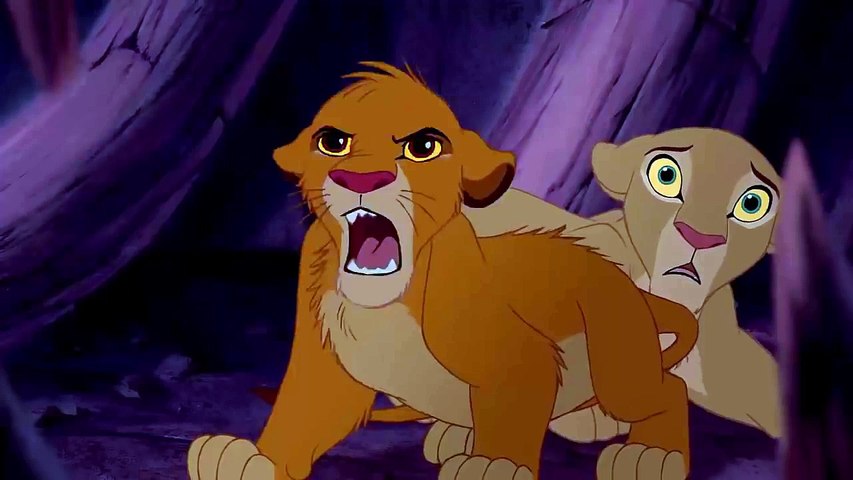
Simba does get to the elephant graveyard, placing himself and Nala in imminent danger thanks to Scar and his hyena henchmen. Mufasa gets there just in time to save them, and Simba learns a valuable lesson regarding deliberate disobedience. The camera lingers on Mufasa’s pawprint in the dirt and how small his cub’s is in comparison. It seems Simba is finally realizing just whose “shoes” he’ll have to fill, how big they are, and how far he has to go before he’s ready. Perhaps this is why father and son’s moment discussing the Great Kings of the Past, tickle-wrestling, and showing their love for each other is so tender. It’s a beautiful example of proper discipline tempered with forgiveness. It’s a moment that could’ve kept Simba from sloth and the accompanying fallout if he were able to hang onto it, and were father and son able to enjoy more moments like it.
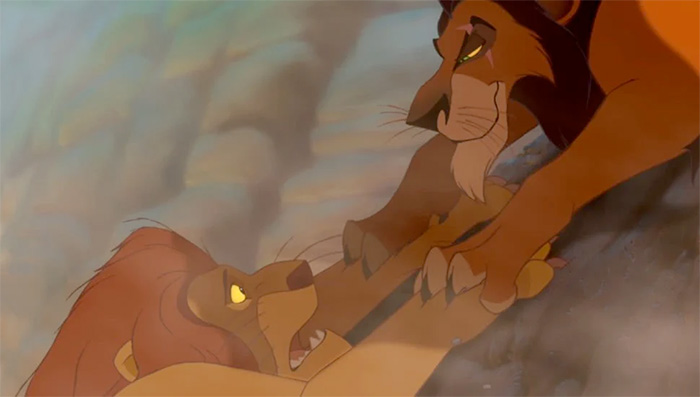
But Scar is not so forgiving as Mufasa, and he has the much deeper and deadlier sins on his mind. When a scheme attached to those sins ends in Mufasa’s murder and Simba is blamed, the cub takes his uncle’s advice, “Run away and never return.” He barely escapes the hyenas sent to chase and kill him, and nearly dies in the desert anyway. Meerkat Timon and warthog Puumba rescue him, agreeing to take him in as their own. The main tenet of Simba’s “adoption” involves learning the duo’s “hakuna matata” philosophy. As the famous song explains, “hakuna matata” means “no worries.” The duo adds “for the rest of your days,” implying this is a permanent and idyllic state. The grieving, convalescing lion cub grabs onto hakuna matata as a way to rebuild his life.
For several years, hakuna matata works for Simba. He, Timon, and Puumba live in a lush, well-watered environment full of vegetation and the bugs and grubs Simba has learned to relish. The three of them presumably spend all their time at leisure, the ultimate example of sloth. Judging from the trio’s constant enjoyment of food, plus a scene that includes loud belching from Simba and makes mention of Puumba’s flatulence, gluttony gets thrown in, too. What and whoever Simba was in the past, he makes it clear that person is gone. During a debate with Puumba and Timon about what stars really are, he does mention “Somebody once told me that the Great Kings of the Past are up there.” But when the other two ridicule the idea, Simba agrees, “Pretty dumb, huh?”
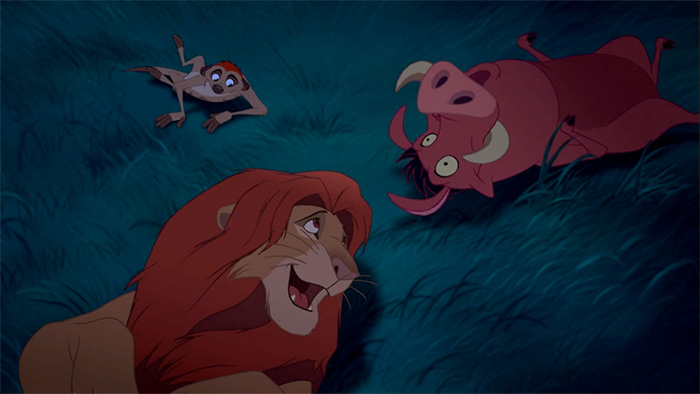
“Somebody once told me that the Great Kings of the Past are up there.”
Reminders of the past, no matter how brief, hurt too much for the hero to entertain. It takes a physical encounter with that past, to shake him up enough to consider abandoning “no worries” for appropriate concern. That encounter happens when an adult Nala tracks Simba down and explains the Pridelands are suffering and dying under Scar’s rule. The food and water supplies are gone, and the vegetation is destroyed. The kingdom’s only hope is if Simba returns, challenges Scar, and takes his rightful place as ruler.
Simba clings to “hakuna matata,” telling Nala, “Sometimes bad things happen, and there’s nothing you can do about it, so why worry?” Nala challenges, “Because it’s your responsibility!” But Simba has lived so long without the identity and implications of his kingship, he’s completely detached from what responsibility means. The last time he had any connection to his birthright, he was an impressionable, carefree cub. He has only known leisure, laziness, and avoiding difficulty for years, so he struggles with why and how to go back.
Taking the Challenge, Earning the Crown
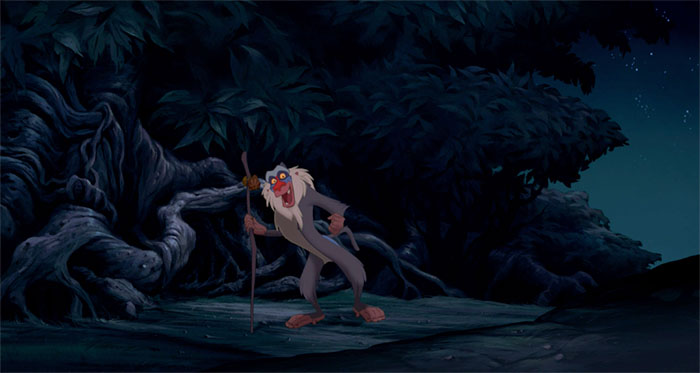
Nala isn’t the only one who has found Simba. Rafiki has as well, much to the lion’s annoyance. When Rafiki reveals a connection to Mufasa and speaks of him in the present tense, Simba can’t help being intrigued. “He’s alive, and I’ll show him to you,” Rafiki promises. And as promised, Mufasa appears to Simba in a vision. “You have forgotten who you are,” he tells his son. “Look inside yourself…you are more than what you have become,” he adds, a slight growl on the word “become” revealing what he must think of Simba’s slide into sloth. However, Mufasa ends on an encouraging, if stern, note. “You must take your place in the Circle of Life…you are…the one true king. Remember who you are.” The last message echoes through the air as Simba begs, “Father! Don’t leave me!” But, it is implied, Simba must take Mufasa’s message and fulfill it on his own, painful past and all. Because as Rafiki puts it, “The past can hurt. But…you can either run from it, or learn from it.” Simba chooses “learn,” running toward something instead of away for the first time in his life.
Nala, Timon, and Puumba catch up to Simba and find they have their work cut out for them. The Pridelands have become a dry, gray wasteland that inspires Timon to ask, “We’re gonna fight your uncle…for this?” And yes, the Simba viewers know, who has been encouraged to run from or ignore difficulty, might have changed his mind. This Simba though, responds with, “Yes, Timon. This is my home.” Such commitment shows an immediate turn toward diligence.
Simba takes on the biggest responsibility of looking for and confronting Scar. He asks Nala to rally Sarabi and the lionesses while Timon and Puumba come up with some sort of diversion. This keeps his loved ones out of danger, whereas before, he might have put them directly in the fire line, intentionally or otherwise.
Simba continues a more careful, diligent trajectory as he prepares for his final battle. Whereas before, he would’ve jumped into a fight and risked injury or death, now he allows logic and controlled, righteous rage to take over. He gives his uncle the opportunity to step down peacefully and, when Scar doesn’t acquiesce, makes his position clear. “Either step down or fight.” Therefore, when Scar chooses to fight, it’s clear to the rest of the pride, and the kingdom at large, which potential monarch will choose violence. Thus, it’s clear who’s more patient, who has others’ interests in mind. Simba’s willingness to negotiate with Scar, to give him a choice, shows the kingdom that he is prepared to win back his throne fairly and put in the work to do so.
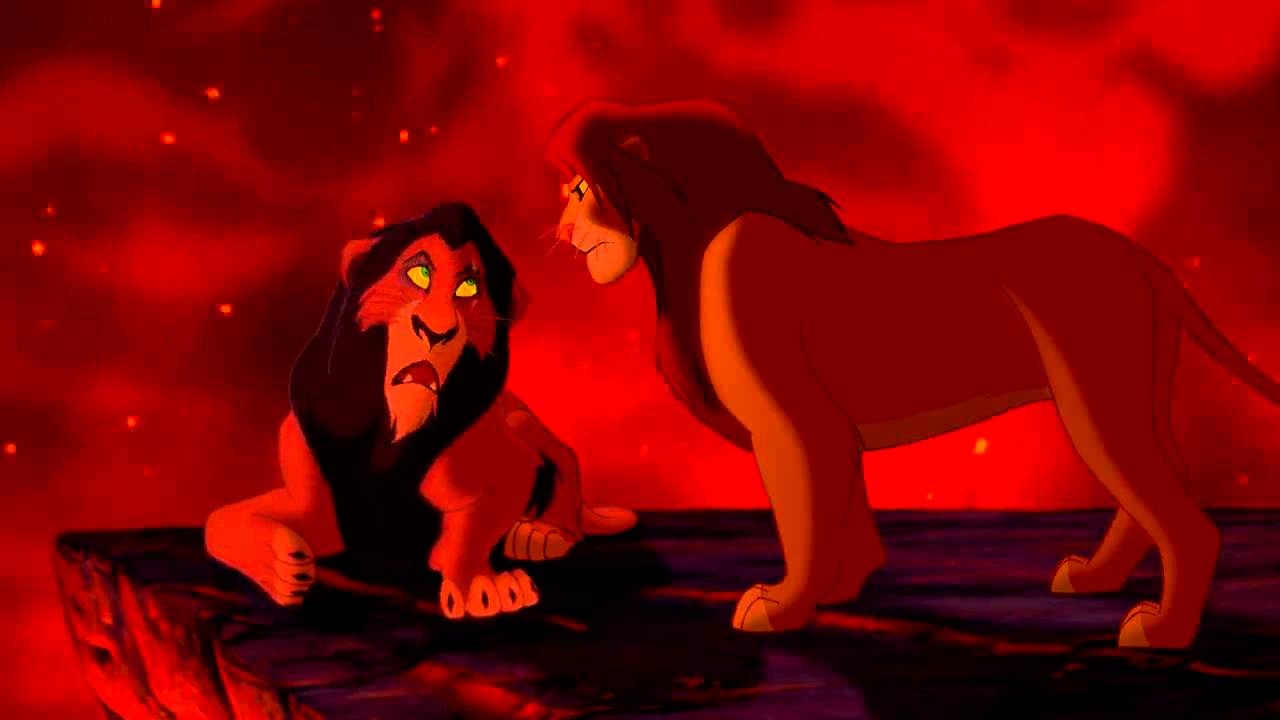
Simba gets one big, defining moment wherein he conquers sloth for good. It comes at the end of his fight with Scar and happens in two parts. The first makes it seem as if Scar will win the fight and the kingdom. “Tell them,” he goads his nephew. “Tell them who is responsible for Mufasa’s death!” Slammed with fresh guilt, Simba has no choice but to admit, “I am,” as Scar told him years ago. Scar pounces while Simba has his guard down, ready to land a killing blow. He has his nephew in the exact position Mufasa was in before he died, hanging off a cliff. But Scar’s ego is so inflated, he can’t help gloating over this, and leaning in to tell Simba his “little secret”–he was the real murderer all those years ago.
Simba lunges forward, screaming, “Murderer!” and demanding, “Tell them the truth!” Since Simba has said he will let Scar live in exile if he confesses, Scar tells the kingdom, “I killed Mufasa.” But treacherous as ever, he turns on Simba and tries to kill him one more time. His plan backfires thanks to the hyenas, who are incensed that earlier, Scar had betrayed them, telling Simba they were the real enemy and had set up Mufasa’s murder. Scar dies a fiery death. It’s implied the hyenas ate him. Meanwhile, Simba reunites with Sarabi, Nala, Rafiki, Zazu, and the rest of the Pridelands in a triumphant denoument. When Rafiki intones, “It is time,” our protagonist climbs Pride Rock in a restorative rainstorm and gives a mighty, kingly roar, which the lionesses echo in solidarity.
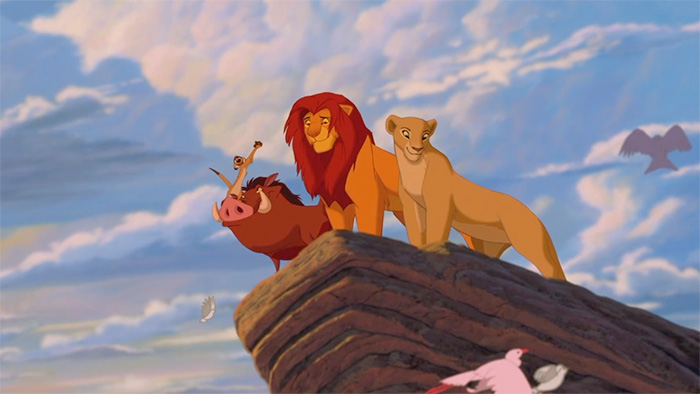
Simba never murdered Mufasa or intended to do anything that caused his death. Therefore, again, his sloth does not factor in to the actual deed. However, his statement, “I am,” could be read as willingness to admit that Mufasa died trying to save him. If viewers pair this with Simba’s immediate triumph over Scar, they will see a monarch who has learned to put in the work of owning up to his mistakes, uncovering truth when needed, and calling on strength when it might be easier to let antagonists win by wallowing in self-pity or sins, real or perceived. Simba’s journey then, does not focus as much on day-to-day diligence as his father probably hoped it would. Still, it has taught him to stand, not run, in the face of difficulty. Physically, mentally, and emotionally, he is prepared to take on the full responsibilities and mantle of a monarch.
Lust: Megara and Quasimodo
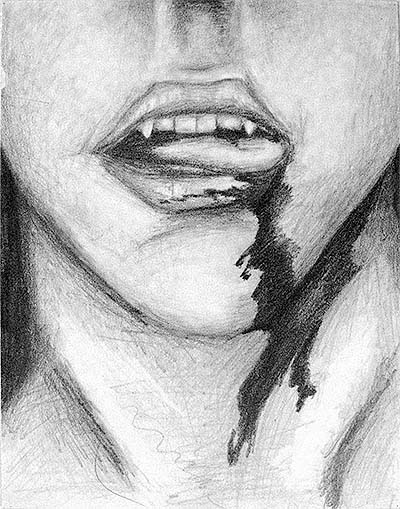
Our last deadly sin, lust, is the hardest to assign to Disney protagonists. First, the most correct definition of lust, as a deadly sin, implies sexual behavior. Lust is defined as “disordered desire for, or inordinate enjoyment of, sexual pleasure” (Catholic Standard). Some churches and organizations, like InterVarsity Christian Fellowship, tone lust down. They define it more as “an overwhelmingly intense desire for something” (intervarsity.org). But even within that, “something” must be specified. So if the overwhelmingly intense desire is for money or wealth, that’s either greed or envy. If the desire is for food, that’s gluttony. The most accurate definition of lust cannot be separated from sex. Past and recent controversies regarding undertones and innuendos aside, Disney is not a place where characters indulge in overt sexual behavior. Therefore, it’s debatable whether we can or should assign this sin to any character, especially a protagonist.
Secondly and conversely, Disney runs on the concept of “true love.” For at least a century–most of the 20th and all of the 21st–this has taken the form of quick, ardent, yet deeply chaste and affectionate, relationships. Nothing sexually untoward happens between Disney couples (certain villains may imply or attempt acts, but are thwarted). The most viewers ever encounter is a G-rated version of a passionate “true love’s kiss.” However, “true love” does often happen between couples who have just met, or have met within days of becoming serious. As odd as it seems then, every couple in the Disney pantheon could be accused of lust. Innocent as it is, each half of a Disney couple saw someone else as desirable and pursued with a single-minded, intense focus, at the expense of other people or obligations. As many adult viewers have said, this is a negative, pro-lust message.
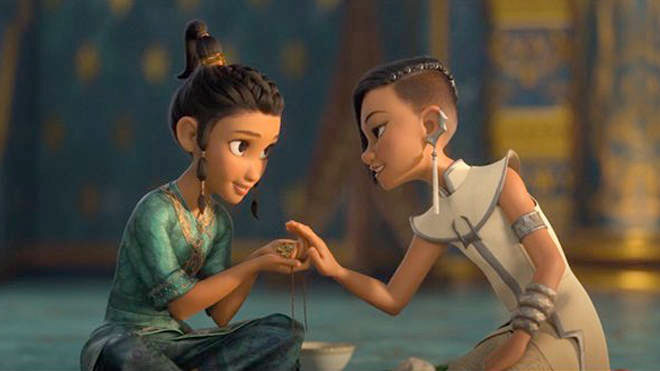
However, one could argue the “true love” between Disney couples is more infatuation than lust, and that it does blossom into real and lasting love. With movies like Brave, Mulan, Frozen II, and Raya and the Last Dragon, Disney has improved upon its tendency to imply marriage is an ultimate goal, and given their protagonists other options. One could also argue Disney characters display healthy and unhealthy attitudes toward relationships in equal measure, and these can lead to critical thinking.
This discussion approached the deadly sin of lust with that lens. We’ll look at two protagonists who are of legal age, who are experiencing feelings and relationships that could turn sexual, and who have been exposed to both healthy and unhealthy attitudes toward love.
For this deadly sin above all others, remember that both guilty parties are protagonists. Neither is a sex addict, a rapist, or someone who uses sex or love as a weapon. Therefore, it’s a bit harder to find this sin in them than it is to find an instance of intentional pride or wrath in Belle or Jack Kelly. These protagonists’ journeys are less about personally experiencing lust, than seeing it in someone else, coming under its influence, and then breaking free of it.
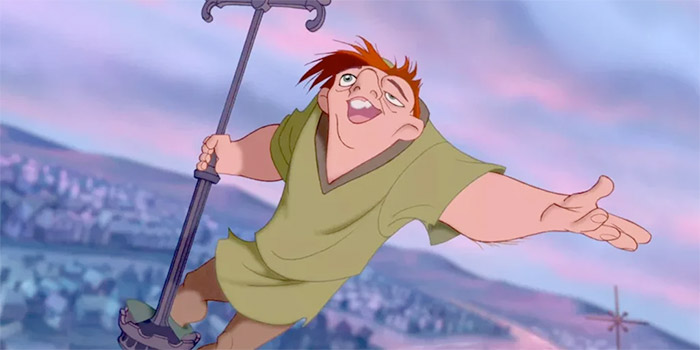
Female protagonist Megara comes first. Her example of lust is more “classic,” and her journey more in line with other protagonists’ and how they defeated their deadly sins. Quasimodo will be our last protagonist, as his experience with lust is very much “guilt by association” and requires a defter hand.
Megara is a deuterotagonist to Hercules in the eponymous 1996 film. Hercules focuses mostly on the demigod’s journey to heroism after he’s kidnapped from his home on Mount Olympus as a baby and adopted by a childless mortal couple. Hercules doesn’t meet Megara until after he’s begun his hero training, and unlike in most Disney films, she’s not interested in becoming his love interest right away. “My friends call me Meg, at least they would if I had any friends,” she says by way of introduction. She makes clear Hercules, or Wonder Boy as she dubs him, is not going to be the first of those friends. Deuterotagonist though she may be though, Meg’s journey out of lust is just as crucial, if not more so, than Hercules’ journey toward heroism.
Megara: Sensual Outside, Sad Inside
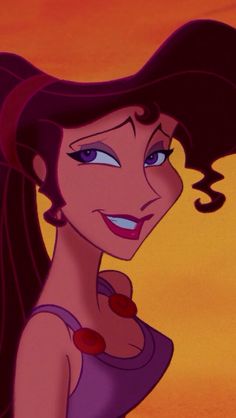
At first, Meg seems the opposite of a lustful character. When Hercules encounters her, she’s in the clutches of water demon Nessus, fending off physical and verbal innuendos. Yet she’s determined to deal with him on her own–“I’m a damsel, I’m in distress, I can handle this. Have a nice day.” When Hercules presses the issue, Meg breaks the fourth wall with a snarky, “Well, you know how men are. They think ‘no’ means ‘yes’ and ‘get lost’ means, ‘take me, I’m yours.'” She sounds like an experienced, jaded woman who’s sworn off males, not someone nursing an intense desire for sexual or sensual pleasure. At the same time, Meg bats her eyelashes at Hercules, literally throws herself toward him, and makes flirty comments. “Did they give you a name along with all those rippling pectorals?” she asks, leaving Hercules big-eyed and stammering. As Hercules’ trainer Phil puts it, he “let [his] guard down because of a pair of big goo-goo eyes.”
In short order, viewers learn how talented Meg is at using her “goo-goo eyes,” and other attributes, to distract Hercules from heroic missions. During his first “road test” in Thebes, she’s the one who rushes up to him crying, “Wonder Boy, thank goodness!” and insisting only he can save two little boys trapped under a boulder. Later, Hercules invites Meg out to a production of Oedipus Rex. She turns her ankle, positioning her body so said ankle ends up in Hercules’ hands. Several similar, smaller moments occur throughout the film’s second act, during which Hercules has to touch Meg or respond to a more pointed suggestion than audiences are used to hearing from a Disney heroine’s mouth. He eventually responds with more intelligence and finesse than during his and Meg’s first meeting. That said, Hercules isn’t aware of Meg’s lust for him. To some degree, neither is she.
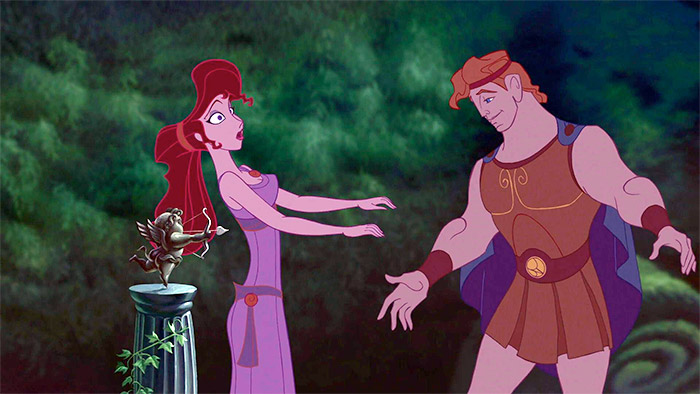
Meg intends to be lustful, more than most Disney protagonists intend to commit their deadly sins, especially at first. In her case, she’s in control of her intentions because she’s being forced to commit the sin. Viewers find out she’s unwillingly working for Hades, god of the underworld and Hercules’ enemy. He has ordered Meg to trap Hercules using lustful behavior, and she has obliged. Viewers get the idea that Hercules began as just another assignment for her, as Hades is the type to use mortals for his own gain. Meg’s major conflict, and her character arc, come from the question of when the lust stops being in her control. In a way, she is a reverse of other protagonists, whose journey out of deadly sin begins once they reach a peak of sinful behavior. Meg has already reached her peak. Her journey encompasses admitting she’s trapped and finding a way out.
Lust, Love, and In Between
The more time Meg spends with Hercules, the more aware she is of his difference from other guys. She still banters, flips her hair, or moves sensually around him. After her solo “I Won’t Say I’m in Love,” though, there’s a sense that her emotions have turned. Meg is no longer using these behaviors as “tricks” to “play” with Hercules. They have the “flavor” of lust, but now they’re softer. They speak more of who the real Meg is, an older, mature, and experienced Disney heroine. Disney literature places Meg at 28, the oldest heroine in the Disney canon by over 5 years. She has had at least one serious boyfriend. So even though Meg drops most of her lustful mask, she can’t, arguably shouldn’t, relate to Hercules as an innocent ingenue. Over time, her banter turns toward serious, open conversations, and those sensual “moves” turn toward signals that ask for gentle, respectful affection.
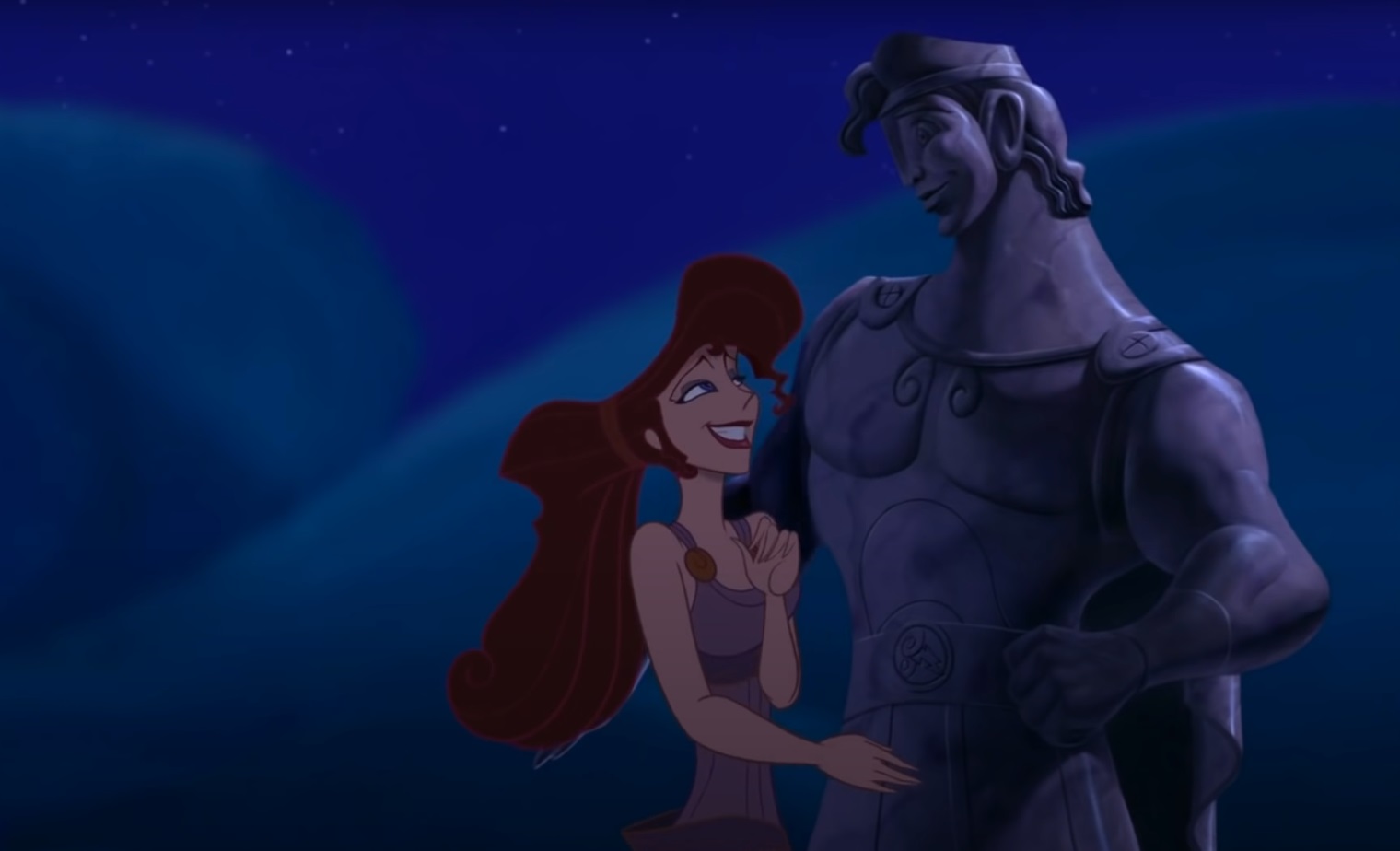
Meg’s slow climb out of lust challenges Hercules and herself to build a relationship after both have given up on the idea. In Hercules’ case, he assumed the super strength for which all other mortals rejected him, plus Phil’s strict training, left him unable to pursue anyone. He also assumed Meg was dangerous because Phil warned him so, and because of her earlier actions. In Meg’s case, she opens up to Hercules and reveals she’s been badly burned before. The last guy she trusted not only rejected her, but left her in a position so vulnerable she still can’t talk about it. These are some of the most mature motives Disney has ever tackled, and it’s unclear whether our protagonists can overcome them to find real love. Meg has every reason to eschew real love and go back to lust.
As Hercules heads toward its climax, it seems Meg will choose lust. As Hercules and viewers learn, she literally has no choice. She sold her soul to Hades to save her former “true love’s” life, only for him to reject her. Now there’s no way out. She doesn’t state it outright, but it’s clear Meg no longer believes in love. She settles for either lust or a close facsimile of love, something she can temporarily enjoy with guys like Hercules until they find out she’s the traitor.
Indeed, when Hercules discovers the truth about Meg’s motives and history, he’s hurt enough to walk away. The wound goes particularly deep because Hercules had traded his powers to Hades in exchange for Meg’s freedom. But with Meg’s agenda exposed, Hades is the only one free–to unleash destruction on all Greece and kill Hercules if he wishes. Meg will end her life too, as nothing more than collateral damage.
Crazy Little Thing Called (True) Love
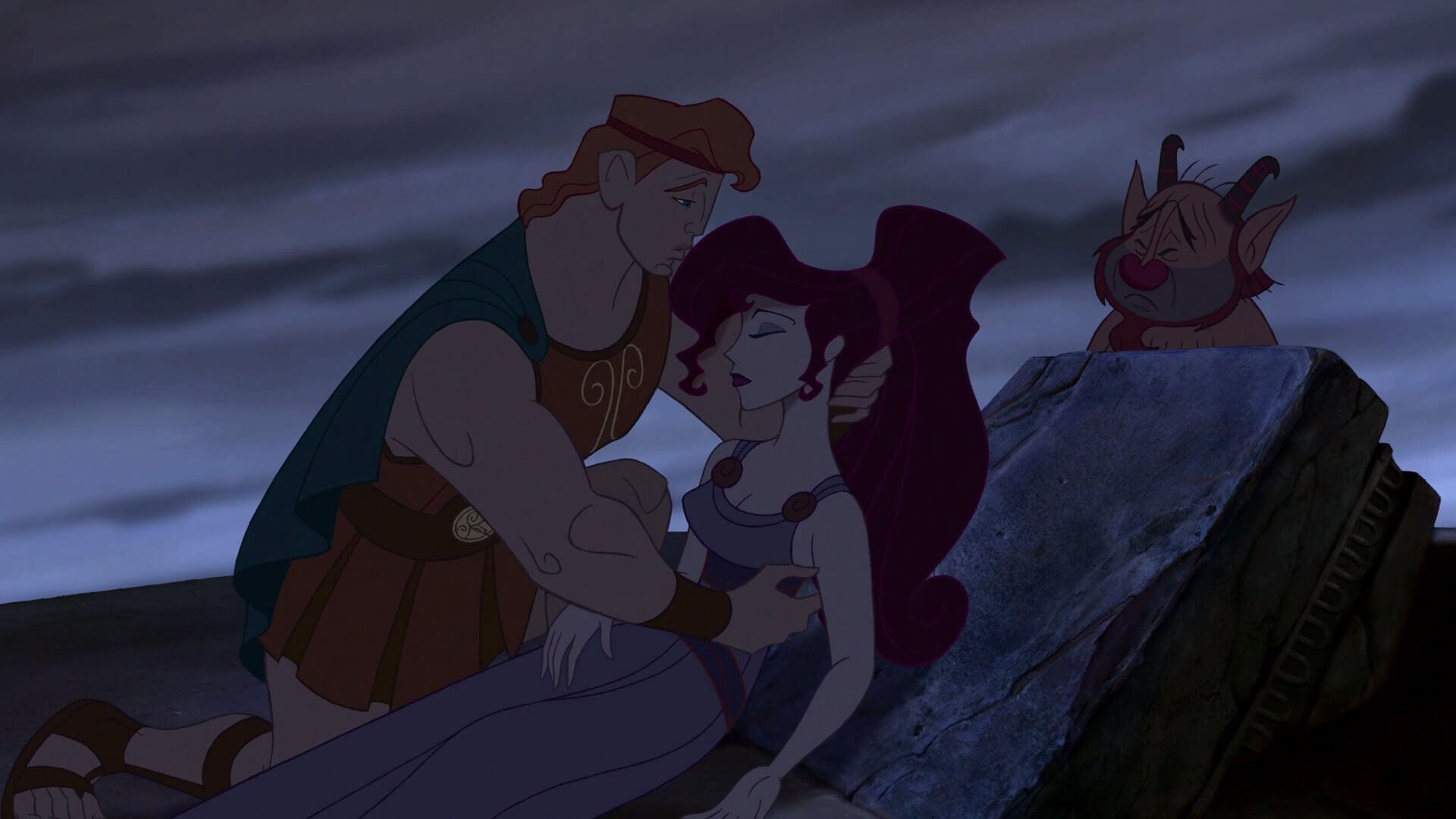
“People always do crazy things when they’re in love.” It becomes Hercules and Meg’s special phrase, comparable to other couples who have a song or a code for “I love you.” In their darkest moment our lead couple, especially Meg, gets a chance to prove this. Given time to remember the good-hearted girl Meg is, Hercules determines to battle Hades, powers or not. He defeats the Cyclops Hades has unleashed on Thebes, but Meg is mortally injured in the battle. As a result, Hercules regains his godlike strength, since injuring Meg meant Hades broke his promise not to harm her. However, it seems Hades has already won, since Meg is dying.
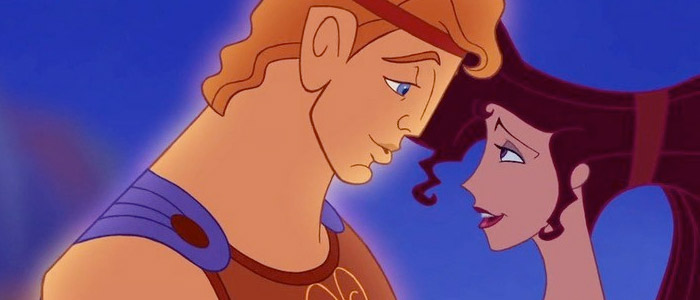
In a last moment with Meg, Hercules learns she placed herself in imminent danger to save his life. “People always do crazy things when they’re in love,” are her last words. They reveal she crossed from lust to love in her final moments. Not only that, she learned to trust that Hercules could, and did, love her back, and would put her first as a testament to that love. Hercules stays true to that, volunteering to traverse the River Styx in an attempt to reclaim Meg’s soul. Zeus warns him he may not succeed, and if not, Meg can be saved, but Hercules will die, having permanently lost godhood.
Hercules takes the risk anyway. When he does win back Meg’s soul, both parties are restored to life, and Hercules chooses to stay on Earth with his true love. This marks both Hercules’ true heroism and Meg’s final deliverance from lust. She is free from Hades and his twisted version of love. Better, Meg is free to pursue love on her terms, with someone who has learned what that is alongside her. They can now continue to teach each other, for as long as they live and beyond.
Quasimodo: Half-Formed Love, Complete Heart
The final protagonist dealing with a deadly sin is also the most controversial. Quasimodo, protagonist of The Hunchback of Notre Dame, is a hero audiences don’t want to accuse of any sin, let alone lust. Put Hunchback and “lust” in the same sentence, and most Disney fans are far more likely to fill in “Frollo,” the film’s intense, power-mad villain.
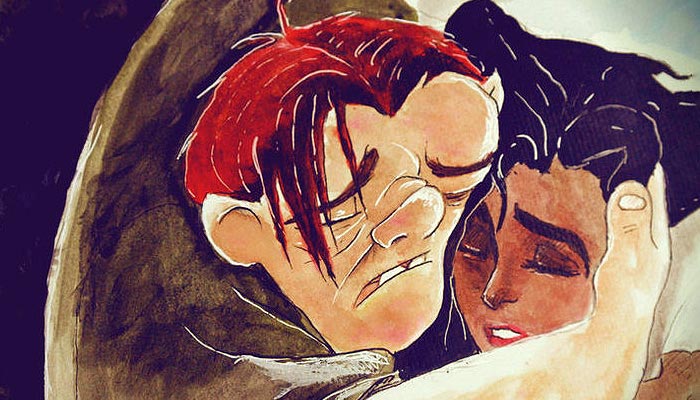
Those fans would be right. Judge Claude Frollo is the darkest and most dangerous of animated Disney villains, and he is certainly the most lustful. The filmmakers aren’t subtle about this, either. Frollo spends the entire film lusting after heroine Esmeralda, sniffing her hair, hissing innuendos, smirking at her dance performances, and singing that his “burning desire” for Esmeralda “is turning me to sin.” Why then, would anyone accuse protagonist Quasimodo of the same sin they know for sure his villainous counterpart committed?
The answer is twofold. First, Quasimodo’s lust is of a different type than Frollo’s. Quasimodo’s lust is based on Esmeralda’s virtue, not her perceived evil or sensuality. He does acknowledge Esmeralda is beautiful, but unlike Frollo, Quasi’s acknowledgment is more about being a red-blooded, human male who notices and appreciates an attractive female. Therefore, like Meg, Quasi experiences lust in a way that leaves pain behind, but prepares him for real love.
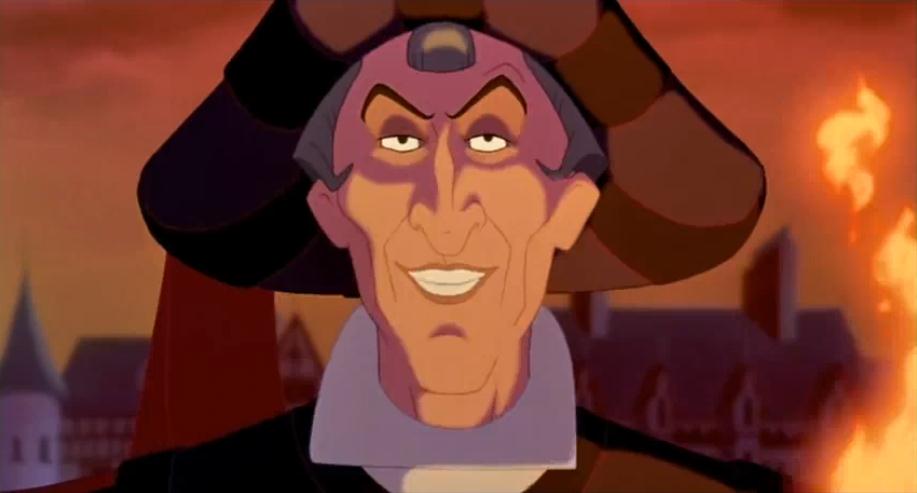
Second, like Meg, Quasimodo is entrapped. He hasn’t sold his soul to Frollo, but Frollo is his “master” and the only parental figure he has ever known. Any concept of love Quasi has, comes from this man, who has a twisted concept of the emotion. For Quasi, the journey out of lust less about overcoming intentional sin, than overcoming a mindset that could become sin if left untreated, thanks to the influence of an abuser. Quasimodo’s heart is in the right place. Dealing with his deadly sin is a matter of deciding what to put inside that heart and how to nurture it.
What is This Thing Called Love?
When viewers meet Quasimodo, he’s spent his entire life, 20 years, in the bell tower of Notre Dame. He’s been “kept locked away where no one else can see” since Frollo discovered him as a baby. Frollo was prepared to drown the infant, calling him an “unholy demon” because of congenital deformities. The Archdeacon, invoking fear for Frollo’s immortal soul, convinced him to raise the child as his own. Unfortunately, Frollo took this as an opportunity for abuse, giving the baby “a cruel name…that means ‘half-formed,'” barely educating him, raising him in isolation, and instilling in him a fear of “eternal damnation.”
Quasimodo now calls Frollo “Master” and serves him without question, at the expense of his own needs and desires. When he lets slip his longing to attend the Festival of Fools, Frollo quashes it. Quasimodo is repentant, but Frollo pounds his imagined sin into him, using the song “In Here” to remind his adopted “son,” “You are deformed, and you are ugly…I am your only friend…be grateful…obey and stay in here.”
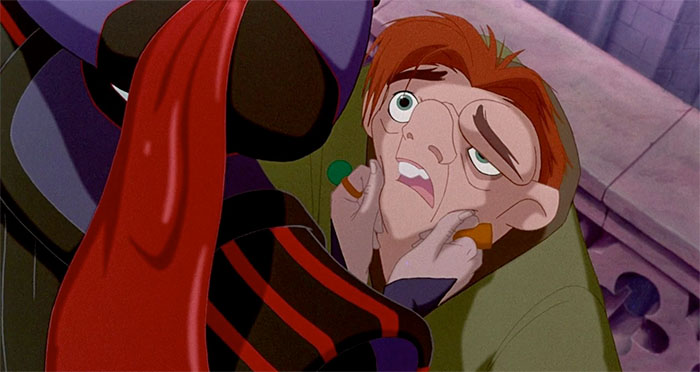
Despite Frollo’s abuse and gaslighting, Quasimodo maintains a kind and imaginative soul. He nurtures a weak baby bird, encouraging it to fly. He carves and paints beautiful wood replicas of the villagers he sees on the streets of Paris each day, and crafts miniature stained glass mosaics. He cultivates deep friendships with gargoyles Laverne, Victor, and Hugo, who might be imaginary or alive (the film indicates the latter, but viewers hotly debate the issue, and a case exists for both sides). Still, Quasimodo doesn’t know what real love is, especially the love between romantic partners. He appears to have a concept of family love, but Frollo has so twisted that, it reads more as compliance. Viewers don’t know much about Quasi’s spiritual life, but it’s not a stretch to imagine he sees God as a higher representation of Frollo.
When Quasimodo meets Esmeralda, it makes sense he’d jump straight to “love.” His initial reaction and awed look indicates appreciation of her beauty, as any male or even female might experience. She has striking features–dark skin, black hair, and green eyes. Genetically, this is not only rare, but highly improbable, even with one Black or Brown and one Caucasian parent, because green eyes only come up 25% of the time at the most. But Quasimodo’s appreciation sinks deeper and moves toward infatuation, then lust, when he sees Esmeralda again.
“Because You Were Nice to Me”
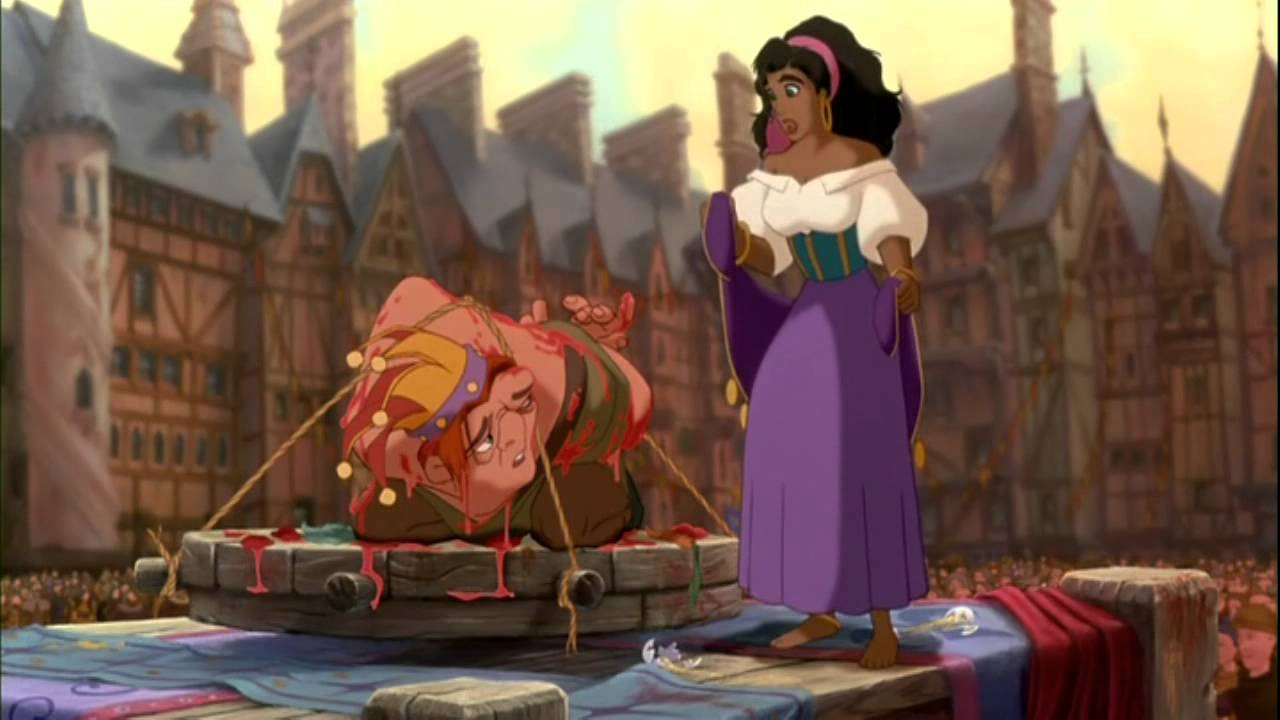
On Quasimodo and Esmeralda’s first meeting, in the middle of the Festival of Fools, she thought he was masked for the King of Fools contest. This worked in Quasi’s favor, as Esmeralda didn’t find his face repulsive. But it backfires when, as the contest begins, Esmeralda pulls Quasimodo up onstage to compete. Quasi wins, much to the crowd’s delight, and is honored to be chosen. His triumphant parade through Paris could’ve ended his day at the festival on a great note. Instead, one of Frollo’s brutish, overly enthusiastic guards elbows a friend and says, “You think he’s ugly now? Watch this!” A piece of rotten fruit is lobbed, and the crowd turns on the hero in a wrenching example of mob mentality. Quasimodo ends up tied on a revolving wheel, naked back exposed, while the crowd continues to abuse him.
Esmeralda breaks out of the crowd, a shaft of light falling across her figure while an angelic choir interrupts the tumult. She offers her hand with a sincere apology and a, “Don’t be afraid.” She then defies Frollo to cut Quasi’s bonds, and leads Frollo’s guards on a chase through Paris in much-needed comic relief. Quasi retreats to his cathedral, crushed under the weight of Frollo’s condemnation, but filled with “love” for Esmeralda. As she sings “God Help the Outcasts,” Quasimodo looks on in wonder and infatuation. His “crush” will become gentle lust, as his desire to have Esmeralda all to himself and shower her with what he sees as love gains intensity.
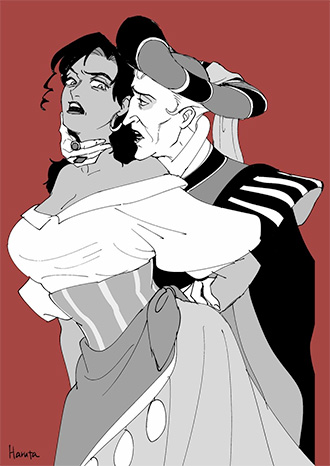
Quasi gets his chance to show Esmeralda his version of love after the latter claims sanctuary from Frollo in the cathedral. Notably, she does so after a truly lustful, innuendo-filled scene Quasi was not privy to. Frollo had found Esmeralda with Phoebus inside Notre Dame and ordered the latter, his new captain of the guard, to arrest her. When Phoebus informed Frollo of Esmeralda’s sanctuary, Frollo took the opportunity to grab and grope her, sniff her hair, and tell her, “[I’m] imagining a rope around that beautiful neck.” After such a scene, it’s almost a relief to watch Esmeralda interact with Quasimodo, who focuses entirely on her kindness and goodness.
The problem is, Quasimodo’s exploration of Esmeralda’s character doesn’t go much deeper than her rescuing him at the festival. He contrasts her with other Roma, whom Frollo has taught him are evil. Esmeralda’s not offended, but Quasi doesn’t fully make the connection that because she isn’t evil, neither is her culture or people group. He also doesn’t return the favor when Esmeralda makes observations about his character and interests, such as his artistic talent, care for his bells, and obvious potential for intelligence, humor, and empathy. Quasi compliments Esmeralda in turn, but his observations tend toward surface level. For instance, she’s kind and good–true, but she’s also not as angelic as Quasimodo seems to believe. She belongs in the world of Paris–but is that because Esmeralda is a fully realized person, or just because she’s conventionally beautiful while Quasi is not? Quasi’s dialogue reveals he believes the latter.
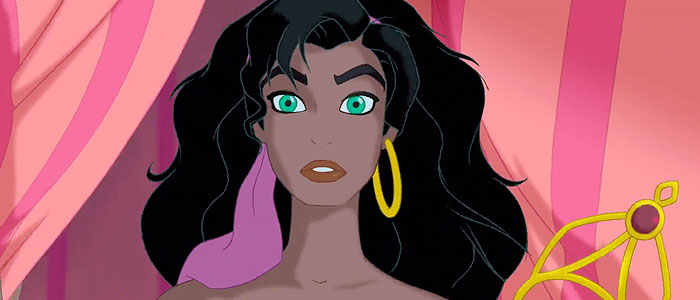
Quasimodo has fallen into the trope and trap of what TV Tropes calls Because You Were Nice to Me. This trope happens when one character becomes attached to another because the second character treated him or her kindly. Often, a rescue of some sort is involved. If the rescue occurs between members of the opposite sex, some form of love or lust often occurs. (This can happen in other pairings but the trope began as heterosexual). Quasimodo and Esmeralda fit the bill, but with Quasimodo, there’s a twist. His intense desire for Esmeralda becomes understandable, even excusable, through this lens. Conversely, it becomes even more important that he see his gentle lust toward Esmeralda for what it is, because he has “fallen for” the first and only person who has treated him with kindness.
If Quasi continues this trajectory, one of two things may happen. He may continue pining for Esmeralda to the point of becoming heartbroken beyond repair, thus proving Frollo’s twisted logic about being unlovable correct. Or worse, he may allow a broken heart to become full-blown lust, the type that Frollo indulges in. Either way, Frollo wins, and Quasimodo becomes our first and only protagonist to stay trapped in deadly sin.
Esmeralda as the Madonna
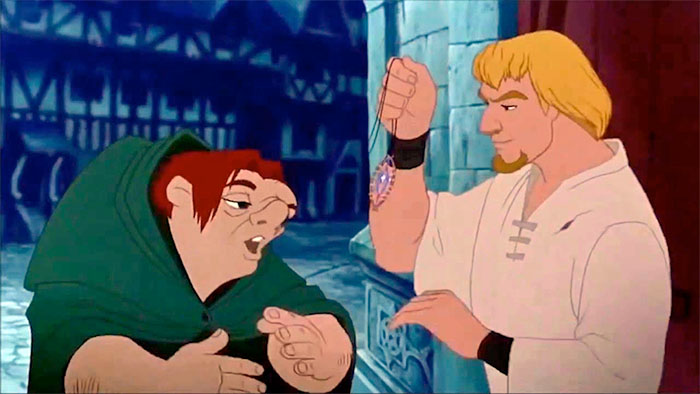
For much of The Hunchback of Notre Dame, Quasimodo stays on a collision course with option one. He maintains friendship with Esmeralda, and unlike Frollo, doesn’t push for favors. He gets jealous once Phoebus enters the picture, but the jealousy is more obvious to viewers than Esmeralda herself. And for Quasimodo, the jealousy is less about, “Phoebus is stealing the girl I want” than, “I have to protect her from everyone suspicious, including Phoebus.” Still, underneath Quasi’s positive motives, the throb of lust remains. It becomes a tearjerker as Quasi muses about the romantic couples he’s watched over the years. He pictures himself experiencing that happiness with Esmeralda, singing, “Suddenly an angel has smiled at me, and kissed my cheek without a trace of fright.” But he admits even “an angel” such as she could not make a “face as hideous as my face…meant for Heaven’s light.”
Such deep insecurities as Quasimodo’s are where sins like lust love to breed. Roots or not, Quasi’s lust, mixed with hopelessness, reaches its peak in the second act. Teen and adult viewers say Quasi experiences a “Madonna/whore complex.” This is a psychological phenomenon wherein men categorize women in one of two ways. They are either Madonnas–pure, virginal, housewife types reminiscent of Mother Mary–or they are whores, sensual temptresses sent to drive a man into true, full-blown lust and associated sins.
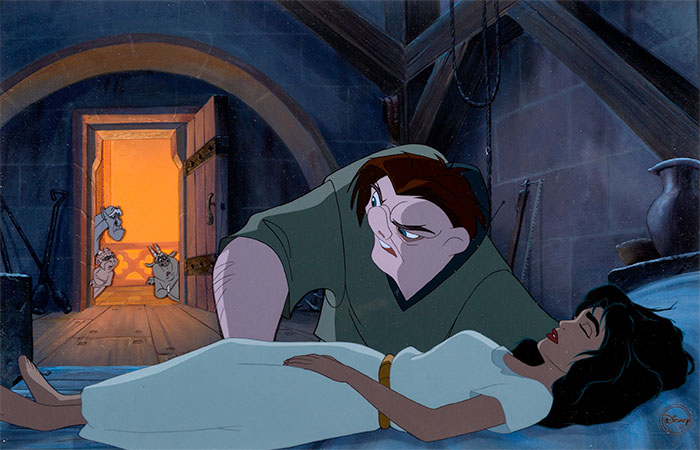
Frollo sees Esmeralda as a whore and paints her as such to justify his own sin. But Quasimodo, who sees Esmeralda as a Madonna, does her no favors, either. In his eyes, Esmeralda is a perfect angel, the only person who would ever treat him as a worthy human being. That’s great for him, but it doesn’t give Esmeralda room to be her own person. It doesn’t give her an identity beyond how she relates to either of the lustful men in her life. As for Quasimodo, this viewpoint further stunts his growth. It keeps him snared in Frollo’s worldview, wherein everyone but Frollo is full of vice and sin, and people like Esmeralda and Quasi must throw themselves on Frollo’s mercy for deliverance.
Coming Into the Sun…With Our Lady’s Blessing
Deliverance comes for Quasimodo, not from Frollo or Esmeralda, but from realizing who these people truly are, and who he is in relation to them, as well as who he is as a person. After Esmeralda brings the mortally wounded Phoebus to Notre Dame in the wake of Frollo’s attacks on Paris, Quasi understands that she and Phoebus are meant to have a romantic relationship. His heart is broken, and he sinks into a depression. This leaves him physically and mentally chained to his bell tower once Frollo discovers he helped Esmeralda escape the cathedral and possibly the city. In a wrenching example of what could happen should he let lust win, Quasi is ready to let Esmeralda, and Paris, burn rather than deal with another rejection.
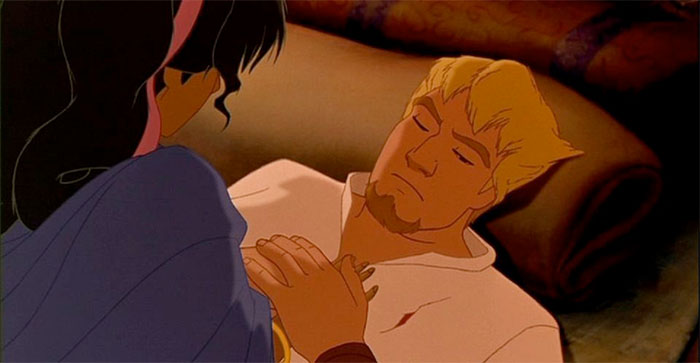
Yet our hero comes to understand he’s made of something stronger than stone. He strikes a death blow against lust and insecurity when he uses superhuman strength to break his chains, climb from the cathedral, and rescue Esmeralda. Her life, with or without him in it, is more valuable to him than his ego and ability to measure up to “regular” guys like Phoebus. Once Quasi declares Esmeralda’s sanctuary and ensures she’s safe in his tower, he devotes himself to fighting off Frollo’s army and saving Paris, the city he loved before he fell for the “angel” at the festival. Although Quasi mourns bitterly at Esmeralda’s supposed death, he’s just as infuriated at Frollo for teaching him the world is a dark and cruel place, a philosophy Quasimodo now knows is a lie Frollo used to cover his wickedness.
Esmeralda lives through her attempted burning, and Phoebus comes through the final battle for Paris with nary a scratch. Esmeralda and Quasimodo are left with a choice. Disney left many first-time viewers wondering which hero would be chosen and who they should root for, considering the “coupling” had never been left so open-ended. Some fans of Hunchback argue that Esmeralda shouldn’t have chosen either hero, because either one sends a negative message. Choosing Phoebus indicates in the end, the status quo wins; only conventionally attractive, abled people are worthy of love. But choosing Quasi indicates that either Esmeralda made her choice out of pity, or lust, gentle and unintentional though it was, was allowed to win.
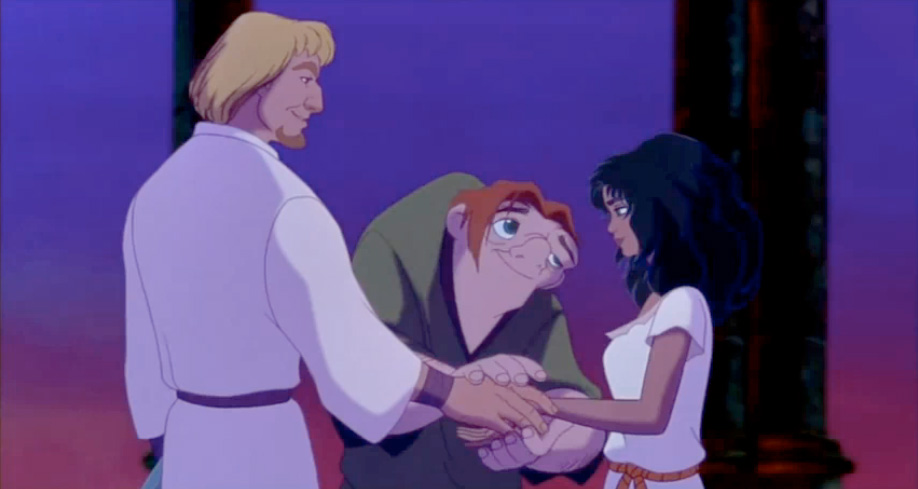
Actually, close analysis shows neither argument holds up. Esmeralda does choose Phoebus, but detractors of this choice usually forget one key scene that happens beforehand. Quasimodo gives the couple his blessing, physically joining their hands as they exchange a romantic smile. In the directors’ commentary, we’re told this handfasting can be part of a Roma ceremony. The directors cut this out for time’s sake. But the fact that Quasimodo does this, indicates a few important things. He accepts Phoebus and Esmeralda as dear friends, who accept him back as an equal, not a token disabled friend. He sincerely wants them to be happy. And as far as Quasi’s struggle with lust, his blessing to Esmeralda and Phoebus indicates he has overcome both it, and the insecurities feeding it. When Quasimodo walks out of Notre Dame into the sunlight, accepts a hug from a strange child, and gains acceptance, he knows Paris now sees him as one of their own. He no longer has to attach himself to one or two people and “keep” them for himself. He can know and love everyone, and experience all the facets of love with all kinds of people.
Human Vices, Heroic Virtues
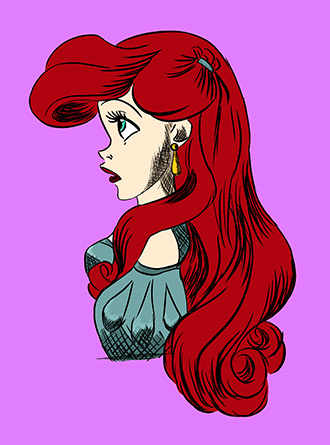
Humans, by their nature, are predisposed to sin. Some religions categorize sins, calling some of them “deadly.” There are seven deadly sins: pride, envy, wrath, greed, gluttony, sloth, and lust. While no sin is “worse” than another, these seven are particularly dangerous, even for fictional humans or human representations, especially those counted as heroes.
These deadly sins are often found among favorite Disney heroes and heroines. Analysis of their journeys through sin and into virtue shows these characters’ flaws make them more relatable. Watching them navigate their personal deadly sins makes those sins easier to spot in real life. More importantly, watching characters like Disney heroes conquer sin gives us confidence that we can do so too, especially in a world that feels more secular every day but often hides more truth about God, vice, and virtue than viewers ever knew to look for.
What do you think? Leave a comment.
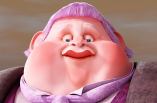










Not a bad list at all, thank you for the read.
I came up with one similar a while back, only I focused on villains from the Disney Renaissance. I chose Gaston for pride, Frollo for lust, Ursula for gluttony, Jafar for greed, Clayton for wrath, Scar for envy, and Hades for sloth. What’s interesting about these choices, though, is the fact that each one’s tales end with a literal fall, almost as though they were descending directly to Hell. Of course, in Hades’ case that descent is quite literal.
Absolutely, and that’s a great list. I did want to challenge myself by focusing on the heroes, though. I can’t remember who on here gave me the idea, but it was born from an observation that hardworking Tiana could be read as having the vice/sin of greed if you looked at her through a villainous mirror.
If you’re looking for another Disney villain that represents Gluttony, you could consider Monstro. Every time you see him, he’s eating something. He even ate Geppetto’s boat!!
Oh, wow, I hadn’t thought of that! Great idea, especially since Pinocchio is an older film with a recent remake. Monstro isn’t on screen much, and he doesn’t have the character development an animal character like Simba does. That said, I think I could tease enough out of him for an analysis.
Ooh that’s true! Never even thought of him.
So slightly on topic, does anyone else feel that Belle is the worst of the modern Disney princesses? She’s supposedly smart (though really, the books she reads seem to be children’s fairy tales), but her intelligence never once comes into play (other than becoming infatuated with the Beast’s library). And then, of course, she submits to Stockholm Syndrome nearly immediately.
And also, the whole point of the story seems to be “some people seem shallow and misogynistic, but they can change.” And yet Gaston is thrown unceremoniously off a cliff.
Whew, talk about a hot take! Belle is actually my favorite, partially because we have very similar interests and personalities. Also, I have Asperger’s/level 1 autism, and I read her as having that as well, which makes me more sympathetic toward her. But as you saw in the article, I can be objective about her behavior, and some of it is not excusable. I also love your take on Gaston–the Beast gets a redemption arc and he doesn’t, when they’re basically flawed in the same way? What’s that about?
I’m glad you brought up that Belle is only shown reading fairy tales, too. I guess you could chalk that up to, she’s in an early literate, almost pre-literate society, so what she’s reading wouldn’t necessarily be seen as aimed at children alone. But with your take in mind, I can see how her love of fairytales in particular would feed an interpretation of, “naive, prideful, submitting to Stockholm syndrome.” Maybe if she had mixed the fiction with history and geography or science? In fact, wow, yeah, now I wish Disney had thought of that. Fell down on the job again, didn’t they? (As Iago would say, THERE’S a big surprise)!
I like Belle. I like that she’s not all fluttered that Gaston is courting her. She knows she’s better than him. From then on, yeah, it takes a rather unpleasant turn.
I dislike Ariel the most, I think, because I see her infatuation with the human world in the light of colonial ideas about European being the ideal to which all other peoples should strive. I don’t know, it just makes me uncomfortable. But in fact the Disney film I hate the most is The Lion King… It’s full of machismo.
Villians dying by falling off a cliff is a Disney standard (Snow White and the Rescuers Down Under, to name two).
Remember that the first fairy tales written down were intended for an adult audience, not for children (Cinderella’s sistes slicing off parts of their feet to fit into the slipper, or Rapunzel’s prince being blinded).
Belle’s not afraid to get dirty or to put herself in uncomfortable situations if she feels it’s right. When she returns to the castle with the wounded Beast, it’s because she pities him, and she realizes that he saved her life. She also knows that it’s the dead of winter, so even though she tried to escape, living with a Beast seems preferable to death by wolf or exposure.
That’s funny—I mind Belle the least. Beauty and the Beast is just about the only Disney movie I don’t mind my daughters watching, because Belle is a smart, funny young woman who detests the uneducated jerk who tries to force her to marry him. The Stockholm Syndrome is certainly a huge issue, but the movie lets us talk about what it means to value people only for their looks, and that some people don’t think women should be educated, and that women should be able to choose their lives for themselves, not have someone tell them what to do. Plus, my girls love reading, and they love the Beast’s library as much as Belle does! That’s their favorite scene in the movie.
Ugh THANK YOU. People always seem so infatuated with Belle but I never got it. Sure, she reads books, but it’s not like she’s reading anything particularly challenging or thoughtful. I honestly always figured it was because she is a brunette (although now that I think about it, so is Snow White and Ariel is a red head… I suppose just Cinderella and Sleeping Beauty are blonde).
Belle’s story isn’t compelling; she’s not an active participant in anything. At least Ariel demonstrates some agency.
Long story short, Belle always bugged me, too.
I’ve got an almost 20-month-old daughter who is the pride and joy of my life. She has some Disney princess stuff (obtained via yard sales) but right now her main obsession is Sesame Street.
As she gets older, I know she’ll probably get more into the princess stage but my wife and I are making sure she also knows the value in outside play and that she is just as capable to compete with other girls and boys.
Belle has some creepy traits that get overlooked, but I like Ariel even less. She gives up her means of communicating so that she can alter her appearance so that she will be more appealing to a man she’s only briefly met. Then at the end, when there’s seemingly a choice of which world the couple lives in, there’s no real question that Ariel will become a human rather than her husband even giving the world of the mermaids a shot. Way too many sexist messages for my taste.
Stockholm syndrome has a psychiatric definition, and it’s a real thing. The way you’ve mentioned it, it sounds like you consider it something a person “submits to,” and imply that Belle’s exhibiting it (and “nearly immediately”) is an example of her being “the worst.” Just wanted to remind you that we should all do our best to avoid promoting the stigmatization of mental illness.
I just saw the musical version (because I confess, this is one of my favorite Disney movies) and I was appalled at the library scene – he couldn’t read! And acted like a little kid when she was reading him books. Which is fine…if you’re a little kid.
I love to read retellings of fairy tales, and I think Robin McKinley’s Beauty is the best version of this. It makes the Beast much more interesting.
I just wrote a 25 page paper about how much Disney princesses fuck up the socialization of young girls. For a while I thought Belle was all right, until I started researching. I had never even considered the fact that she was just as obsessed with romance as the other until I actually stopped and listened to the lyrics about the book she was reading in “Belle”
Belle was always my favorite Princess. I don’t think the princesses are bad role models necessarily, but I do think that too often they are presented in a vaccuum. As if they are defined by their princessness, and by definition, therefore, by their PRINCES.
Mulan was sort of a step in the right direction, but I think Disney should (and they never will!) do something like Revolutionary Girl Utena, or Princess Knight.
I actually loved Belle when I was a little girl. I also remember that a bunch of the girls in my school (I was in 2nd grade when Beauty & The Beast was released) started reading more because Belle read and we wanted to be like Belle.
Great article. But there’s always something unsettling to me about seeing women’s bodies cast as the embodiment of sin. Probably because there’s such a huge backlog of those in the history of art. There’s nothing particularly revolutionary or new about suggesting that women represent lust and vice, and that we should have left that apple alone.
Arguably, yes. I tried to be clear that biological sex, among other factors, was never a reason or a precursor to sin, but maybe I should’ve been even clearer. If it comforts you, the only reason I did the male/female setup was that I had strong pairings for several of the sins, and once I started down that road, I had to finish it that way. Otherwise, the article would’ve become disjointed.
Especially since that sin is mostly about what sin the society at large projects onto them.
Emperor Kuzco from The Emperor’s New Groove would be perfect for vanity.
Yes, he would. However, that leads us to the argument, is Kuzco really a protagonist, or is he more a reformed antagonist? (I wouldn’t say villain outright, but he’s not somebody I sympathize with. At the very most, I’d give him anti-hero. See Lightning McQueen for another example).
There’s an idea that Winnie the Pooh characters are based on the 7 deadly sins, but then there’s others that show those same characters with mood/personality disorders. Kinda interesting to look up if you’re bored.
Thanks for the tip!
good job.
This is like traveling through time.
While Ratcliffe and Frollo are the poster boys for Greed and Lust respectively, I would pick for the others…
Vanity…Gaston
Wrath…Captain Hook
Gluttony…Monstro the Whale
Sloth…Hopper
Envy…Scar
And for all seven…Peg-Legged Pete
One I always thought of for wrath was Yzma. She spends the entire film trying to kill Kuzco because she’s mad at him for firing her. Plus she loses her temper rather easily.
My wife had a friend in a crazy Christian family who wasn’t allowed to watch Mulan because it gave women a false sense of empowerment. Seriously, that was the phrase they used.
Are. You. Kidding Me???? *facepalm* That kind of thing gives Christians such a bad name. It makes me ill.
I think Ursula could be envy.
Yes. Had I focused on the villains, I’d have chosen her for envy. She only mentions it once, but her motivation comes from envy of Triton and his court. She was banished from the palace, she never forgave Triton for that, and we don’t know if she should have or not (was it a fair banishment)? There are theories floating around that Ursula and Triton are related, and while we know from Return to the Sea that Ursula has another sister, Morgana…I tend to think Triton’s in the family tree as well.
I would peg the Evil Queen from Sleeping Beauty as envy.
Oh, that’s a good one! I like her as Envy.
Yes, the Evil Queen fits envy as well. If I were to do this again, focusing on the villains (and trust me, I am *not* doing an article this long any time soon), :), the challenge would be, who goes further with her envy? That is, is the “bigger” sin turning yourself into a crone and poisoning your victim, *knowing” there’s an anecdote to said poison and hedging your bets about whether it will ever be used? Or, is the “bigger” sin holding your victim to an ironclad contract by which said victim will be enslaved if she fails to meet the terms–*knowing* that you have already set up the victim to fail? (And yes, the answer seems obvious. But remember that in Ursula’s case, her victim has a living, attentive, royal parent, so arguably, she can’t carry her envy to desired ends like the Evil Queen could–and did).
Loving these, still cherish these movies as part of my childhood. Sleeping Beauty was always my favorite.
Me too. The movies are beautiful. Sleeping Beauty was always my favourite, also. Snow White is my Dad’s favourite.
The original story of Cinderella is one all about lust. Cinderella represents the untouched virgin, radiantly beautiful and pure. After the Prince’s obsessive search for the beautiful creature he danced with (I think actually over three nights, not after just one ball) he comes up on Cinderella’s house. Her two stepsisters have to cut off parts of their feet to fit them into the shoe, symbolizing either menstruation or bleeding associated with the breaking of one’s hymen, take your pick. Cinderella is the lone non-bleeder. Most people seem to think this represents her not having reached sexual maturity yet, which is really creepy.
What Cinderella’s tale boils down to is a man’s obsessive quest to find the one woman beautiful and pure enough for him to stick it in. Some versions paint her as sort of a tease, which amps up the lust factor even more.
WOOOOOOWWWWWW. I had never heard that take, and it is both incredibly creepy and fascinating. (I feel my inner Spock going, “Brrrrr….”
The scene where Cinderella and the Prince are singing “So this is love” is pretty lusty (not least because of all the “mmm mmm” lyrics. And they don’t even KNOW each other! That would be lust, kiddies, not love. It’s also worth noting that Disney sets it up such that she doesn’t even know he’s the Prince when she dances and sings with him. She is solely attracted to the guy for his good looks, not his wealth (and definitely not his personality — the film neglects to give him one).
Good point. I love the movie, but I’d forgotten that she fell in love with the prince before knowing who he was. It really was just a matter of physical attraction, wasn’t it?
I definitely do remember that the Prince never speaks in the movie (aside from singing a few lines in “So This Is Love”), so good call about his lack of personality.
My picks are:
– Tiana (Princess and the Frog) for Pride
– Giselle (Enchanted) for Lust
– Kuzco for Greed
VERY cool, and I’m sure everyone would have a slightly different opinion about some of them. Mine is this. Put Esmerelda from Huntchback for Lust. Snow White or Sleeping Beauty for Sloth. Cinderella for Vanity. I can’t come up with one that would really fit wrath. Ariel is the only one that comes to mind ever getting really mad, little rebel. Tinkerbell for envy.
Mirabel is greed because she wants a power like her family, but she never got one.
I haven’t thought of that, if Disney really does plan to have an Encanto 2 we may see who and the sinister lore of this movie is the 7 deadly sins.
Disney certainly gave us some crazy characters. But hey, that’s why we love them, am I right?
This was soooo great! I would only add Lady Tremaine as Sloth as well. She does nothing!
Which other villain would be suited to sloth?
I thought about this. How about Cinderella’s step mom and her step sisters?
I kinda hate all this Disney Princess madness from the past few years but I genuinely respect/like what the writer is doing here. Good job!
Cinderella was all about looking the part of a princess – hence vanity, and Belle was all about just loving someone, ignoring what everyone else though and what they appeared to truly be, hence lust.
Arielle lusts for Prince Eric Winnie the Pooh can’t stop eating honey Scrooge McDuck is pretty greedy Lightning McQueen keeps trying to run away from his civic responsibilities (sloth) Scar is envious of Mufasa and Simba Maleficent gets so mad that Aurora won’t die that she turns herself into a dragon (wrath) Gaston’s pride is his downfall.
What about Disney songs which represent the 7 deadly sins?
Songs…now there’s an idea! There’s such an extensive catalog of them, you could spend weeks on the brainstorming alone. And remember, they wouldn’t necessarily have to be villain songs. It’s all about how you “read” the songs (lyrics, motivation behind them, who sings them and when, and so on).
The song Gaston sings in beauty and the beast represents Pride.
Yeah…I mean, it’s named after him, hello! But again, the article was focused on heroes. Had it been villain-focused, he’s a shoo-in for pride.
“Love is an Open Door…”
Need I say which one?
Lust: Hellfire from Hunchback of Notre Dame
Gluttony: Spoonfull of Sugar from Mary Poppins
Greed: Mine, Mine, Mine from Pocahontas
Sloth: Hakuna Matata from Lion King
Wrath: My Lullaby from Lion King 2
Envy: Part of Your World from The Little Mermaid
Pride: Mother Knows Best from Tangled
These are just off the top of my head so some of them aren’t perfect fits.
The only one I might dispute you on is Spoonful of Sugar, since it’s more about Mary Poppins getting Jane and Michael to do something they don’t want to do by injecting fun into it. But I see your point. If you have to be bribed every time you’re required to fulfill an obligation, you don’t learn the value in fulfilling them. You also become a glutton for those bribes, which for little kids, often do take the form of indulgent food and drink. These can evolve into something else as the gluttons grow up. But, as we see in so many unhealthy relationships with food, even adults persist in thinking that certain foods are only for “rewards,” so they overindulge.
Pride- You’re Welcome from Moana.
Mine, Mine, Mine from Pocahontas, at least for greed.
The Lion King- Be Prepared.
Reps pride really well and is the best song from the movie IMO.
Lust is definitely “Hellfire” from the Hunchback of Notre Dame.
Shiny from Moana if Pixar counts.
I would think Gastone would be pride.
Gluttony is a tough one to peg. I guess technically it is overindulgence in anything, but that crosses over into greed’s territory more often than not.
Yeah, that one’s tough. Remember, the original concept of the Seven Deadly Sins came from a society where food, work, and sex were viewed and treated very differently from now. It was arguably easier to attach a sin to something specific like food. It was also easier to peg overindulgence in food as sin, because the lines between those who could overindulge–who could afford filling quantities–and those who couldn’t, were so much clearer. As in, a clergy member could point a finger and say, “You are sinning by overindulging while your neighbor starves, and I see this every single day.” Now, not so much.
I feel like Merida from Brave (at the beginning) could be up for Pride or Wrath.
She could. But I wanted to challenge myself by assigning a sin to Belle, my favorite princess, and I felt like Wrath was too stereotypical for a redhead. I also felt like Elsa, who I assigned to Wrath, was carrying a lot of anger turned inward. As seen in the article, that can be as dangerous, if not more so, than the outward, explosive version.
Frolo should have been lust.
Gaston should be pride… the handsome devil!
I’m not going to name too many, but I feel like Ursula embodies all (or almost all) of these.
Kind of a random list but, Greed:Kuzco Envy: Evil Queen Gluttony: Pumba Sloth: Aurora Lust: Megara Wrath: Hades Pride: Gaston.
Belle is vanity, because the villain thought her boobs and pretty face didn’t make her people?
Ariel fits really good as greed.
Ariel collected all “treasure” from the surface and wanted to live there, so that can be considered greedy.
Jasmine and wrath, didn’t she smash something in that end fight with Jafar!
Belle had the mirror which you could associate with vanity.
Wow. Very well done. This article shows a lot of deep thought and analysis of these characters. There were a few surprises, too.
The royal character for Envy is the Evil Queen.
Belle does fit Pride and Vanity the most. This is a very good article! Thank you for the read!